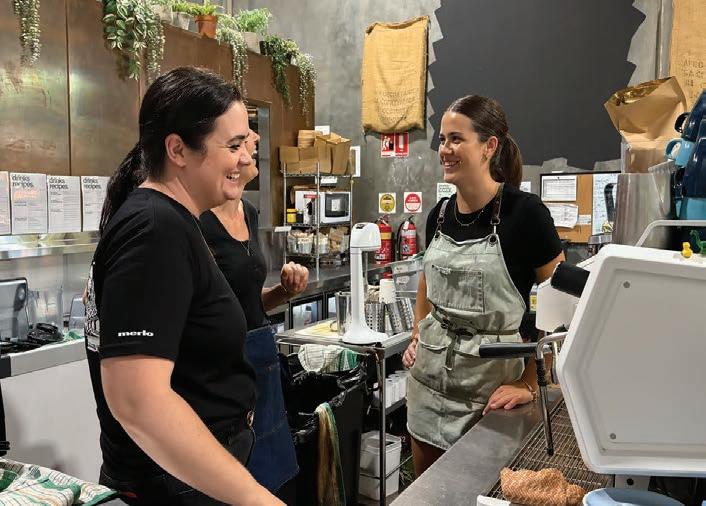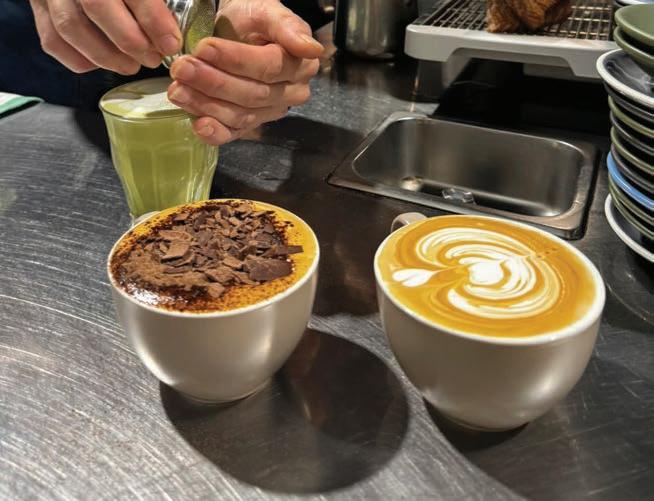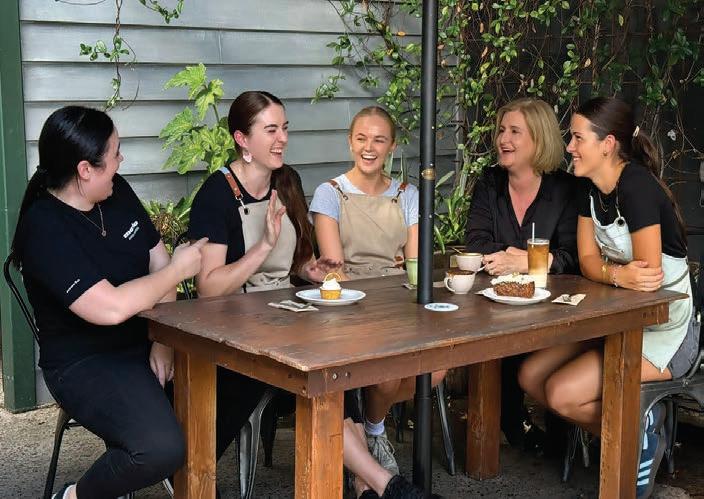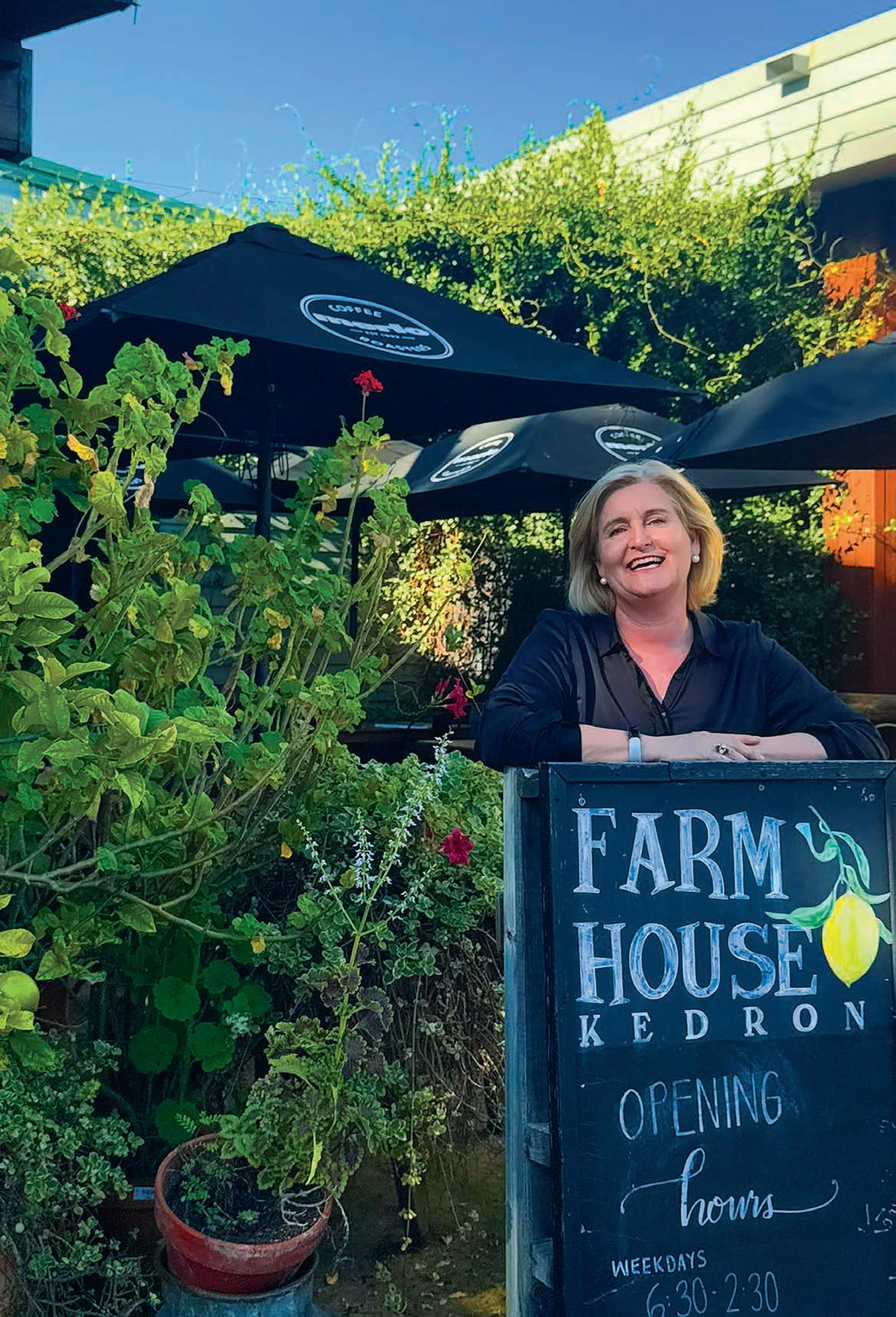Decaf’s road to redemption
MONIN’s Danni Choy shares TikTok-worthy recipes
How to design a café for maximum e ciency
Recreate Victor Vu’s baby owl latte art



Decaf’s road to redemption
MONIN’s Danni Choy shares TikTok-worthy recipes
How to design a café for maximum e ciency
Recreate Victor Vu’s baby owl latte art


The TONE Touch 04 is the latest innovation from the Swiss precision brewer manufacturer TONE Kaffeemaschinen AG. This batch brewer builds on the proven Touch 03 Boilerless Technology and is now optimized for brews from 1 to 4 liters. The Touch 04 has 4 recipe buttons that can each be programmed to execute two functions. For example, one can program 4 coffee or tea recipes and 4 dynamic water profiles for dispensing set quantities when the brew basket is removed. By optimizing water reach and penetration of the coffee bed, the TONE Touch 04 can achieve higher extractions than any other brewer in the world!
The TONE NITRO incorporates an integrated cooler and uses nitrogen from the air instead of high-pressure nitrogen cylinders to deliver maximum performance and space efficiency in the workplace. The addition of nitrogen enriches your beverages by giving them a smooth, velvety texture with a foamy surface no matter whether iced coffee/ tea or sophisticated cocktail creations. Nitro has a 5 liters plug & play canister and works in unison with Touch 01 to deliver a total solution that generates a wow factor.

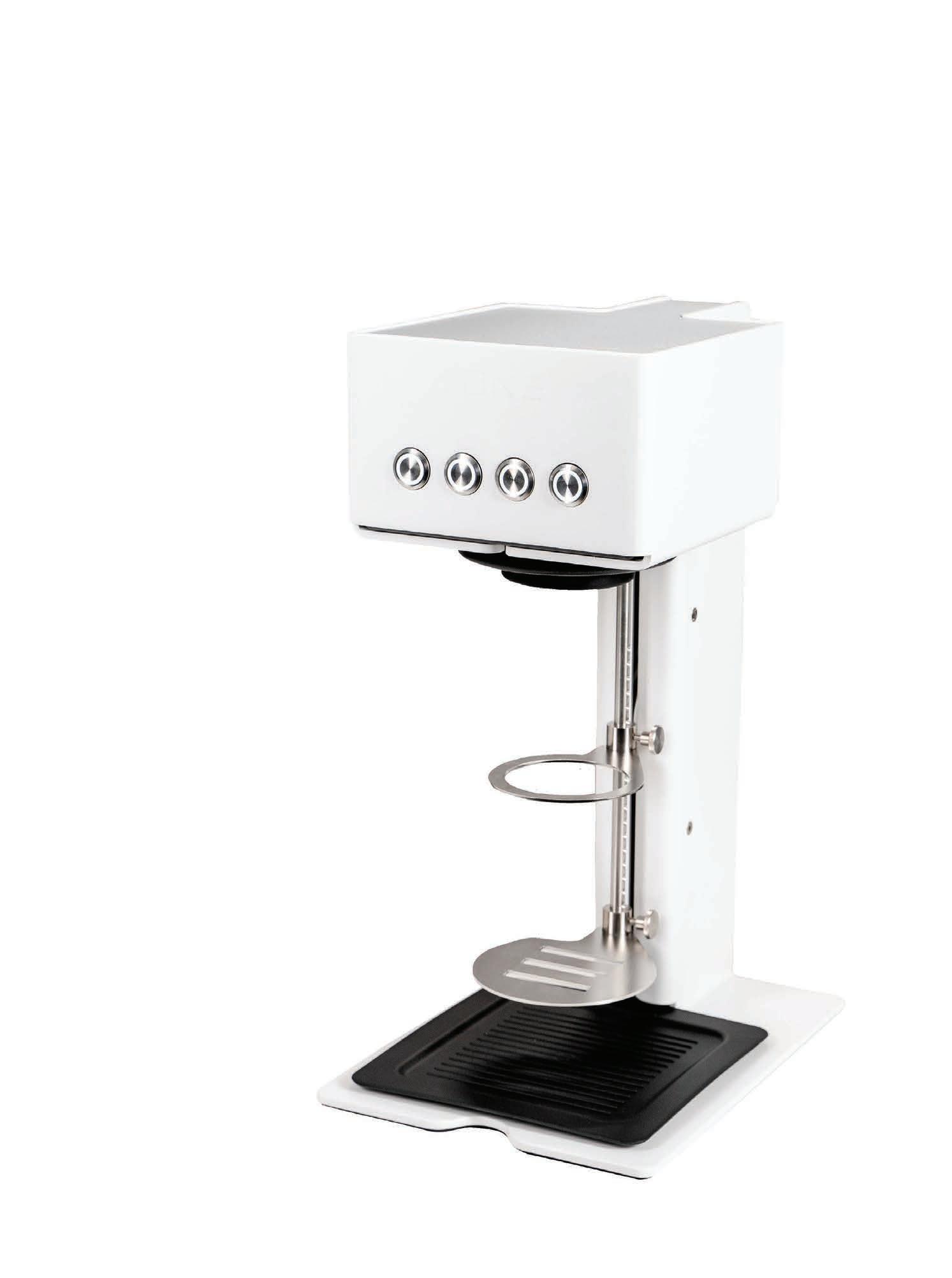
TONE‘s powerful Touch 03 single serve brewer unleashes the full potential of coffee and tea at the touch of a button. The intelligent recipe development system enables 100% customization of coffee and tea beverages including the ability to vary product, volume, flow, strength, and temperature.
The Touch 03 offers controlled agitation, programmable flow rates, and detailed adjustment of pulse patterns at different stages of brewing (e.g. blooming-, turbulence-, development-).
The boilerless standalone brewing system sustainably channels brew water through a highly innovative heating element that eliminates the need for a traditional heating phase. The barista is empowered to easily adjust brew recipes to profile various coffee and tea beverages by varying temperature, brew time, and a host of other parameters.
The most revolutionary brewer on today‘s market has all the operational capability to take the modern brew bar to the next level.

sales@baristagroup.com.au www.baristagroup.com.au







47 SUSTAINABILITY IN EVERY BATCH
16 JITTERS NOT INCLUDED
With the rise of health-conscious consumers, could decaf be co ee’s next big trend?
21 FROM GUATEMALA TO WOLLONGONG
Veronica Ponce reveals how her experiences inspired her to empower other women in the industry.
24 SIGNATURE STYLE
MONIN charts the rise of signature drinks and how they’re revolutionising the co ee landscape.
72 BUYER’S GUIDE
Discover the best dairy and alternatives for your business.
78 GET TO KNOW
Meet the team behind New Zealand’s best café, according to a new international list.
29 INTERNATIONAL MILK RUN
Crossing continents to deliver Riverina Fresh milk to one barista champion.
32 HUNGRY FOR SUCCESS
Blake Carpenter of e Bean Cartel reveals how his competitive nature helps him thrive as a salesperson.
35 BEST OF BOTH WORLDS
La Pavoni explores the symbiotic relationship between domestic co ee machines and cafés.
40 AM TO PM
Café owners highlight the bene ts of operating on a day-to-evening basis.
42 AT THE FOREFRONT OF FLAVOUR
How the team at CACAO scour the world for the best avour combinations.
45 WOMEN ON THE GRIND
Merlo Co ee on how the industry can further tap into the potential of women.
46 THE COMPOSTING CONUNDRUM
Piazza D’Oro introduces its new home-compostable cups.
How IMF is making roasting cleaner and greener for Australian co ee companies.
48 CREATING A SUSTAINABLE BARISTA CHAMPIONSHIP
NZSCA on creating its most sustainable event to date.
50 THE HOLY TRINITY
Co ee Machine Technologies anoints the nal grinder in the Fiorenzato Sense range.
52 GO WITH THE FLO
How Barista Equip’s liquid dispenser can speed up work ow by up to 500 per cent.
54 ESPRESSO ANYTIME, ANYWHERE
Meet the Pixapresso, Wacaco’s new on-the-go espresso solution.
56 HOW TO CHOOSE AN ESPRESSO MACHINE
Michalis Dimitrakopoulos shares his advice on selecting the best machine for your setup.
58 HOT BAR, COLD BAR
Barista Group introduces the North American concept to the Australian market.
61 COFFEE BREAK 2.0
How a fully automatic Franke co ee setup can rede ne the workplace.
62 ITALIAN ARTISTRY
Brambati’s CEO on 80 years of leadership.
64 BREW LIKE A PRO
Rancilio Group decodes its advanced brewing tech.
66 GRIND DESIGNS
Campos Co ee reveals how to design your café for maximum e ciency.
68 TREND READY
How Milklab helps cafés to keep their menus fresh and on-trend.
70 ESPRESSO YOURSELF
2025 Australian Latte Art Champ Victor Vu shares the steps to recreate his baby owl latte art design.

Barista Equip Australia provides proven cafe workflow technology to increase consistency, improve profitability & retain flavour.
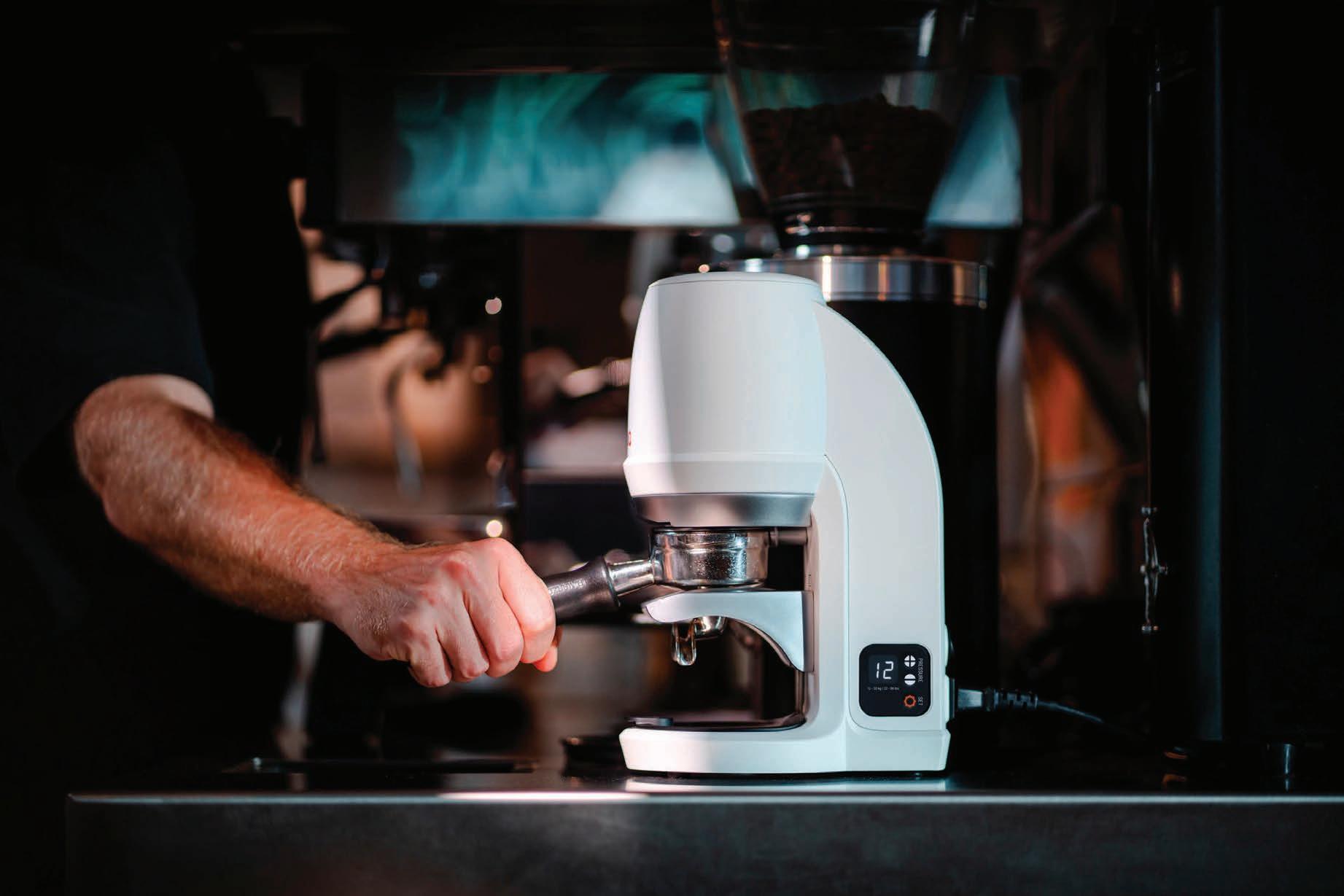

Perfect for small & lower volume cafes. Warranty: 2 year / 150,000 tamps. Colours: black/White. Tamping Profiles: Speedy, precision, single.

Ideal for low to mid size cafes
Warranty: 2 year / 150,000 tamps. Colours: Black/White. Tamping Profiles: Speedy, precision, soft, hulk, single.
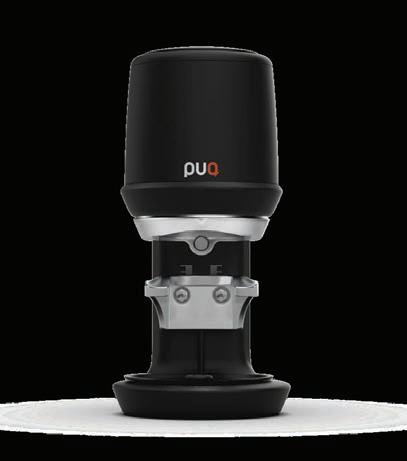
The ultimate in puqpress technology, unlimited kg per week. Unlimited tamp warranty. Colours: Black/ White. Tamping Profiles: Speedy, precision, soft, hulk, single.

The Navigator’s unique needle configuration embraces randomness to ensure no two paths are the same.

Scan QR code for wholesale sign up
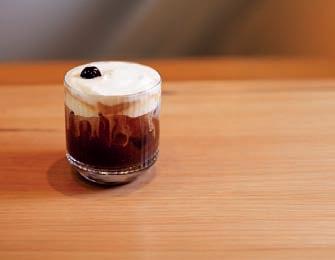

Studio, 8a Breese Street, Brunswick, Victoria, 3056
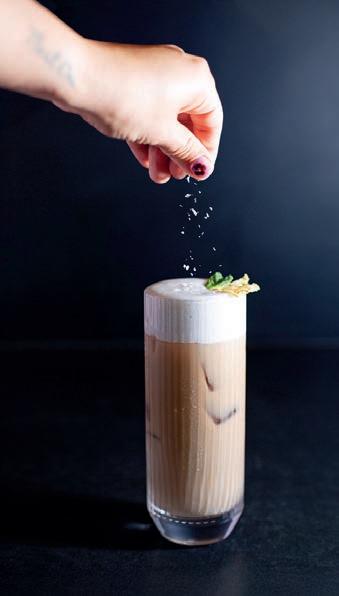
Our April covershoot with MONIN marked one of the most delicious to date. At the start of March, we headed to MONIN’s beautiful studio in Melbourne’s co eetopia (Brunswick) to spend the morning with brand Ambassador Danni Choy, mixing some eye-catching signature drinks to share with the BeanScene readers.
Photographer Blake Storey was eager to capture the creation of the drinks in action, with the nal ourish of a sprinkle of sea salt or the careful placing of the cherry on top suspended in the image.
“ ere’s something so exciting about capturing movement in an image – it brings the picture alive. We knew the signature drinks would look great on their own, but catching those nal touches in the creation of the drink takes the image to the next level,” says Blake.
Of course, capturing the exact moment the salt crystals fall or the cherry hits the cream is easier said than done. Timing was also of the essence, as the whipped cream that topped each drink started to bleed into the co ee.
“In all, we had to cra each drink four or ve times before getting the image we wanted. is gave the team plenty of opportunities to taste the drinks along the way. I can con rm they were all delicious,” says BeanScene Editor Kathryn Lewis.
A er much experimentation, the winning cover shot was Danni’s Cherry Bomb, which features double espresso, MONIN Cherry Syrup, sparkling water, pure cream, and MONIN Vanilla Syrup. ose who want to try it for themselves will nd the recipe on page 26, alongside a second recipe for Danni’s Piñalatte.
MONIN’s studio provided the ideal backdrop for the tasting and photography session. It’s speci cally designed to be a space for innovation, with Danni regularly welcoming café owners, bar managers, and baristas to devise new drinks and help organise menus and work ow.
For more information, visit stuartalexander.com.au/ pages/monin

CHIEF OPERATING OFFICER
Christine Clancy christine.clancy@primecreative.com.au
PUBLISHER
Sarah Baker sarah.baker@primecreative.com.au
MANAGING EDITOR
Myles Hume myles.hume@primecreative.com.au
EDITOR
Kathryn Lewis kathryn.lewis@primecreative.com.au
JOURNALIST
April Hawksworth april.hawksworth@primecreative.com.au
ART DIRECTOR/DESIGN
Daz Woolley
HEAD OF DESIGN
Blake Storey
BUSINESS DEVELOPMENT MANAGER
Charlotte Murphy charlotte.murphy@primecreative.com.au
CLIENT SUCCESS TEAM LEADER
Janine Clements janine.clements@primecreative.com.au
PHOTOGRAPHY
Blake Storey
CONTRIBUTORS
Emma McDougall, Victor Vu
HEAD OFFICE
Prime Creative Pty Ltd 379 Docklands Drive, Docklands, Victoria 3008 p: 03 9690 8766 enquiries@primecreative.com.au beanscenemagazine.com.au
SUBSCRIPTIONS 03 9690 8766 subscriptions@primecreative.com.au
BeanScene magazine is available by subscription from the publisher. e rights of refusal are reserved by the publisher.
ARTICLES
All articles submitted for publication become the property of the publisher. e Editor reserves the right to adjust any article to conform with the magazine format.
COPYRIGHT
BeanScene magazine is owned by Prime Creative Media and published by Christine Clancy. All material in BeanScene magazine is copyright and no part may be reproduced or copied in any form or by any means (graphic, electronic or mechanical including information and retrieval systems) without written permission of the publisher. e Editor welcomes contributions but reserves the right to accept or reject any material. While every e ort has been made to ensure the accuracy of information Prime Creative Media will not accept responsibility for errors or omissions or for any consequences arising from reliance on information published. e opinions expressed in BeanScene magazine are not necessarily the opinions of, or endorsed by, the publisher unless otherwise stated.


The first weight-based grinder by Mazzer, the Kony Sg features a professional-grade scale with a highly accurate, repeatable load cell, customisable doses, grind flow control, and IoT connectivity, ensuring precise, consistent results with easy cleaning.
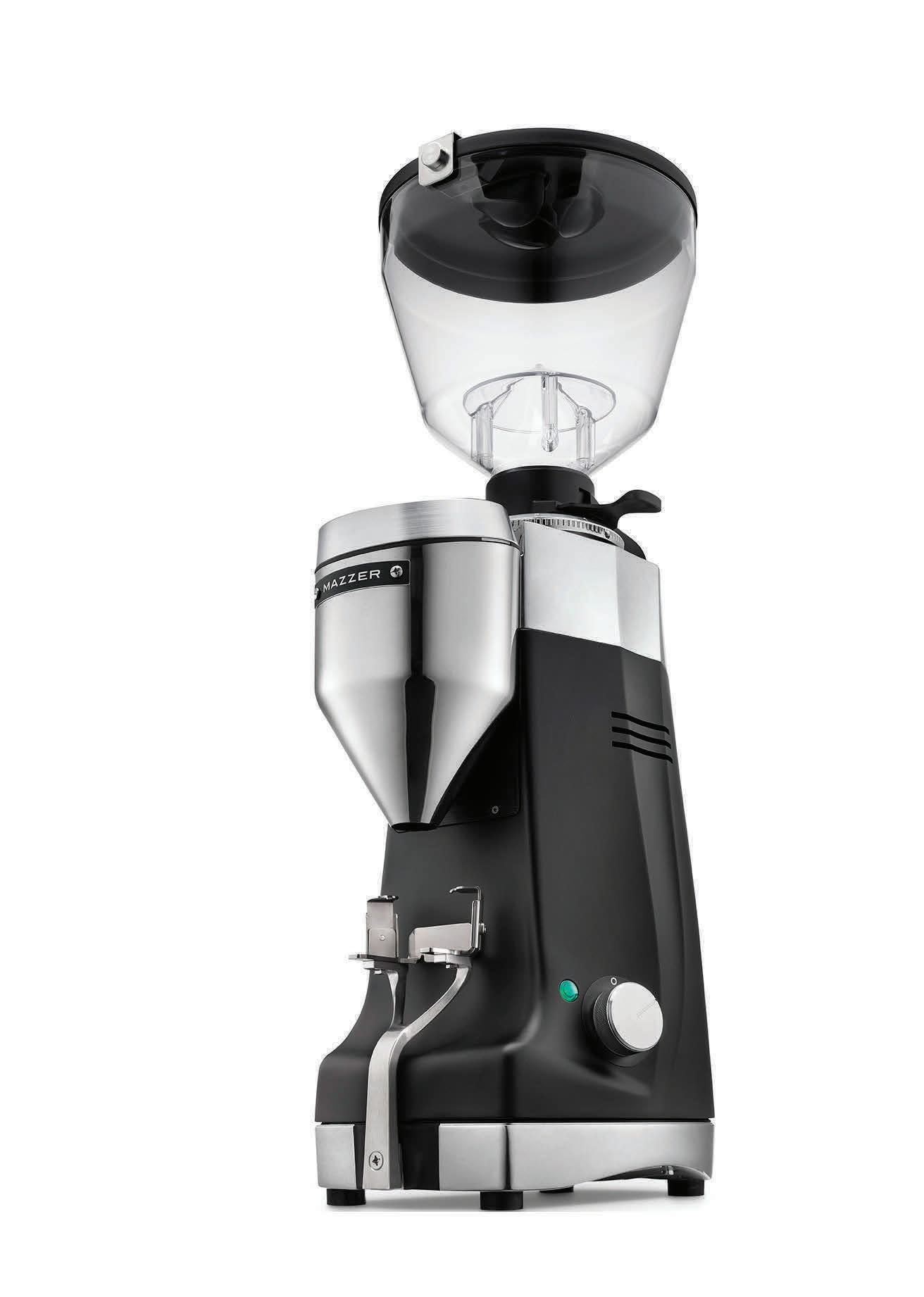






Contributors

Victor Vu is the three-time ASCA Australian Latte Art Champion. He placed seventh in the 2024 World Latte Art Championhip (WLAC) in Denmark in June. Born in Vietnam, Victor worked for three years in hospitality before coming to Australia to perfect his latte art skills. He won the 2018 Milklab Barista Battle, and the 2020, 2024, and 2025 ASCA Australian Latte Art Championships. He currently works at Ona Coffee Melbourne.
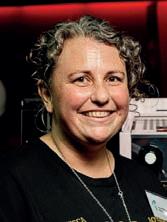
Emma McDougall is the Communication and Administration Coordinator for the NZSCA. After gaining a degree in hospitality management, Emma has worked in Sydney, Dublin, Auckland, London, and, most recently, Wellington. She has owned and managed cafés and tech-judged the New Zealand Barista Championship in 2015 and 2016. Now, she gets to help run them. One of the greatest joys she gets from the coffee industry is watching young people progress through their coffee journey.
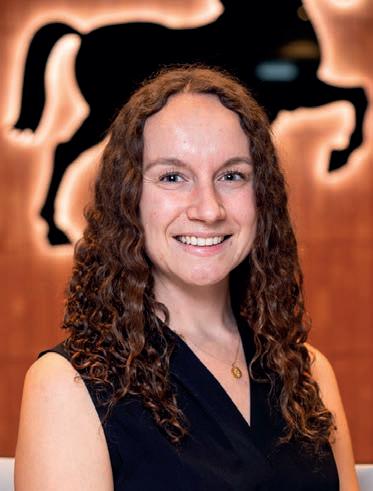
We are well and truly in the signature drinks era of co ee culture, and it doesn’t look to be ending any time soon.
Drinks trends are sweeping social media, catapulting baristas into TikTok in uencers and delivering lengthy queues to the lucky few who crack the algorithm of ‘going viral’. Creativity and innovation are peaking, and no specialist ingredient is o limits.
If 2024 was the year of strawberry matcha, 2025 is the ube latte’s moment to shine. ose who aren’t familiar with the purple drink fashioned from sweet potatoes just need to search it on Instagram to nd tens of thousands of posts.
While it can feel impossible to keep up with the latest must-have menu additions, what remains clear is that Asia continues to be a prominent in uence on the specialist drinks market.
ese o en-colourful, sometimes crazy creations can feel like a bit of fun, but their rise in prominence also has a more serious side. As an increasing number of Australians and New Zealanders cra co ee at home, café owners are having to get more creative to get people through their doors.



Like us on Facebook
@BeanSceneCo eeMag
Follow us on Instagram
@beanscenemag
Follow us on LinkedIn
@BeanSceneMag
Unlike a at white or long black, signature drinks are menu items that most co ee lovers can’t make at home – buying all the ingredients would be costly and they might not have the right equipment. ese signature drinks also o er café owners the opportunity to sell at a higher price point without having to spend a lot more on the basic ingredients.
In this issue, we’ve teamed up with the crew at MONIN to give signature drinks even more airtime with the coveted BeanScene cover spot. Our cover star is the Cherry Bomb, masterminded by MONIN Brand Ambassador Danni Choy. She shares the recipe for this contemporary take on the cherry cola spider, plus another for her Piñalatte.
In our cover story, Danni tracks the rise of signature drinks, re ecting on MONIN’s journey from fruit liqueur producer to syrup specialist. She also forecasts some of the drinks trends she believes we’ll see more of this year, and revisits some of the fad café items she’d rather forget – who remembers freak shakes with syrup on the outside of the glass?
Speaking of trends, in this edition we also explore the increasing appetite for decaf co ee. A decade ago, many in the industry lived by the saying ‘death before decaf’, but amid a surge in interest in wellness and sleep, deca einated co ee is making a comeback. It’s no longer an a erthought on café menus and roasters are adding more options to their decaf collections.
Re ecting this trend, in March former World Barista Champion Pete Licata established a ca eine-conscious co ee roastery in Melbourne. We chat to him, as well as café owners who are increasing their decaf output, about the movement and if co ee without the buzz can taste as good as the original.
Enjoy the issue.
KATHRYN LEWIS EDITOR
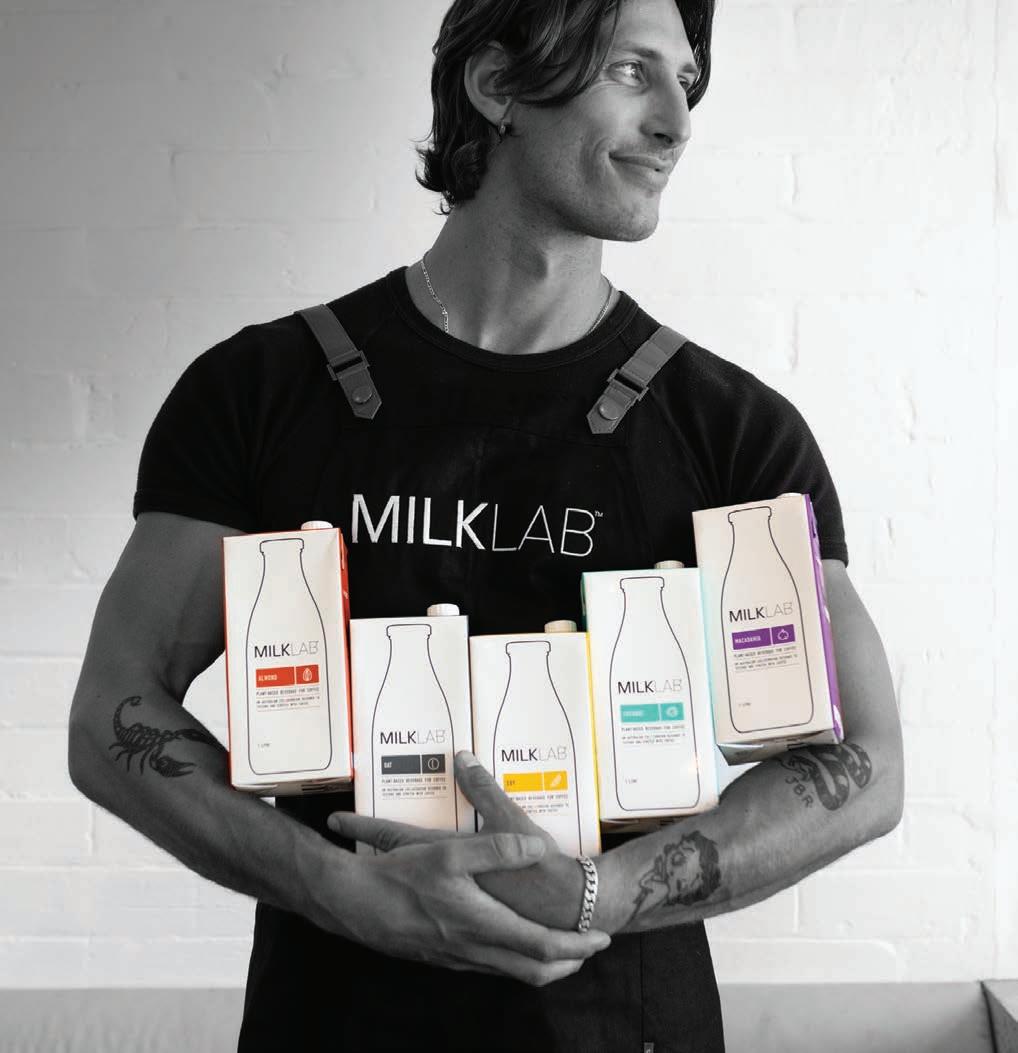
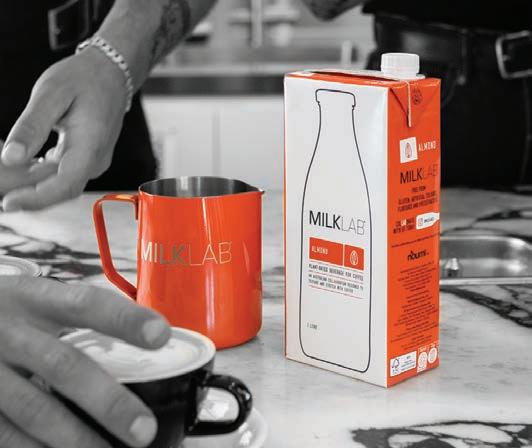
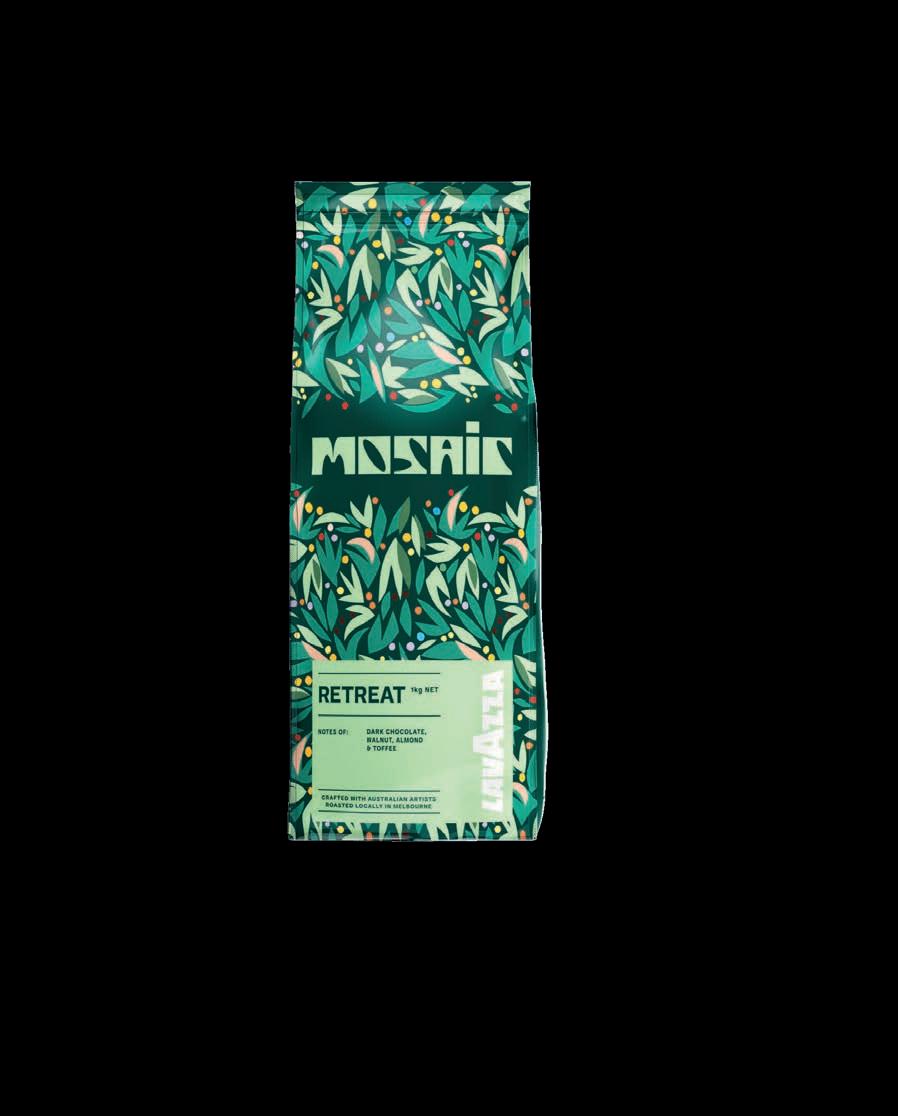
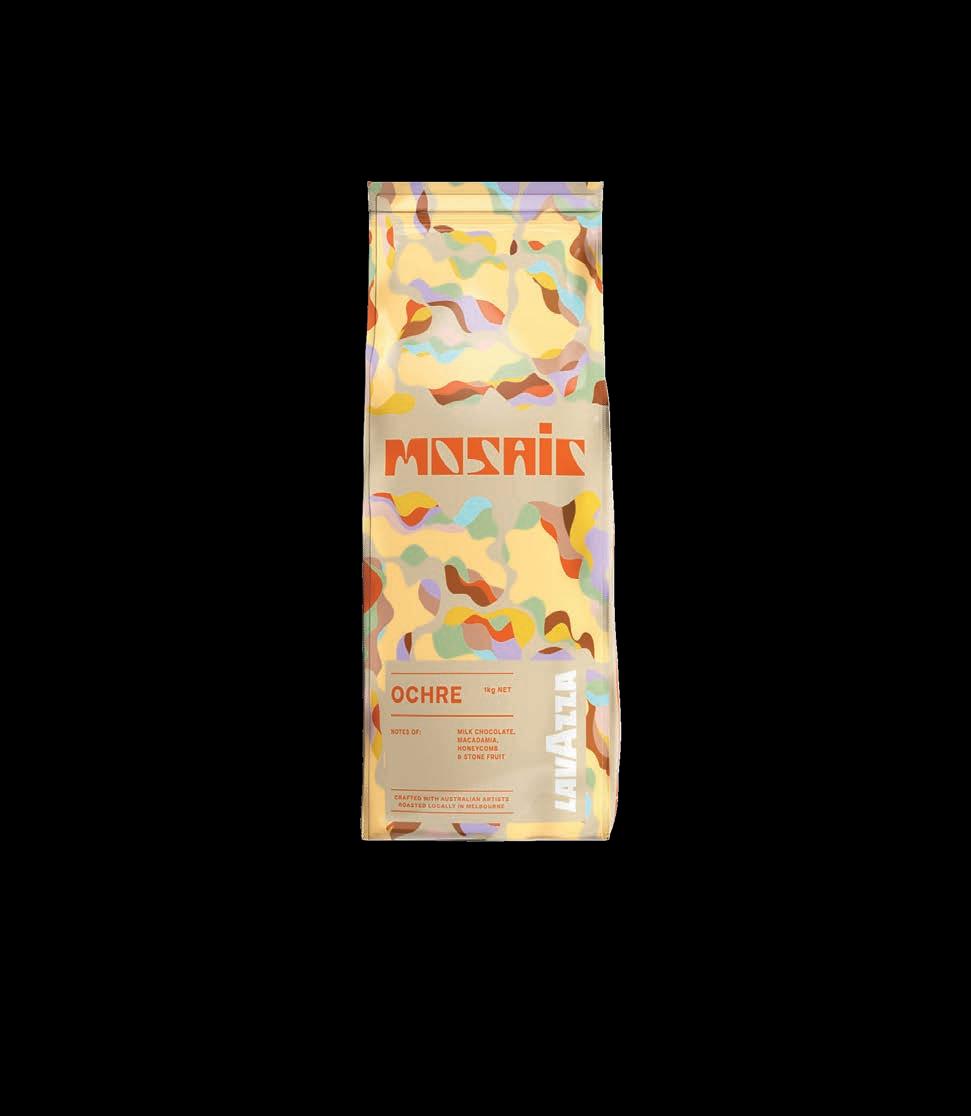
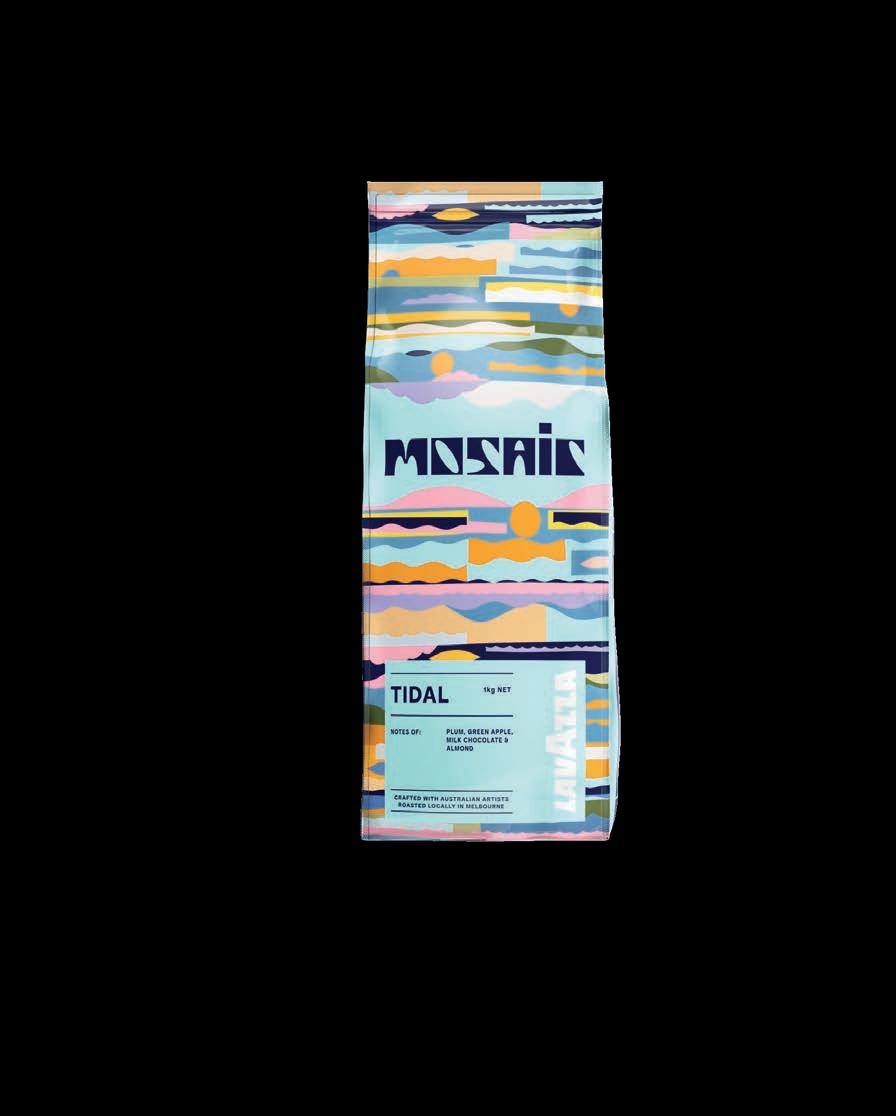

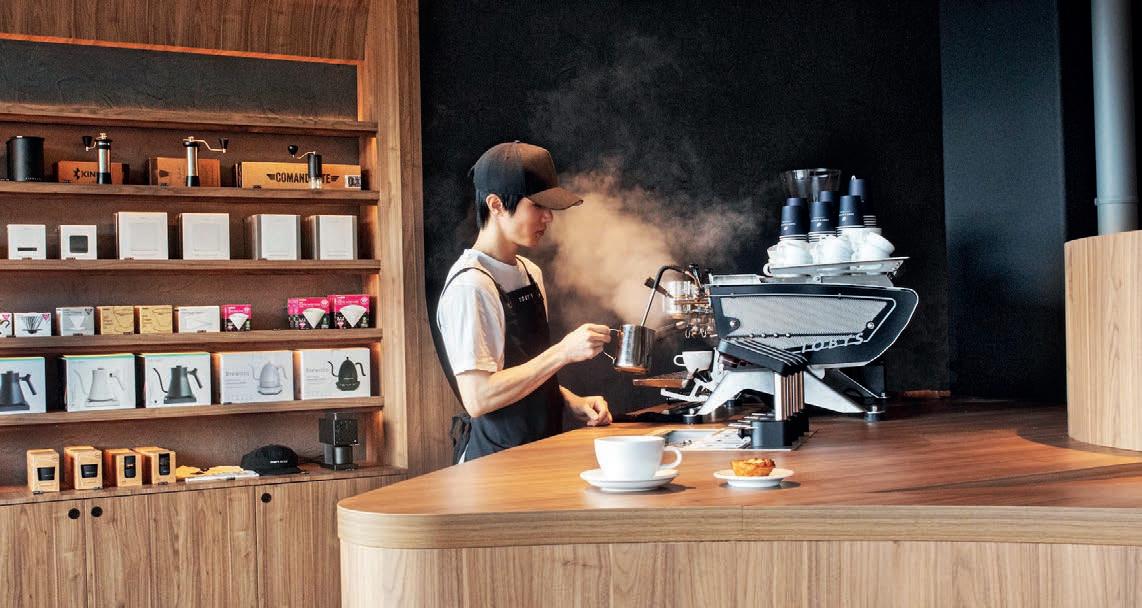
Toby’s Estate in Chippendale, Sydney, has claimed the top spot on the inaugural World’s 100 Best Co ee Shops list, with three Australian cafés in the top 10 and a total of 10 Australian and New Zealand cafés making the list.
e results were announced at a ceremony in Madrid, Spain, on the 17 February as part of Co eeFest Madrid.
“At Toby’s Estate, co ee is at the heart of everything we do, and I think that’s re ected in our customers’ experience. Our whole team puts in an immense amount of e ort to make the best co ee possible, so we’re
absolutely delighted to be awarded this incredible recognition,” says Jodie Lesley, Toby’s Estate General Manager.
Of the other Australian and New Zealand venues to make the list, Proud Mary Co ee in Melbourne placed fourth, and multi-roastery Co ee Anthology in Brisbane placed eighth.
e World’s 100 Best Co ee Shops is a new global recognition system for which co ee shops are judged on the criteria of quality of co ee, barista experience, customer service, innovation, ambience and atmosphere, sustainability practices, food
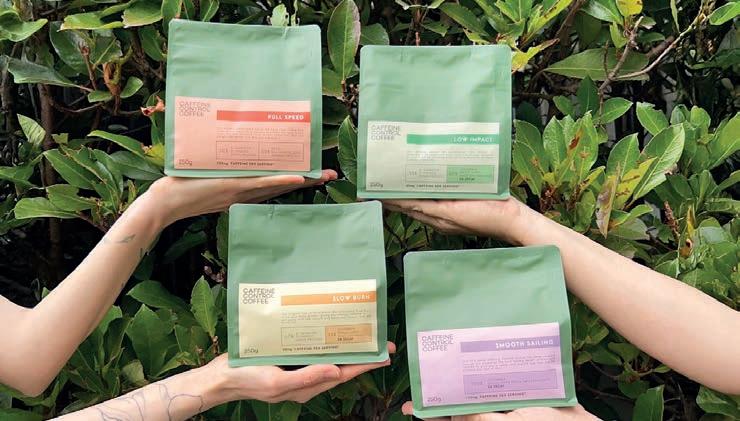
1 March,
e
evolving specialty co ee scene with what it describes as “an innovative approach to ca eine transparency and control”. e brand’s core product range o ers four distinct blends, allowing consumers to
and pastry quality, and consistency. e voting system consists of two main components: public voting and expert evaluations. Co ee lovers from across the globe were invited to cast their votes online while a panel of co ee experts, including renowned baristas, co ee roasters, and industry professionals, provided their assessments of the co ee shops. e nal scores were determined using a weighted system in which public votes accounted for 30 per cent of the nal score, while expert evaluations contributed the remaining 70 per cent.
choose their level of ca eine, including: Full Speed, fully ca einated Arabica co ee for a strong boost; Slow Burn, moderately ca einated for balanced energy; Low Impact, lightly ca einated for a gentle li ; and Smooth Sailing: deca einated co ee for relaxation.
“We’ve all had days where ca eine makes us feel great – and days where it doesn’t,” says Pete.
“ ere are a few reasons this happens, but without knowing something as simple as, ‘How much ca eine is in this?’ we couldn’t start to explore even bigger questions. Ca eine Control Co ee is about putting that power into the hands of the drinker.”
For those aiming to gradually reduce their ca eine intake, the brand also o ers the 4-Week Reduction Plan Box, a curated four-pack sampler intended to help consumers explore various ca eine levels and discover their ideal balance.
RMIT University’s co ee concrete innovators have won an award at Universities Australia’s Shaping Australia Awards in the Problem Solver category, a er tallying the most votes from the public.
e innovative building material developed by Dr Rajeev Roychand, Professor Jie Li, Associate Professor Shannon Kilmartin-Lynch, Dr Mohammad Saberian, Professor Guomin (Kevin) Zhang, and Professor Chun Qing Li strengthens concrete by 30 per cent, replacing a portion of the sand usually used to make concrete with biochar made from spent co ee grounds.
is invention also addresses major sustainability challenges. Australia generates around 75,000 tonnes of ground co ee waste annually, contributing to 6.87 million tonnes of organic waste in land lls, which account for 3 per cent of the nation’s greenhouse gas emissions.
Lead investigator Dr Roychand and Prof Li received the Problem Solver 2024 People’s Choice Winner award on behalf of the team at Parliament House in Canberra on 25 February.
“Winning this national award is outstanding recognition of our vision to

transform waste materials into valuable construction resources,” says Dr Roychand.
“What began as research into co ee grounds has now evolved into a comprehensive program converting various types of organic waste into biochar that could help reshape the environmental
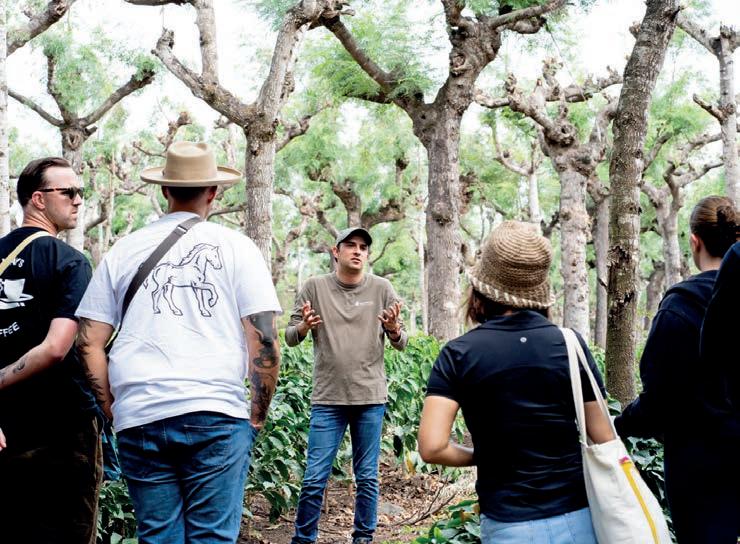
Sydney roaster White Horse Co ee picked up a Silver Medal in the Espresso category at the Golden Bean World Series in Guatemala from 17 to 20 February.
e award-winning blend, End of the Line – Cronulla Beach Blend, includes beans from Ethiopia, Burundi, and Colombia, and was inspired by South Sydney icon Cronulla Beach, which is the last stop at the end of the
train line – hence ‘End of the Line’.
“ is year Brian, our Head Roaster, took complete control of our End of the Line blend. Like every year, he does an excellent job,” says White Horse Head of Co ee and Co-Founder Dominick Majdandzic
“We’ve been competing in Golden Bean for numerous years now. What I’ve learned is, never build an expectation. So I suppose
footprint of the built environment.”
Within a year, the team progressed from the lab to real-world applications with industry and government partners, including a world- rst footpath trial in Gisborne. It is also being used in Victoria’s Big Build projects.
the result of getting a silver medal for End of the Line was more than what I had expected. We are thrilled.”
He adds that the competition is intense and the di erence between a gold and silver medal can be the slightest dryness or bitterness in the cup.
“ e real win year a er year from competing in the competition is exposure. Exposure to new people and to their roasting styles. Building new relationships and the joy of sharing with industry peers is what brings me back to the event year a er year.”
Lead Co ee Roaster Conan says the competition was erce, with many talented roasters showcasing complex roast pro les.
“While I’m thrilled with our success in the espresso category, I was disappointed that our End of the Line blend didn’t place in the Milk category. I truly believed its expressive and enjoyable avours, particularly as a at white, would have distinguished it in the competition. I nd it reminiscent of a piña colada, which I thought would be unique and appealing,” he says.
“Regardless, I’m honoured to have been part of such a prestigious event and to have competed alongside such skilled roasters.”
TAILOR-MADE TECHNOLOGY, DRIVEN BY INNOVATION
Discover Brambati’s experience and continuous research in complete installations for coffee processing.
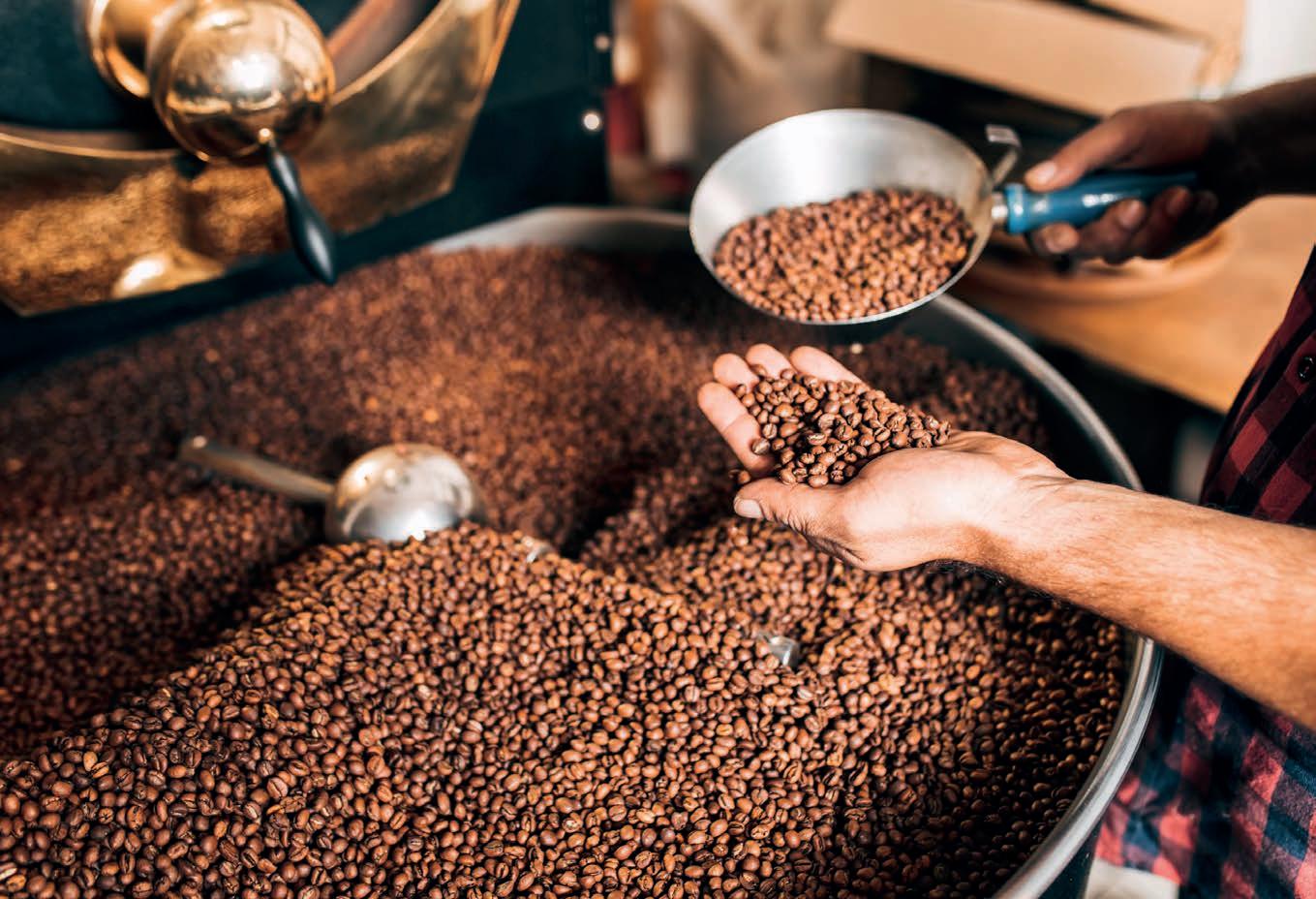
With the rise of health-conscious consumers, the continued breakdown of stigma among ca eine lovers, and an array of new options in the market, could decaf be co ee’s next big trend?
By April Hawksworth
What was once considered a last resort for the ca eine averse or intolerant has emerged as the co ee world’s underdog. anks to new processes, innovative roasters, and a growing demographic of health-focused consumers, decaf is cementing its spot in Australia’s specialty co ee scene.
Ten years ago, when ‘death before decaf’ was the uno cial slogan of the specialty scene, the idea of someone ordering decaf co ee was o en met with scepticism. But the industry is gradually breaking down this stigma, where decaf was once seen as inferior in taste by consumers and lacking the same passion from baristas as its ca einated counterparts.
In late 2024, James Ho man, one of the world’s most in uential co ee commentators, led a groundbreaking decaf project designed to prove that decaf can be just as avourful and high-quality as regular co ee. As part of the initiative, he o ered co ee enthusiasts the opportunity to taste the same co ee deca einated through three di erent methods, alongside the ca einated version.
For the project, 16 tonnes of co ee was sent to three deca eination facilities for carbon dioxide, ethyl acetate/sugar cane, and Swiss Water processing, then distributed to roasters worldwide for a livestreamed tasting session, where participants compared the decaf processes with the original ca einated co ee.
ree Australian roasters participated, including Brendon Bonacci of Decaf Co in Melbourne, who is equally keen to breakdown the stigma. Brendon says James’ work was impactful because it challenged his audience of ‘co ee snobs’ – those most likely to sneer at decaf – to reconsider their preconceptions.
“By putting decaf in the spotlight, James got them to try it, and everyone was surprised by how good it actually is. e feedback we received from sending out those kits was amazing, everyone was astonished by the quality of the decafs, which was exciting,” says Brendon.
“We sold around 1500 kits, each containing four bags of co ee, which went out to a lot of people. It was a great opportunity to showcase how each processing method a ected the avour.”
He says having such an in uential gure in the co ee world take decaf seriously brought the right people into the conversation.
Brendon began his foray into decaf co ee when looking for ca eine-free alternatives for health reasons, and found most roasters would only o er one option for decaf.
“It was as if it was treated as a joke,” says Brendon. “It’s o en not taken seriously and there’s a bit of banter around, which is frustrating when you’re trying to nd a proper decaf solution.
“When starting Decaf Co, we saw an opportunity and pushed forward with the idea, knowing there are some truly great, funky, and delicious decafs out there. e issue is that many roasters just don’t put the e ort into sourcing them, o en because they’re more expensive. at makes it harder to sell, too.”
A major issue with decaf is that it doesn’t sell as much as regular co ee. For many roasters, decaf isn’t their primary product, and if they need to roast a minimum batch but don’t sell it all, it can sit around longer. erefore, decaf sometimes doesn’t make it to cafés as quickly as regular co ee and has

a higher chance of becoming stale.
“ e reality is, decaf has a much shorter shelf life, and all the negative perceptions about decaf stem from freshness – it’s really its major downfall,” says Brendon.
For a long time, there’s been a negative stigma around the processing methods used for decaf, particularly because of the use of methylene chloride in the 1990s. is solvent was commonly used, but the Food and Drug Administration (FDA) in the United States is currently lobbying to ban it, and it is restricted in Europe due to concerns about carcinogenic properties.
“ is created a lasting narrative that decaf was chemically processed, and it’s still one of the most common questions we get –people o en ask if it’s harmful or cancercausing,” says Brendon.
He explains that methylene chloride is rarely used today.
“In Australia, it’s practically impossible to nd it, as importers don’t bother bringing it in. While it might still be used in a few large-scale instant co ee products, it’s de nitely not used by any roaster here,” he says.
However, the Swiss Water Deca eination method o ered an alternative, gaining popularity and completely changing the decaf narrative. e method uses only water and carbon lters, making it a chemicalfree process.
“It’s so clean, in fact, that the decaf can retain its organic certi cation. Swiss Water decafs taste fantastic, with a range of options from high-end to more standard blends. When treated with care by roasters, these decafs can rival any regular co ee,” says Brendon.
Another method is the sugarcane process, which uses ethyl acetate. Brendon says this o en gets a bad rap because of the term ‘ethyl acetate’ being associated with harsh chemicals. He explains that ethyl acetate is a naturally occurring compound, o en derived from sugarcane molasses fermentation, and its name is a combination of ethanol (alcohol) and acetic acid (the primary acid in vinegar) – both natural and food-safe.
“ e amount of ethyl acetate present in the beans is so low that it’s practically negligible. e FDA’s acceptable daily intake for ethyl acetate is 420 parts per million based on a 70-kilogram person. For one of our sugarcane decaf batches, the ca eine report showed it contained about ve parts per million of ethyl acetate – 98.81 per cent lower than the FDA’s acceptable daily intake,” says Brendon. “Additionally, ethyl acetate has an evaporation point of 77 degrees Celsius, and since our roasts end above 210 degrees Celsius, it’s unlikely to
have any traces remaining.”
Based on the high-quality products available and the safe processing methods involved, Brendon believes decaf deserves greater recognition.
“For so long, decaf has been treated as the secondary product at cafés. If you ordered a decaf, the barista would have to dig out a container of stale ground decaf under the bench, and end up with a watery, poorly made cup. at’s something we’re working to change,” he says.
“If cafés put in the e ort to do it right and really focus on making a quality decaf, they’d see the payo . It’s not just about o ering a decaf option, it’s about making it something people want to drink.
“We’re still in the early stages of decaf’s growth, and while it’s de nitely gaining traction, there are major challenges to overcome in order to o er consistently great decaf. But it is possible, and it can be done.”
Gabby Mifsud from e Snappy Grump café in Melbourne says decaf wasn’t nearly as popular as it is today when the café rst opened in 2021. Now, she says sales have tripled or quadrupled since then.
“We are the co ee city of the world, and
regardless of your ca eine intake, there’s something special about sitting down and enjoying a co ee, especially in a city that has perfected it. We put so much e ort into perfecting the blend and texturing the milk; there’s a real art to it,” says Gabby. is art, she says, is becoming more recognised, even among non-co ee drinkers. What’s more, there is a growing consensus that more than two or three cups a day may have negative health consequences, and the health conscious are trading their a ernoon pick-ups for decaf co ees.
“You’re still getting that same taste and enjoyment, but without the ca eine hit. It’s kind of like how you have Coke with sugar and Coke without sugar – you’re still able to enjoy the same experience without the health consequences,” says Gabby.
But to capture this growing population of decaf drinkers, Gabby says cafés must o er a high-quality product. For e Snappy Grump, this means grinding the decaf fresh and weighing shots like any other co ee they use to ensure these customers keep coming back.
“Winning over customers these days is tough, especially with co ee prices at an all-time high. So, cafés are increasingly

recognising the value of serving a great decaf, knowing it can help expand their customer base,” says Gabby.
Freshness is the number one factor for quality decaf, and it needs to be ground to order. As a separate grinder is required to prepare decaf, and with a professionalgrade one potentially costing thousands, it may not be economically viable for a café to cough up the extra cost, especially when they’re not selling high volumes of decaf.
e return on investment just isn’t there.
Instead, Gabby says home grinder options are just as viable and can produce the desired results at a fraction of the cost.
“Considering decaf won’t be every second shot, it’s a great option. It can handle around 20 cups a day easily without any issues,” she says.
Another key to decaf success is nding the right roaster who has done the work and sourced a decaf counterpart that matches the quality of traditional beans.
“Our roaster showed us the importance of the decaf process and that it doesn’t have to be bad – decaf can be treated with the same respect as a regular blend. You can tell when the decaf is just some pre-ground beans, and it doesn’t feel right,” says Gabby.
She also suggests not being afraid to advertise to customers that the venue o ers specialty decaf.
“One decaf drinker might tell another, ‘Hey, this café grinds fresh decaf beans. ey know what they’re doing, and it actually tastes like a regular co ee. You should go try it’. at kind of word of mouth is powerful. It really opens up a whole new customer base, as there are people out there actively looking for a deca einated blend that’s actually enjoyable to drink,” says Gabby.
With decaf becoming more popular and being seen as a health-positive option, cafés need to stay in tune with these trends to succeed. Gabby says it’s a non-negotiable for cafés to o er decaf.
“For me, decaf should be a regular part of every café’s o ering now. It’s de nitely on the rise,” she says.
e emergence of innovative approaches to decaf may help fuel the trend and o er an alternative that’s less extreme than zero ca eine.
In March 2025, 2013 World Barista Champion Pete Licata launched Ca eine Control Co ee, a Melbourne-based roastery that o ers a range of both ca einated and deca einated options.
“Ca eine is a drug and we don’t necessarily understand how much of the drug is in a cup of co ee. I wanted to create some clarity so people can understand how much ca eine is in there, because I think

most people are having more ca eine than they think they are,” says Pete.
e roastery o ers four blends, each with a di erent level of ca eine, as well a as a kit for those wanting to wean themselves o ca eine. Pete explains that some people may want the bene ts of ca eine without side e ects such as poor sleep quality, which is where options like half-caf co ee come into play.
“I think Ca eine Control solves a problem, because there are a lot of people who have ca eine sensitivity or trouble sleeping, and they want a solution that doesn’t necessarily mean decaf,” he says.
Some of the bitterness in co ee’s avour pro le comes from the ca eine component. So, when this is removed during the deca eination process, the product can be le feeling ‘hollow’, and lacking avour complexity. Pete says you may not be able to replace this avour, but there are now excellent decaf options created with the intention of delivering more avour intensity.
“Lowering bitterness can be good, but it’ll sometimes feel a little hollow. It’ll feel like something’s missing. You have to nd the good decaf options out there that have
more acidity and more avour complexity,” he says.
On the roaster’s side, Pete says there’s an opportunity to give decaf a bit more attention and care.
“Decaf is not o en prioritised. When the roaster is started for the day, a lot of times the rst batch or two isn’t quite up to the right pro le. It hasn’t heated up all the way so some people may throw the decaf in to heat up the drum. at’s not going to produce consistent results, and it’s probably not going to taste as good as it should,” he says.
Pete believes this is an oversight that needs to be addressed because more people than ever are requesting decaf.
“ ere’s an idea I always come back to: if you’re going to have integrity in your co ee, you can’t be selective about when or how you apply it,” he says.
“Integrity is about doing the right thing even when no one is watching or when it’s easy to let small things slip by. But you do it anyway because you want every product you sell to be of the highest quality. ere are roasters out there who live by this principle and make sure every batch re ects that commitment.”

THERE’S COFFEE, THEN THERE’S


Veronica Ponce, President of the International Women’s Co ee Alliance Australia, reveals how her experiences in the industry inspired her to empower other women who work within it.
Co ee has played a role in Veronica Ponce’s daily life since she was a young girl. Growing up with her grandparents in Guatemala, every a ernoon the family would gather to watch the country’s famous telenovelas with a cup of black co ee and sweets. In the school holidays, she’d spend time at the family’s co ee farm, helping out aunties and playing with cousins in the co ee elds.
“Like a lot of other Latin Americans, co ee was a big part of my life from an early age. Us children would drink it in the a ernoon and would be buzzing by bedtime,” she says.
“As I grew up in the city, I loved visiting the co ee farms. When I was helping out, I thought it was a bit of fun, but it wasn’t until later that I saw the true value of the people who were working there.”
While she didn’t know it at the time, these experiences would be foundational to a career that would see her fall in love with someone who shares her passion for co ee, relocate to the other side of the world, open her own café, and lead the Australian chapter of an organisation that supports the work and growth of women in the international co ee community.
Despite her upbringing, Veronica didn’t plan to work in the co ee industry. As part of her nal year of school, she had to complete an internship. While looking for a placement, an opportunity at Anacafé, the National Co ee Association of Guatemala, came up.
“ ey accepted me for a role in the marketing department because I had good grades in English. To complete my course, I had to do 200 hours of work. By the end of it, I’d learnt so much about co ee and loved working with a team who were so passionate about what they did,” she says.
“Once my internship was over, they o ered me a role as a marketing assistant. e opportunity enabled me to learn so much, not just about the green beans and growers but also about the international industry. We worked alongside organisations such as the International Co ee Organization and other associations for producing countries.”
As part of her role, Veronica got to

visit tradeshows around the world and discover di erent co ee growing and consuming cultures.
“Our job was to promote Guatemala as an origin. We would organise trips for roasters to come and visit, host presentations to international audiences, and attend events across the world,” she says.
It was this globetrotting role that led her to meet her husband and relocate to
Australia – yet it almost didn’t happen.
“I was organising Anacafé’s stand at Melbourne International Co ee Festival 2014, but my boss was supposed to be attending without me. At the last minute, they couldn’t make it and so I took their place. It’s lucky because it was at that tradeshow that I met my husband, who was promoting espresso machines,” she says.
“Although I’d visited a lot of other countries through my job, Melbourne

was the rst place I fell in love with. It was March, the weather was beautiful, the co ee culture in the city was alive and amazing. You would nd these incredible little cafés in laneways which were unassuming on the outside but brewing fantastic co ee.”
Charmed by the people and the co ee culture, Veronica took the leap and relocated to Wollongong, New South Wales. She says it was then, when trying to nd a job in the hospitality industry, that she rst recognised some of the unique challenges women face in the industry.
“Because Wollongong didn’t have the same co ee culture as Melbourne when I rst relocated, I had to get a job in general hospitality, washing dishes and serving food before being able to work my way up to being a barista,” she says.
“I progressed quickly, until I became a mother. I realised the incompatibility between hospitality and motherhood. I had to sacri ce my job, returning casually when I could. e absence of maternity leave and
childcare meant I felt unsupported. It was a challenging time.”
A er having her second child, Veronica knew she needed to pivot her path in the industry to t in with her family and lifestyle. Despite her experience, she says it was very di cult to nd a role.
“Although I had worked in the industry for years, I felt I wasn’t given the same consideration as some of the men who had applied for the same role as me. I didn’t exaggerate my experience, and I think that may have put me on the back foot,” she says.
Despite these hurdles and a brief departure from the co ee industry, in 2023 Veronica opened her own café, Park Road Garage, in Bulli, New South Wales. She says being a women business owner is empowering, but also comes with its own challenges.
“I love my work and one of the joys of my role is sharing that with a team who are also passionate about co ee, good hospitality, and creating community,” she says.
“But one of the things I’ve experienced time and again is people assuming I don’t
own the business because I’m a woman and because my co-owners are men. I’ll o en have suppliers asking to speak to my husband. rough my work with the International Women’s Co ee Alliance (IWCA), I’ve heard from women co ee farmers around the world that they are o en referred to as the farmer’s wife, dismissing their role in the industry.”
Veronica’s relationship with the IWCA goes back to her time at Anacafé, which shared an o ce building with the Guatemalan chapter of the organisation. She says working together over the years gave her a good understanding of the origin side of IWCA, but that she didn’t know much about the consuming chapters until she moved to Australia.
“IWCA is a global network of 34 selfgoverning chapters, all with a shared aim of empowering women in the global industry to achieve meaningful and sustainable lives in their own communities,” she says.
“ e Australian IWCA is one of

just seven consuming chapters. Our main commitment is to create more visibility for women and marginalised individuals, recognise their work, create awareness, and take action towards a more equitable industry.”
e organisation aims to do this by facilitating platforms for networking, both locally and globally.
“It all starts with networking, creating a safe and inclusive space for sharing knowledge and to share and seek a broader understanding of the challenges women face, such as the gender pay gap, lack of recognition and visibility, gender disparity in leadership, access to childcare, and nancial access,” she says.
Veronica believes fostering more opportunities for women will further enrich the Australian co ee industry.
“IWCA creates a space for women in the industry to not only discuss opportunities and challenges but also to actively collaborate on solutions and drive positive change,” she says.
“It’s been wonderful to witness an increase in the number of women taking on managerial and roasting roles over the past few years, however, there are still roles that remain heavily male dominated, such as equipment technicians – I could likely count the number in the women technicians in the country on one hand.”
As well as creating these networking spaces, IWCA focuses its activities to support leadership development programs, assist with strategic partnerships, and amplify market visibility.
“As a volunteer-run chapter, we depend on the active participation of our members and the community to facilitate these platforms. We believe in the power of shared knowledge and action, and it’s this collective commitment that enables us to make our initiatives possible, she says.
“As a co ee industry, we must unite
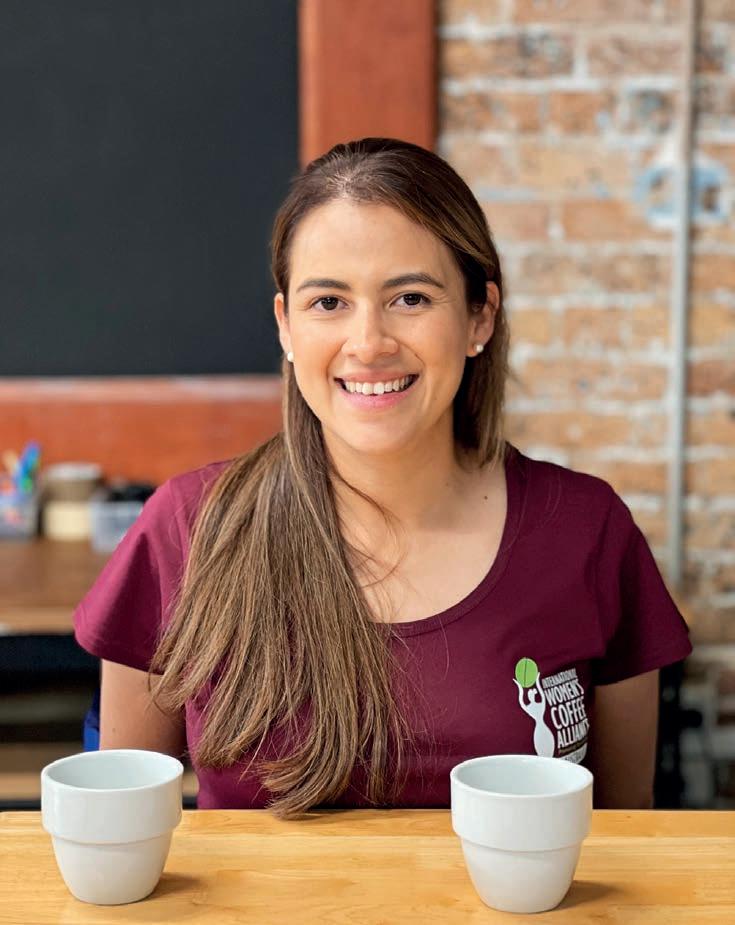
and acknowledge the challenges we face.
While other sectors encounter similar issues, we have the power and responsibility to take meaningful action and drive positive change.”
One of the organisation’s current objectives is to get more men to support the cause and get them involved in more conversations and activities.
In January 2025, Veronica travelled to Florence in Italy with fellow board member
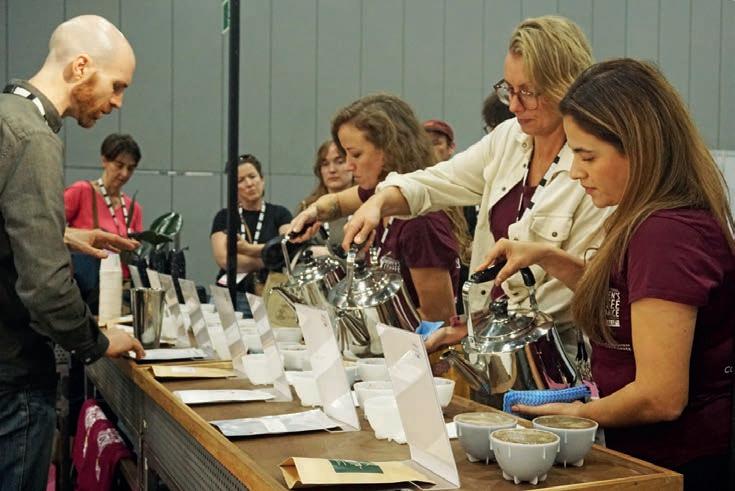
Melissa Garcia to represent the IWCA Australia chapter among other consuming chapters at the IWCA Italia.
“ is event, organised by IWCA Global and IWCA Italy Chapter, successfully brought together leaders from major co eeconsuming countries, including Australia, Italy, Japan, Greece, Spain, South Korea, and the United States, as well as chapters in formation from Argentina, Canada, Germany, and Portugal. It served as a powerful platform for knowledge exchange and strategic dialogue, focusing on advancing women’s leadership and in uence within the co ee industry,” she says.
Re ecting on the conference, she feels positive about the future of the Australian co ee industry and the role IWCA plays.
“IWCA’s transformative leadership is shaping a vibrant future for the Australian co ee community. is landmark event ignited a powerful collective movement, not only addressing critical social, political, and environmental challenges faced by women, but also emphasising the vital role of women across all industry roles – from importers and traders to roasters, café owners, and baristas,” she says.
“ rough IWCA’s e orts, the Australian co ee industry is set to achieve remarkable growth, marked with inclusivity, innovation and sustainable growth.”

“It’s a trend that’s de nitely going to last for another decade or two. I think people want that little bit of fun in their lives.”
Danni Choy, MONIN Brand Ambassador

From the dawn of the frappé to the TikTok-famous whipped co ee, MONIN charts the rise of signature drinks and how they’ve revolutionised the co ee landscape.
By Kathryn Lewis
hether it’s a certain t of jeans (skinny is out, wide leg is in), a haircut (Australia still isn’t over the mullet), or what we’re eating (pickles and cherries are 2025’s hot picks, apparently), almost every aspect of our lives is in uenced by trends.
O en, it’s near impossible to track down the true origin of these fashions, but as the world becomes more interconnected, they are mushrooming faster, shi ing quicker, and reaching more people than ever before. ese trends are powerful tools for business owners, and in the world of co ee the signature drinks market is driving innovation and creating new revenue streams.
While the rise of social media over the
past decade has fuelled the popularity of these creative menu additions, according to Danni Choy, Brand Ambassador of specialist syrup brand MONIN, signature drinks rst came onto the scene in the late 1990s.
“ ey didn’t go under the guise of signature drinks, but ‘gourmet’ co ee options with additional avours rst gained popularity at chains such as Starbucks, and then that translated to Australia in places like Gloria Jean’s,” says Danni.
“ is broadened their menus from just co ee, opening up their o ering to a wider range of consumers. You would have frappés and blended drinks, o en featuring avours that were complementary to co ee such as vanilla, caramel, and hazelnut.”
ese drinks not only introduced a
new customer base, including younger consumers who didn’t yet have the palate for co ee, but also enabled cafés to charge more for specialist drinks. While at rst much of the independent café scene in Australia stayed true to the third-wave co ee movement that was sweeping the country, favouring high-quality beans served simply to focus on the avour of the co ee, the building momentum of the Barista Championships, which features a creative signature drink round, saw café owners take note.
“Co ee was becoming almost too structured on café menus in Australia. It was largely just at whites, lattes, long blacks, cappuccinos, and pourovers – there wasn’t a lot of versatility,” says Danni.
“When barista competitions started to
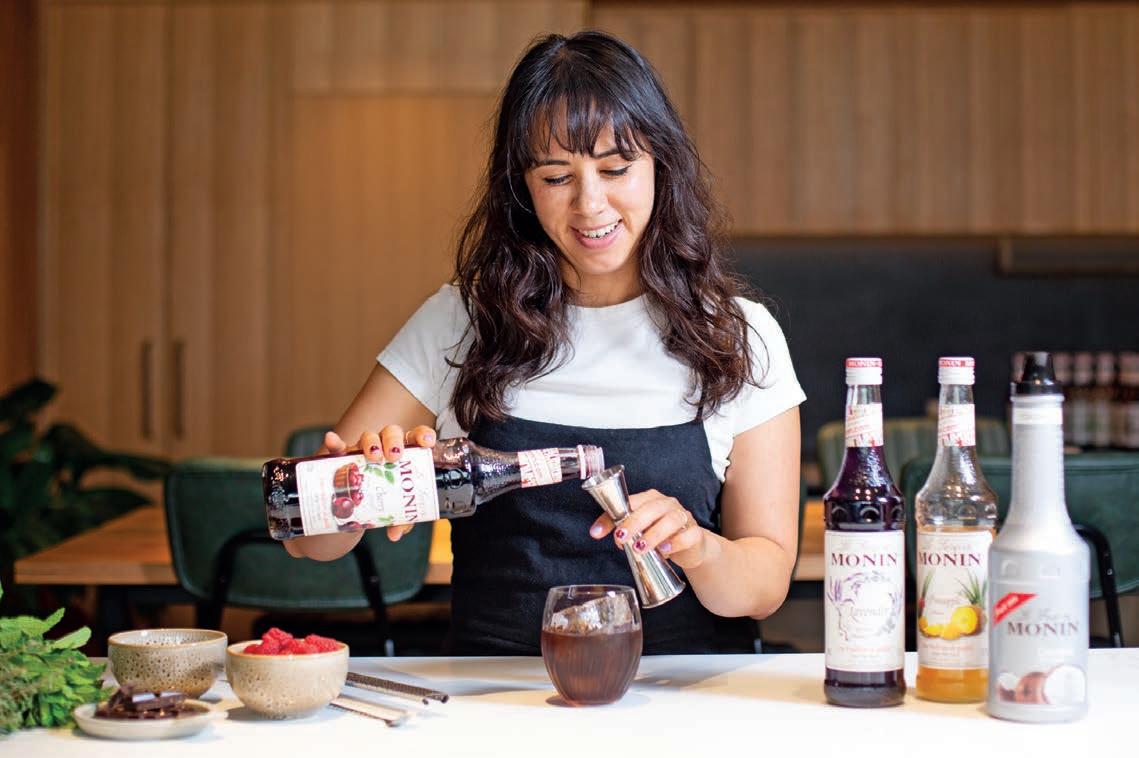
15ml MONIN Cherry Syrup
Double espresso
120ml sparkling water
60ml pure cream
10ml MONIN Vanilla Syrup Cherry

become very popular, we saw a surge in interest in signature drinks. Not caramel iced co ees, but drinks that pushed the boundaries of what consumers expected from a co ee. Independent cafés realised these drinks could add a point of di erence to their menus.”
With the specialty sector prioritising quality and the origin of the co ees they served, avour became a major focus of these creative concoctions.
“Baristas sought avours that not only complemented but also contrasted the pro le of the co ee they were matching them with. It was quite experimental. For example, pairing cherry with an espresso sounds a bit weird, but it actually brings out so much of the sweetness and jamminess of the co ee,” she says.
While French brand MONIN had long served the café market, providing quality syrups for lattes and other traditional co ee beverages, this concentration on avour and signature drinks in the early 2010s is when the company saw an opportunity for innovation in the sector.
Originally founded by Georges Monin in 1912, MONIN started as a liqueur producer, adding avoured syrups to its range in the late 1920s.
“A er supplying bars for more than a decade, Georges and team realised consumers were also looking for nonalcoholic options. While the company largely supplied bars for the rst 60 years, when syrups began to be added to co ee in
the late 1980s, it was a natural progression for it to diversify into the café space,” says Danni.
“Today, MONIN is at the forefront of innovation. We have development hubs around the world, creating syrup avours tailored to the tastes of individual markets. For example, our dragon fruit syrup is super popular in Europe, but in Malaysia where the fruit grows abundantly it’s not part of the range because café and bar owners have easy access to the fresh version.”
While many syrup brands have come and gone over the years, Danni believes MONIN’s longevity and success is down to the ingredients it prioritises and the constant development of its ranges.
“We have established ourselves as a premium brand and pride ourselves on using premium ingredients, such as raw cane sugar in all our syrups, which has a much richer avour,” she says.
“We’re also continuously tracking trends to ensure we’re delivering the avours our customers want. Our range is constantly expanding, responding to industry developments.”
MONIN’s research and development team are kept on their toes by the fast-paced nature of avour trends. e signature drink market has skyrocketed over the past ve years, something Danni attributes to a number of factors.
“Social media has had a huge in uence on the trends we’re seeing in cafés. I o en get clients coming to me saying they’ve
Stir the MONIN Cherry Syrup into a double shot of espresso. Pour into a rocks glass filled with ice.
Top the glass with sparkling water, leaving 1-2cm at the top.
Whip the MONIN Vanilla Syrup into the pure cream until it forms soft peaks. Pour the cream mixture gently over the cherry coffee. Garnish with a cherry.
seen something on TikTok and want to know how they can recreate their own version at their café. So many people have asked me how they can add cold foams to their menu since the viral whipped co ee trend,” she says.
“ e aesthetic nature of the drinks means they’re very photogenic and people want to share them, and that can make a café go viral. ere’s a new matcha place near me and the queue is always out the door. I spoke to a friend and they told me the owner is TikTok famous.”
What’s more, café owners are embracing the appetite for signature drinks and helping to build the market because it’s another revenue stream for them.
“It’s a challenging time for cafés at the moment. People are buying co ee less o en, so owners need a way to entice customers in and encourage them to spend a little more,” she says.
Looking back at the drinks trends cafés have embraced over the past few decades, Danni admits there are some she would rather forget.
“I owned a little café in Queensland for a few years. It was right at the time that wellness lattes were popular and we served a turmeric version. Looking back, they were terrible,” she says.
“Freak shakes, with piles of doughnuts, fairy oss, and lollies were another. I remember seeing cafés serving them with syrup on the outside of the glass, thinking

‘how on earth can the customer pick that up?’.”
While there will always be trends we hope won’t be revived, Danni believes there are some novel ideas on the horizon and that creative baristas in Australia are looking to Asia for inspiration.
“I think Asian avours are going to be huge in the signature drinks space in 2025. My hot pick is ube lattes, which I think we’ll start to see more widely this year,” she says.
“Ube is an Asian purple sweet potato that’s ground into a ne powder and blended with milk or hot water like you would matcha. It has a lovely rich, earthy avour. e team at Nimbo in Melbourne already have it on their menu – I think it will be this year’s strawberry matcha latte.”
Another Asian-inspired avour Danni expects we’ll see more of this year is mugwort – or ssuk as it’s known in Korea, where it’s quickly becoming a specialty café staple.
“I rst tried it as an ice cream and thought ‘wow, this is delicious’. It was interesting and had a lot of depth. It can also be prepared as a latte, and because it’s low in ca eine I think it could become another popular alternative to co ee.”
Danni also thinks sparkling tonic creations will get a lot more airtime on café menus in 2025.
“People are shi ing away from heavy, dense drinks and instead I think we’ll see more espresso tonics with a touch of avour. ey are super refreshing and easy to put together when you have the right ingredients,” she says.
“Strawberry matcha lattes are here to stay, but I think there’ll be a greater focus on the quality of the matcha and there’ll also be more interest in traditionally prepared matcha drinks.”
While many of these innovations are coming out of Asia, Danni believes Australia is still a trendsetter in the specialty scene. She highlights the Mont Blanc co ee, one of the biggest signature drink trends of 2023, which was created by the team at Good Measure in Carlton.
“ e Mont Blanc took o around the world. Speaking to baristas in Europe, Australia is still very much an in uence in the specialty scene. But, a lot of that innovation is in uenced by other cultures and then made more accessible by baristas and café owners here,” she says.
At MONIN’s innovation studio in Brunswick, Melbourne, Danni works with cafés to ne tune their menus and add viral-worthy signature drinks to their o ering. She recently collaborated with Queen Baker, a new café project in the city’s Queen Victoria Market.
“ e team at Queen Baker came to us because they wanted to explore adding some house sodas to their menu. At the studio, we went through a series of avour combinations, adding a touch of salt and citric acid to some of the drinks to elevate the result,” she says.
“ ey were super happy with the new additions to their menu, which were easy to recreate at the café with just a small number of ingredients.”
According to Danni, signature drinks are here to stay and will only get more popular as TikTok and other social media
15ml MONIN Pineapple Syrup
50ml strong cold brew
100ml milk of choice
100ml coconut cream
50ml MONIN Coconut Fruit Mix
Pinch of salt
Pineapple chip
platforms continue to grow.
“It’s a trend that’s de nitely going to last for another decade or two. I think people want that little bit of fun in their lives – they don’t want to take everything so seriously,” she says.
“Now, people want a unique experience every time they visit a café. People are making at whites and long blacks at home, so the café is a place for baristas’ talents in cra ing and concocting drinks to shine.”
For more information, visit stuartalexander.com.au/pages/monin
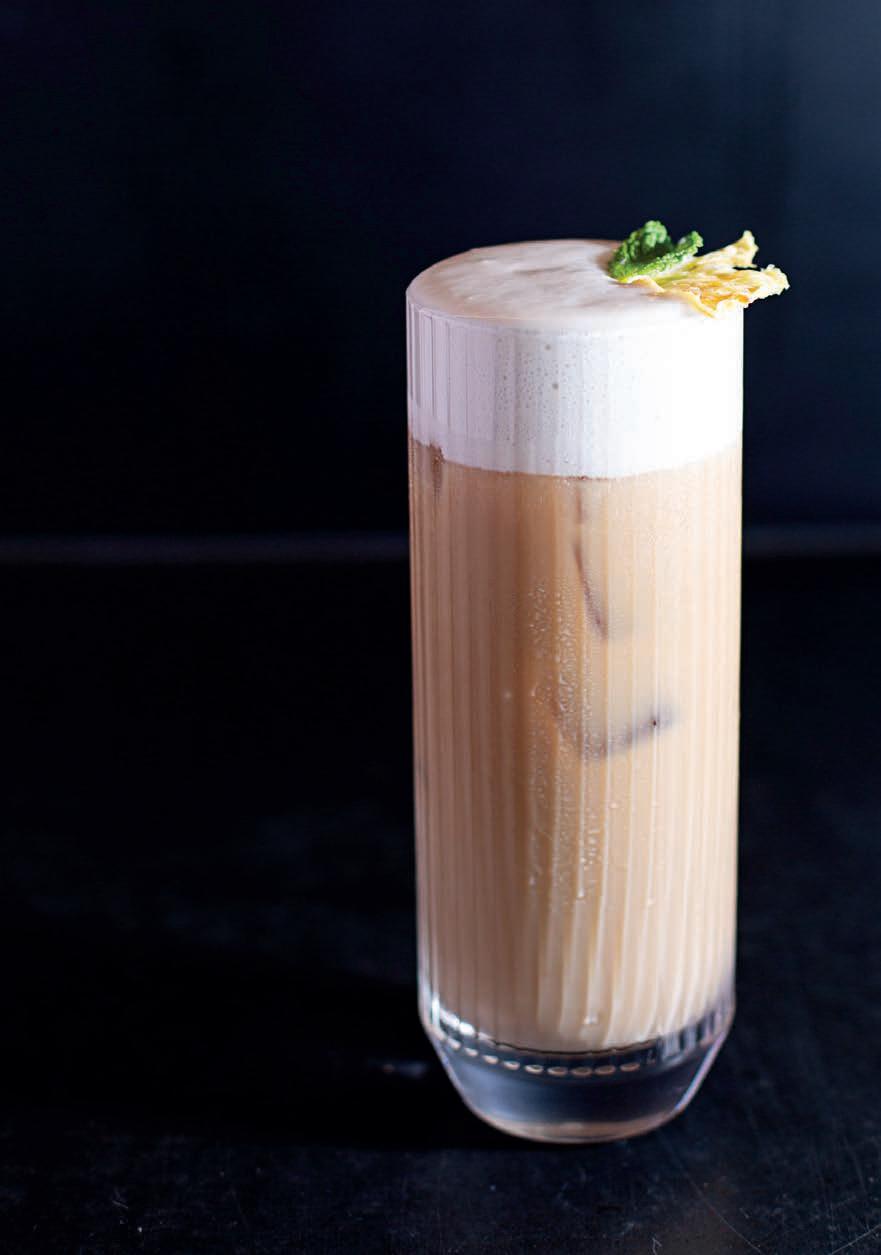
Mix the MONIN Pineapple Syrup, cold brew, and milk in a highball glass with ice.
In a jug, whisk together the coconut cream and MONIN Coconut Fruit Mix.
Pour the coconut cream mixture into a cream gun and use 1 charge to aerate the mix.
Top the pineapple coffee drink with the coconut cream.
Garnish with a pinch of salt and a dried pineapple chip.




When Riverina Fresh received a request for the UAE Barista Championships, the team crossed continents (literally) to transport their fresh milk almost 12,000 kilometres across the world.

As the milk of choice for many of Australia’s barista champions and competitors, the team at Riverina Fresh are used to going out of their way to ensure competing baristas have everything they need for success. Yet, at the end of 2024, Events and Marketing Planner Kate Fitzpatrick received a request she wasn’t sure she could ful l.
“Between Christmas and New Year, we received an Instagram message from Ibrahim Al Mallouhi, Founder of e Espresso Lab, one of the rst specialty co ee shops in Dubai. He asked if we could supply our milk for one of his baristas in the upcoming UAE National Barista Championship,” she says.
“I immediately thought ‘of course we can’, as our milk has been used in overseas competitions by Australian baristas, but the logistics of ensuring our perishable product survives the journey isn’t straightforward.
e milk must not only endure the 14-hour ight from Melbourne to Dubai, but also the journey from our dairy in Wagga Wagga to the airport and then from the airport in
Dubai to e Espresso Lab. We also didn’t have much time to arrange the logistics.” e quality of the milk is paramount in competitions such as the Barista Championships, and it had to be transported fresh and kept at a consistently cool temperature. Kate says freezing the milk is never an option because the process of freezing and then defrosting materially impacts the quality and avour.
“I told Ibrahim that we could do it, but the milk needed to be personally escorted to Dubai,” she says.
Kate started speaking to her industry contacts to nd out if anyone from Australia was going to be attending the competition, which was held as part of World of Co ee Dubai expo in February. Her plan was to nd someone who could escort the milk directly to e Espresso Lab’s door.
“As it turned out, some of the team from the It’s Just Co ee! podcast were attending the expo and agreed to take the milk for us. Ibrahim arranged for one of the podcast hosts, Kirk Pearson, to y out a few days early with the milk. It was packed
in an Esky alongside ice packs, with the individual milk bottles wrapped in sleeves to prevent them touching the ice packs and forming any ice crystals,” Kate says.
e team sent two batches of milk to Dubai, the rst a selection of di erent products for e Espresso Lab barista Aldy Nugroho to sample and then select the milk that best complemented his competition co ee. From the Gold, Full Cream, and Lactose-Free varieties, Aldy chose the Gold, which was own out a couple days later for the competition with Sonam Sherpa from the podcast team.
“We ended up sending 10 bottles of Gold in two Eskys. When we have these types of requests, we rely heavily on feedback from our internal team of milk sensory experts and our laboratory in Wagga Wagga. is ensures we only send product that is of the highest quality in both composition and taste. We were also fortunate that the production schedule lined up with the ight schedules, and the milk was delivered to Aldy in less than 72 hours from the time it was
fresh o the farm,” she says.
For Ibrahim, the no-expense-spared operation was worth the time and e ort, with Aldy placing rst and becoming the UAE Barista Champion 2025.
“In 2023 we placed third and last year we placed second. I believe using Riverina Fresh milk was pivotal in us coming rst in 2025. It had been eight years since we had won, so I did scream out when Aldy’s name was called – I was very proud,” he says.
“ e other competitors used dairy from our country, which is very good, but for a competition you need something unique and using Australian milk made us stand out from the crowd.”
Ibrahim rst came across Riverina Fresh at the 2022 World Barista Championship and Brewers Cup in Melbourne. He had noticed it was the milk of choice of Australian Barista Champions and was intrigued to try it himself.
“I tried the milk and was impressed by its natural sweetness. I knew then that I wanted to use it in the UAE National Barista Championship. At rst, I had trouble contacting the team at Riverina Fresh, so whenever a friend visited Australia I asked them to bring me back the milk,” he says.
“ ere are lots of great milks, but it’s rare to nd one that tastes great with co ee.”
Aldy paired Riverina Fresh Gold with a natural co ee from Kai Janson in Panama, which he also used in the espresso round.
e team at e Espresso Lab roasted the beans di erently for the two serves.
“For the espresso we roasted it very light and for the milk beverage we roasted a little darker to complement the milk and deliver notes of nougat, hazelnut, and caramel,” says Ibrahim.
With the 2025 World Barista Championships taking place in Milan in October, Ibrahim is hoping to use Riverina’s premium milk in Italy.
Riverina Fresh Gold was cra ed to be
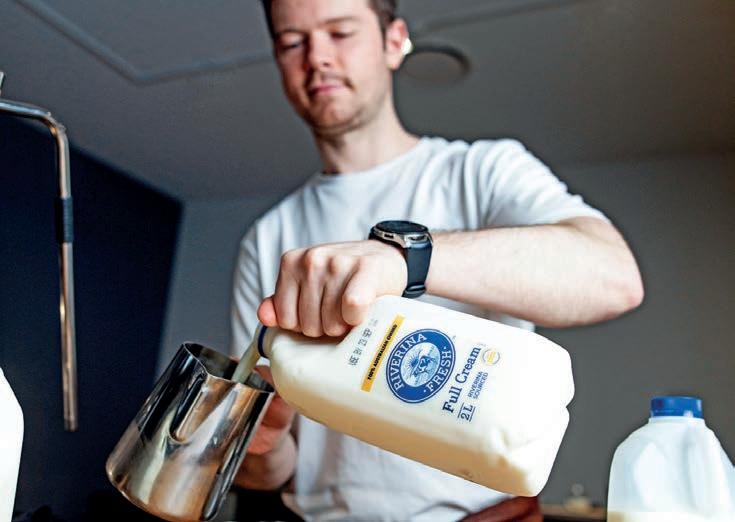
used by baristas and paired with co ee. Working closely with 2015 World Barista Champion and Founder of Ona Co ee Sasa Sestic to create the product, the team explored the science of milk and co ee to create a product with higher milk fat to complement speci c roasts and pro les.
“It was cra ed to deliver a rich, creamy mouthfeel that balances darker, stronger co ees, while also allowing subtle, fruity, and sweet notes to shine,” says Craig Shapiro, Executive Chairman and CEO of Riverina Fresh.
Although Gold has been the choice of many Barista Championship competitors, including Australian winners Jack Simpson, Matt Lewin, and Hugh Kelly, Craig says more recently some baristas have favoured Riverina’s Lactose-Free product.
“Lactose-free milk is created by adding lactase to the milk. e process of breaking down the lactose results in a naturally sweeter taste. We’ve had a quite a few competitors choose it in recent years as it

complements the avours in the co ee they are trying to highlight,” he says.
In 2020, Riverina Fresh Lactose-Free was named Champion White Milk at the Dairy Industry Association of Australia NSW awards, marking the rst time a lactose-free milk has taken home the overall champion title.
Craig says the team were thrilled to support their rst international Barista Champion. Over the past few years, the Middle East has become a hub for specialty co ee, which is re ected in fast-growing co ee businesses such as e Espresso Lab. Ibrahim started e Espresso Lab as a retail store in 2015 and has since expanded to include a series of agship stores in Dubai and Abu Dhabi alongside its roastery, and co ee farm in Panama.
“When I established e Espresso Lab in 2015, we were the only specialty co ee shop in the market. In the past 10 years, the sector has grown exponentially, with lots of independent co ee shops and roasteries launching across Dubai,” he says. “ ere has been huge growth, but there is de nitely room for more.”
Following the win at the National Championships, Ibrahim and Aldy had the honour of serving H.H. Sheikh Hamdan bin Mohammed bin Rashid Al Maktoum, Crown Prince of Dubai.
“We served His Highness a curated course featuring espresso, milk-based beverages, and a signature drink made with the winning co ee from one of the best producers in Panama, Janson Co ee,” says Ibrahim.
“ is moment is particularly special as His Highness continues to support local entrepreneurs and foster the growth of homegrown businesses in the UAE.”
For more information, visit riverinafresh.com.au

Mytico empowers your baristas to effortlessly deliver a consistently high-quality coffee experience, cup after cup. Thanks to the revolutionary iQFlowTM technology, every automatic pour guarantees the same exceptional coffee quality your customer savored yesterday.
Discover more at mytico.franke.coffee
For enquiry, please contact David Downing: david.downing@franke.com

From packer to sales manager at the age of just 25, Blake Carpenter of e Bean Cartel reveals how his competitive nature has helped him thrive as a salesperson and stoked his entrepreneurial spirit.
For those that aren’t in the industry, it’s o en assumed working in co ee is just a stepping-stone job before moving onto a ‘proper’ career. Baristas are funding their creative passions or studies, roastery packers saving for their travels across Europe, and delivery drivers putting in the hours before launching their own businesses.
For Blake Carpenter, his job as a packer at e Bean Cartel was exactly that at rst: something to keep him busy during the day and bring in additional income while he pursued a professional soccer career. Following a promising youth career in the sport, he su ered from a series of knockbacks, which led him to relocate from Adelaide to Melbourne at the age of 18 for a fresh start with a new team.
“When I rst moved to Melbourne in 2017, I struggled with the transition and needed something to keep me busy. I was mentally strong when I was on the pitch, but I was going crazy in the day when I had a lot of spare time,” he says.
Blake’s dad reached out to friend Stacy Visser, Co-Founder of e Bean Cartel, and asked if he had a part-time role to keep him occupied. e company was still in its infancy, only recently pivoting to specialty
co ee roasting, yet Stacy saw the potential in Blake – and the opportunity to take a few tasks o his own plate.
“At rst, I enjoyed packing as it kept me moving. I knew nothing about co ee, so I loved learning about the industry from Stacy and Alan [Chan, Master Roaster],” he says.
“But, ultimately, I’m a people person and
Blake Carpenter.
a er a few months I started to get bored of the repetitive nature of the job. Alan is a very chilled guy and I think my constant questions and chatting was driving him mad. I didn’t just need to keep my body busy but be challenged in what I was doing.”
To diversify his role, Blake also started making deliveries, where he was able to connect with clients and utilise his people

skills. In the eight years that have passed since, he’s climbed the ranks to become an Accounts and Sales Manager, and more recently started taking on additional management responsibilities as General Manager Melissa Glentis transitions into an operations role.
He says one of the qualities that has helped him thrive at e Bean Cartel is his competitive nature – both on and o the pitch.
“I’ve always loved the chase and the hunt for a sale, so I really started to thrive when I moved into an account manager role.
e co ee industry is hugely competitive, especially here in Melbourne,” he says.
“My experience packing and doing deliveries gave me the opportunity to lock down the co ee knowledge I needed and learn how the industry works to then excel in a sales role. Although I found it tough at the time, doing those roles were invaluable experiences that now help me to help café businesses grow.”
Blake attributes his entrepreneurial spirit to both his own Dad and Stacy, who’s another father gure in his life.
“My dad has had a very similar career trajectory to my own. He started at the Coca Cola bottling facility and worked his way up into a state management role. My dad always said to me, ‘If you want to grow in a business, you’ve got to start somewhere’,” he says.
“Stacy has also been a father gure to me and e Bean Cartel is very much a family. e way he runs the company with such transparency means I’m very invested as it feels like my own business too. He gives each person the reins and a sense of ownership, meaning when we succeed it’s a fantastic feeling.”
Every person who’s worked in co ee sales has ridden the account management rollercoaster of highs and lows, but Blake says it’s that constant pressure that keeps the re burning in his belly.
“ ere’s a lot of good co ee out there, and I think we’ve got one of the best products in the world, but if you don’t have that constant relationship with your customer, you’re going to lose them,” he says.
“I’m all about building a strong personal relationship with our clients and welcoming them into e Bean Cartel family. I don’t want to be that pushy sales guy, I want to sit down and have a co ee with them, and then let our product speak for itself.”
As his career has progressed, Blake has started to oversee more junior members of sta . He says a lot of his leadership skills were learnt directly from Stacy.
“I’m a lead from the front type of leader. I want people to see the direction I want the business to go in,” he says.
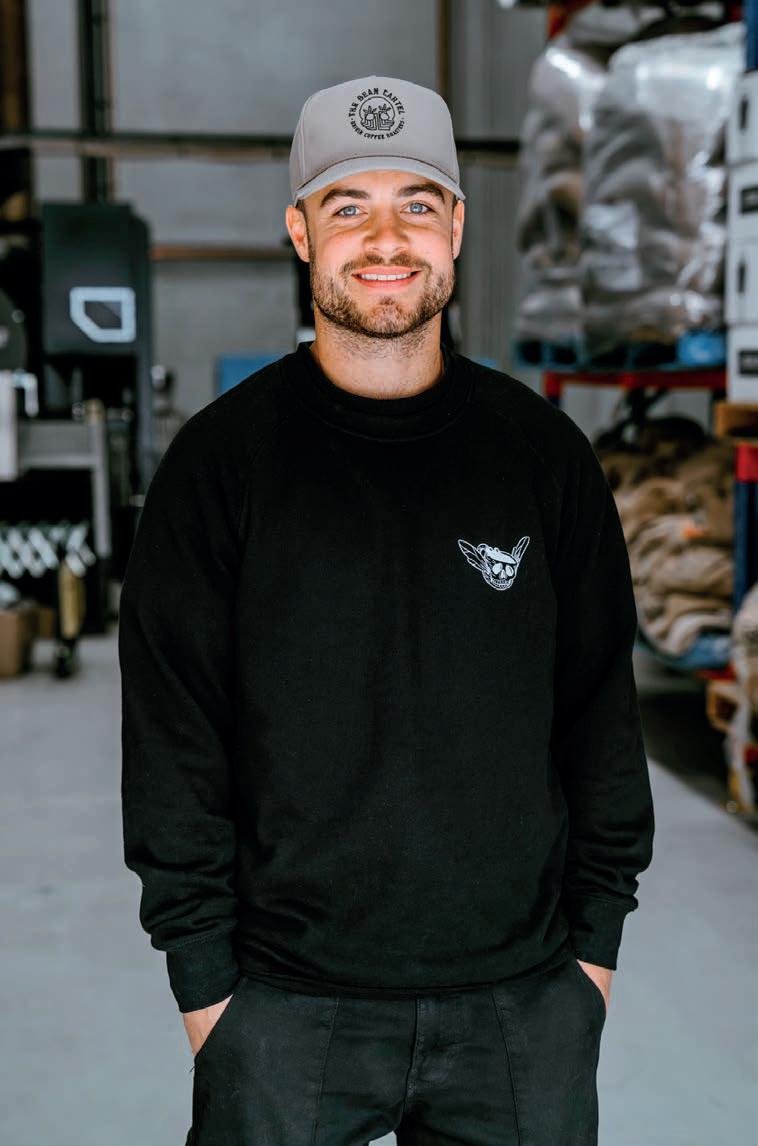
“I’ll admit I’m not always the best role model. We recently had one of our monthly mental wellbeing sessions and I found it di cult to concentrate and kept going on my phone. Stacy pulled me up on it and in the next session I asked everyone to put their phones in the middle of the table, knowing I had to lead by example. It’s always hard to take criticism, but if I know I’m in the wrong I’ll use it as a tool to better myself.”
With the price of co ee continuing to skyrocket over the past six months, Blake admits that now is a challenging time for all salespeople in the co ee community. However, he’s con dent e Bean Cartel can ride out the pricing wave.
“At the moment, my drive is to get through this tough period and come out the other side stronger. My goal is to continue to grow the right way, follow e Bean Cartel morals, and to evolve as a business and a person,” he says.
For those who think there’s no room for career growth in the co ee industry, Blake says each person has the opportunity to make the space for personal growth, they just need to take action.
“Like anything in the world, there’s only a cap on growth if you put it there. In the co ee industry there are a lot of opportunities and lots of di erent roles to suit di erent personalities,” he says.
“One of the best pieces of advice my dad has given me is ‘Don’t ever close the door, because you never know what could come from it’. You may lose an account, but you shouldn’t write o that relationship because of that decision.
“In 10 years’ time, I’ll still be at e Bean Cartel, continuing to excel and helping to make the company the best version of itself.
For more information, visit thebeancartel.com.au
A testament to innovation, design excellence, and groundbreaking technology.




How the symbiotic relationship between home baristas and cafés is key to the success of both, with each playing an essential role in the co ee experience.
While high-quality home co ee machines can produce café-level brews, they are not intended to replace the café experience – they are designed to complement it, according to Leon Wolf, Head of La Pavoni Australia.
He says there’s room for both. Co ee lovers can enjoy the freedom to experiment at home while still appreciating the skill of a professional barista.
“One doesn’t negate the other; instead, they complement each other,” says Leon.
He adds that being a home barista brings the joy of creativity and the satisfaction of cra ing the perfect cup, while also allowing co ee enthusiasts to explore di erent beans and experiment with new techniques.
“But the experience doesn’t end there. Visiting a local café remains just as important – not only for enjoying expertly cra ed co ee but also for discovering new avours, exchanging tips with baristas, and soaking in the café atmosphere,” he says.
By striking the right balance between home brewing and café visits, co ee lovers can fully immerse themselves in the best of both worlds.
In this way, home machines and cafés work hand in hand, enhancing the overall co ee experience with community, barista expertise, and connection. In fact, Leon says the home barista plays an integral role in the broader co ee community and culture.
“What makes a home setup truly special
is the ongoing learning you get from your local café, baristas, and co ee suppliers. When people spend time in a café, whether it’s observing, chatting with the barista, or reading co ee-related material, they’re absorbing valuable knowledge that they take home with them,” he says.
“ is is why investing in a home setup doesn’t necessarily mean a loss for the café scene. In fact, it o en means that customers will still visit cafés for that human connection and expert advice, reinforcing the overall co ee culture.”
Everyone is feeling the impact of the cost-of-living crisis. Leon believes while the home barista sector is growing, the home setup won’t replace the ritual of a co ee run which is ingrained in Australian culture.
For those looking to upgrade their home setup, he recommends La Pavoni’s Cellini Evolution model as a great entry point for replicating a commercial co ee experience at home.
e La Pavoni Cellini Evolution o ers a professional-grade co ee experience with a rotary pump, copper boilers, and an E61 group head, all features typically found in commercial machines. Unlike thermal block systems, which can require more frequent maintenance and have a shorter lifespan, the Cellini Evolution is built for longevity and consistent performance. Leon says its 58-millimetre porta lter enables home baristas to replicate the café experience more accurately than machines with smaller
porta lters and thermal blocks.
And, because aesthetics can be just as important as the internal mechanisms for users, La Pavoni has taken note of the colours trending in kitchen interiors and has launched the model in a white design with timber nishes.
“ is model is also ideal because it reduces the need for customers to make additional customisations – many people buying semi-professional machines want them customised, which can increase costs. We’ve ensured the Cellini Evolution comes pretty much ready to go, with those features included out of the box,” he says.
From a cost perspective, Leon suggests domestic baristas can o set the price of a home machine by cutting back on one daily café visit.
“ e beauty of investing in a home co ee setup is that, when you consider the cost of replacing just one café co ee a day, say, a $6 cup, it quickly becomes clear how worthwhile it is. With a $3500 investment in a home machine, that equates to about 582 cups of co ee, which would take roughly a year and a half to pay o . Plus, the machine comes with a two-year manufacturer’s warranty, so you’ll have fully covered the cost of the machine within that period.
A er that, every cup you make is essentially money saved,” says Leon.
While a home setup o ers nancial bene ts and the freedom to experiment, he says it can’t replace the sense of community
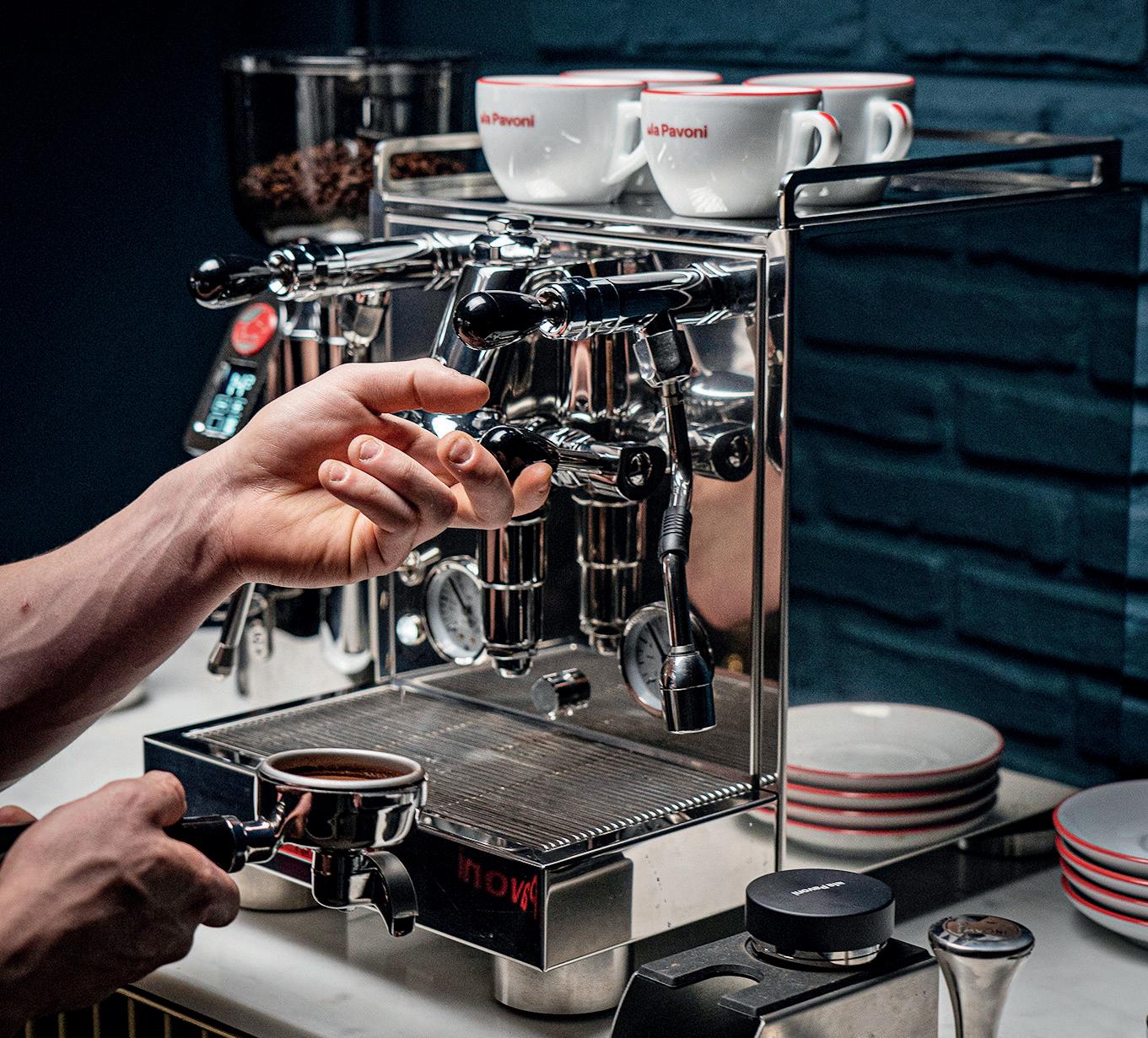
found in a café. Leon recalls a visit to a popular café in Melbourne on a Tuesday morning, where the energy was palpable: customers were picking up trays of co ee at 6.30am and baristas were sharing their expertise.
“It was a fantastic example of café culture in action,” he says. “Ultimately, investing in a home co ee machine doesn’t mean giving up the café experience, it simply adds another dimension to a co ee lover’s journey.”
Beyond the $6 a day savings, these machines are designed for e ciency and are not typically le on all day. For instance, the Cellini Evolution uses only 1400 watts of power, which is under 10 amps. And since grinders consume very little power compared to the co ee machine itself, from an energy consumption perspective, Leon says it’s a relatively low-cost investment.
“If you’re only using it for about 30 to 45 minutes a day, the cost of running it is quite minimal. At most, it could cost around $1.20 to $1.50, depending on your energy rates,” he says.
Although there may be a learning curve for home users going from heaping instant
co ee into a cup to extracting their own shots, La Pavoni is easing consumers into the process with newly launched prepurchase and post-purchase co ee classes in the company’s Collingwood showroom in Melbourne, which are held twice a month. e pre-purchase co ee class is for people who are considering investing in a home co ee machine. In this one-hour class, La Pavoni will walk them through the di erent types of machines, the components, and what it takes to make a great cup of co ee.
“Our goal is to help guide them past just buying an entry-level machine, like a pod or fully automatic machine, and show them the bene ts of learning the cra of making co ee,” says Leon. en, for the post-purchase support, if someone has bought a machine and is having trouble setting it up or using it properly, they can come into the showroom for dedicated support sessions.
“We’ll set aside days for this, where we’ll walk them through important steps like adjusting the grind, getting the right dose in the porta lter, and understanding the di erence between a single shot and
a double shot. We nd that a lot of people still don’t fully understand these basic co ee-making principles, and that’s where we can step in and o er valuable hands-on guidance,” he says.
But ultimately, Leon says it’s the education from the café – the conversations and insights shared by the barista – that makes it the ultimate education hub, keeping co ee lovers coming back. Many customers may not know the di erence between a long black, americano, or piccolo, and when baristas take the time to explain, it deepens their appreciation for the co ee.
“ is exchange of knowledge makes people more likely to invest in their own home setups while still relying on the café for guidance, which creates a balanced relationship,” says Leon.
“A lot of cafés serve as community hubs. at’s something a home co ee setup can’t replace: the human connection, the conversations, and the culture. is is why there must be a balance between home brewing and café visits. Both serve di erent but equally important purposes.”
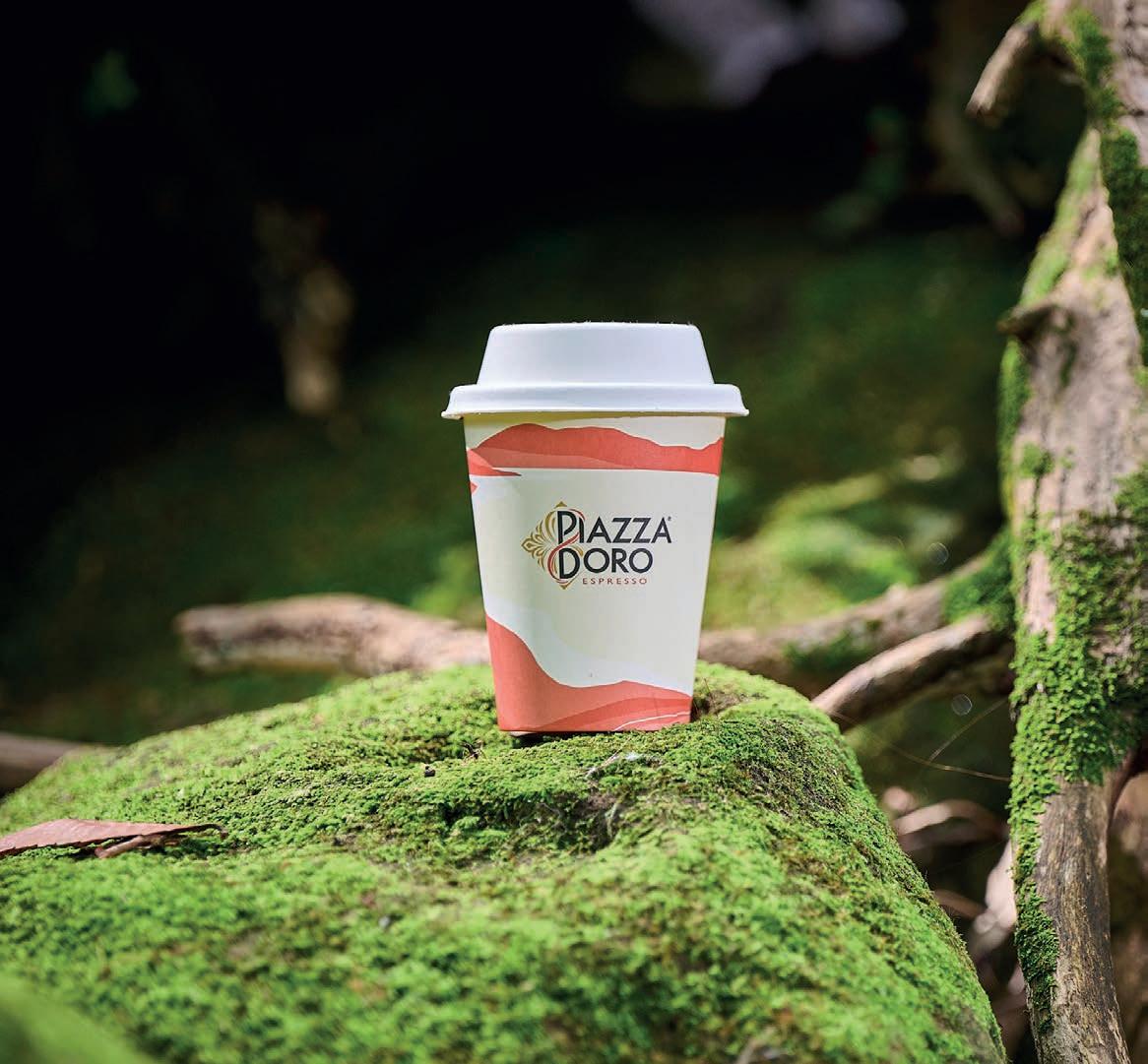



Two café owners highlight the bene ts of operating on a day-to-evening basis and nding the right Lavazza blend to appeal to customers from dawn till dusk.
In Australia and New Zealand, there’s a growing trend of hospitality venues that straddle the line between café and restaurant. While traditionally cafés would open at dawn and close by early a ernoon, and many restaurants strictly stuck to lunch and dinner services, this new breed opens early doors and serves drinks and food straight through the day until late. It’s a trend observed right across the region and in di erent styles of venues, gaining momentum at a time when
hospitality owners have had to pivot traditional business models to make a pro t. It also appears to be favoured by consumers, who are less constrained by customary eating times and more interested in socialising out of the home.
For Phil Ludavici, Owner of Hello Neighbour, Cativa Cucina, and Stella Restaurant in Adelaide, establishing venues that o ered co ee and brunch in the daytime and restaurant-style plates in the a ernoon and evening was a winning combination.
“We found if you’re primarily a brunch venue, it’s very hard to get the evenings going. On the other hand, restaurants that close in the a ernoon nd lunchtimes tough. is is especially true in the cities where you get fewer corporates heading out for lunch nowadays,” says Phil.
“With our venues, we’ve found the daytime to nighttime setup works well. It’s more casual and people seem to like that. In the days we get a lot of mums with prams, the early evening will be families, and then
later will be a younger crowd.”
While the menus change, the golden thread that runs through Phil’s venues is the co ee, which he recently switch to one of Lavazza’s Mosaic blends a er more than a decade with a local supplier.
“ e contracts for Stella Restaurant and Hello Neighbour were coming up for renewal around the time we opened Cativa Cucina. My main issue with the previous supplier was the equipment it supplied,” he says.
“I’d been contacted by a lot of roasteries, but Lavazza really stood out from the crowd – not just for the equipment they could provide but also the co ee.”
e team at Lavazza visited Phil and his co ee team and introduced their new Mosaic range of blends developed exclusively for the Australian palate and roasted in Melbourne. e three co ees – Retreat, Ochre, and Tidal – each have a distinct avour pro le, with Phil and team opting for the dark chocolate, walnut, almond, and to ee notes of Retreat.
“We were really impressed with the co ee. It perfectly suited the tastes of our customers across our venues, and also complemented our menus,” he says.
“ e equipment we received was brandspanking new and the best you could get on the market. To make great co ee, you need great equipment, and the team at Lavazza delivered everything we needed to make our customers happy.”
Hello Neighbour in Hyde Park was Phil’s rst venue to test the new day-evening setup. In the daytime it deals in classic all-day brunch dishes such as brioche French toast with whipped Bisco , hazelnut, and white chocolate praline, and corn and zucchini fritters with mint yogurt, tomato salsa, lime, and coriander. In the nighttime, however, it turns into Artusi by Night, a completely di erent concept serving gnocchi, pasta, and other Italian-inspired dishes.
“At rst, the di culty was nding chefs who could adapt to both menus, but once we found the right people it became second nature to them. e setup now works very well,” he says.
Phil believes operating with longer opening hours and capitalising on both the day and night market is one of the keys for hospitality success in the challenging climate.
“Unless you’re a family café running on a very small team, it’s hard to make money at the moment with the traditional setup,” he says. “You need to have that till ticking over at all times.”
Another business owner who’s recently taken advantage of the day-to-night concept is Khaled Noun. Establishing Rosina’s in Wentworth Point in New South Wales at the end of 2024, he saw the value in giving
“I TRIED LAVAZZA A LONG TIME AGO, BUT THE MOSAIC RANGE IS A WHOLE NEW LEVEL. THE COFFEES ARE FANTASTIC.”
customers a wide range of choice – no matter what time of day they visit.
“People have very di erent working patterns and no longer just want to have breakfast at breakfast time. We’re open from 6am to around 11pm, and we o er our whole menu throughout the day,” says Khaled.
“We get shi workers such as nurses coming in early who want a bowl of pasta, or construction workers who want an egg and bacon roll in the late a ernoon. Our opening hours aren’t just focused on making money but also on giving customers the power to choose what they want to eat and when.”
When looking for a co ee roastery to supply the goods for his Italian restaurant, Khaled knew he’d nd the right co ee to complement Rosina’s rustic European food from Lavazza.
“From the range, we chose Ochre because it was the blend that best suited our customers’ who prefer a less bold co ee.
It has a lot of sweetness and less acidity,” he says.
Khaled believes Ochre works well with both black and milk-based drinks, and that the most popular way for the blend to be served is as a cappuccino.
“Ochre is an all-rounder. It cuts through the milk well, but if you have all the parameters in place, it also makes a fantastic black co ee without too much body. It delivers tasting notes of chocolate, macadamia, and honeycomb,” he says.
“We see people ordering co ee all through the day. Interestingly, we get a lot of late-night Uber Eats orders for takeaway co ees – a market we wouldn’t tap into if we didn’t operate on a day-to-night basis.”
Both Phil and Khaled highlight how impressed they have been with the service they’ve received since working with Lavazza. e team o er tailored solutions for each business they work with, not only nding the co ee that best suits the venue’s customers but also the equipment they need to cra it.
On the back of the success of his venues, Phil plans to open another day-to-night café-restaurant spot in Adelaide later this year. Co ee and brunch will be the focus in the day, while at night high-quality and creative Asian food will take centre stage.
“Across our venues, we currently do more than 100 kilograms of co ee a week. is new venue will also do around 50 kilograms a week, so choosing the right co ee for our business is extremely important,” he says.
“I tried Lavazza a long time ago, but the Mosaic range is a whole new level. e co ees are fantastic.”
For more information, visit lavazzamosaic.com.au

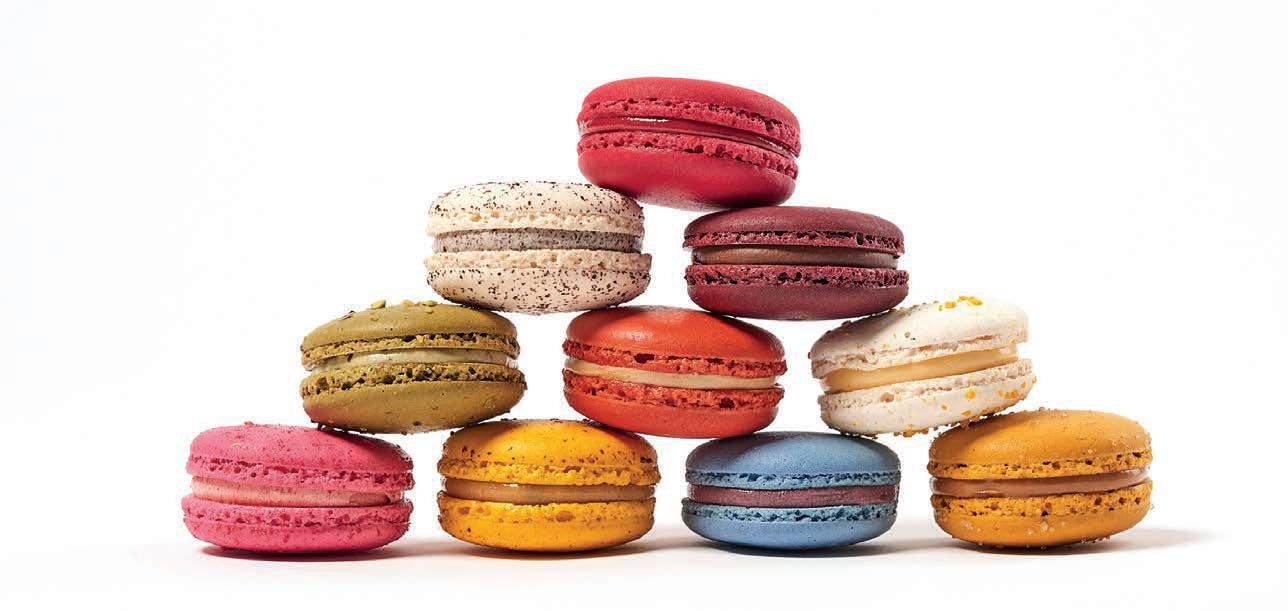
How the team at CACAO scour the world for the best avour combinations and share them with café owners across Australia in the form of artisan macarons.
The duo of chefs behind CACAO live and work in the world of avour. No family holiday or meal with friends is safe from being a springboard for ideas for the next avour combination to join the brand’s collection of hand-cra ed macarons, destined to be enjoyed alongside quality co ee by café goers across Australia.
Directors Laurent Meric and Tim Clark, both former Michelin-starred pastry chefs, take recipe development very seriously. ere are no arti cial avourings to be found in the CACAO kitchen in Cheltenham, Melbourne, just the nest quality ingredients the team can get their hands on.
“A macaron has few ingredients yet there’s a very ne balance to get it right, so choosing the best quality ingredients is paramount,” says Tim.
“ erefore, we start with creating the avour we want to distil from scratch. For example, if we’re cra ing a lemon meringue macaron, we won’t just add lemon avouring. We’ll bake a lemon meringue pie and work out how to capture the whole eating experience to ensure the customer can taste the so avours of meringue and the texture of the short-crust pastry.”
CACAO’s new product development (NPD) team meet regularly to come up with fresh avours to keep the range relevant. Innovation is key, so they’ll consider what’s
selling well, international avour trends, and customer feedback.
“We source inspiration from around the world – from the seasons, art, anything that compels us to be creative, it might not even be food related,” says Tim.
“We like to do things di erently from the mainstream, so we’re o en at the forefront of avour. It’s not unusual for us to develop a new avour pro le and then six to 12 months later see the big manufacturers reproducing our unique combination.”
Tim says one of the most prominent trends of 2025 is Asian avours, with Japan being a major driver of innovation. Re ecting this, CACAO has recently developed two new combinations: miso and banana, and mango and sticky rice.
“ e sticky rice and mango pairing had been in my head for a while. It’s inspired by the popular Malaysian dish that I just can’t get enough of at the moment. e miso and banana delivers that crowd-pleasing salty-sweet combination, with a touch of earthiness,” he says.
For experienced chocolatier Laurent, pairing avours is all about cra ing novel experiences.
“It’s a bit like a fruit cocktail, you mix di erent elements to create something new. Customers are always looking for the next thing in food and drink, so we like to add twists to give our macarons the wow-factor,” he says.
e chefs admit there’s an element of trial and error to the creative process, and that while some avours have been a hit with the NPD team, they haven’t always worked out in the wild.
“We introduced a panettone macaron, for which we baked panettone, smashed it up, and laced it into the cream. We thought it was amazing, but it just didn’t get o the ground in our wholesale partner venues,” says Tim.
“And then sometimes we create something amazing, but it’s hard to pull o at scale. For example, we created a great toasted marshmallow macaron, but the only way to get that authentic avour was actually toasting marshmallows. It turned out to be a bit of a logistical nightmare when cra ing thousands of macarons.” is process of going above and beyond to create new avours and ensure the quality of their products is consistently high is what Tim and Laurent believe makes CACAO stand out from the crowd.
When the brand was established by French master chocolatier Laurent in St Kilda, Melbourne, in 2003, he says no one else was cra ing macarons or chocolate like him in Australia. Its success as a retail brand saw it quickly grow into a wholesale company, which today works with distributors to stock cafés, hotels, and other hospitality venues across the country.
“Few people knew what a macaron was
when I started out 22 years ago. Yet, in 2010, MasterChef brought the macaron into the mainstream and from there it has become a staple,” says Laurent.
“People like them because they’re small, so you can enjoy just one on the side of a co ee or explore multiple avours without over doing it.”
While CACAO now produces 30,000 macarons a day, supplies more than 500 cafés, and employs more than 50 members of sta , it has remained true to the traditional way of cra ing the French treat – something Tim believes is a credit to its success.
“ ere’s a reason big manufacturers don’t attempt to make macarons and instead leave them to the artisans: you can’t mechanise the process,” he says.
“Although we have scaled up considerably in the past two decades, our process and techniques we use have remained largely unchanged. ere is no way to automate this at the moment. We have always put quality rst and that will never change.”
To ensure the macarons arrive at venues at peak freshness, they are frozen soon a er completion. Café owners can then defrost the macarons as needed, with their petite size meaning they’ll be ready to eat in around 10 to 15 minutes.
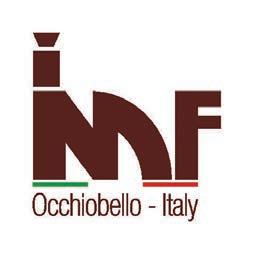
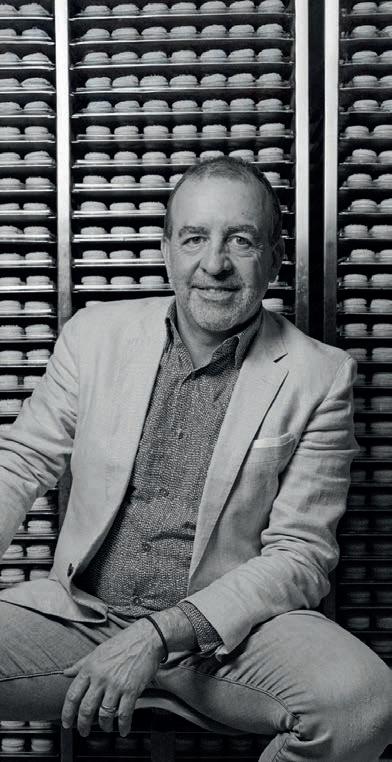
“Customers buy with their eyes, so macarons are a fantastic choice for the café counter,” says Tim.
“What’s more, they’re not just a menu item but can be an upsell product. With various pack sizes, they are a great gi that will have a shelf life of around 10 days.”
Laurent recommends pairing a long

black with CACAO’s passionfruit and macadamia macaron to bring out the beautiful acidity of the co ee, while Tim says you can’t go wrong with the classic avours such as chocolate or pistachio alongside a silky at white.
For more information, visit cacao.com.au
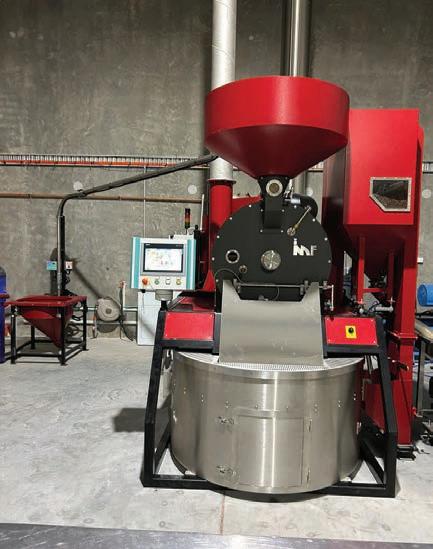
• Consistent roasting to one degree accuracy (auto or manual control)
• 50 adjustable parameters per profile.
• 1000 profile storage.
• Recirculating heat technology saves up to 47% gas consumption.
• Cropster/Artisan datalog integration.
• Over 80 plants in Australia & NZ since 2012 installed by Roastquip.

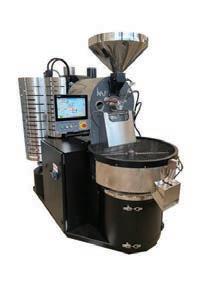
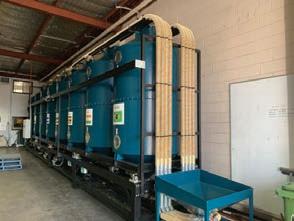

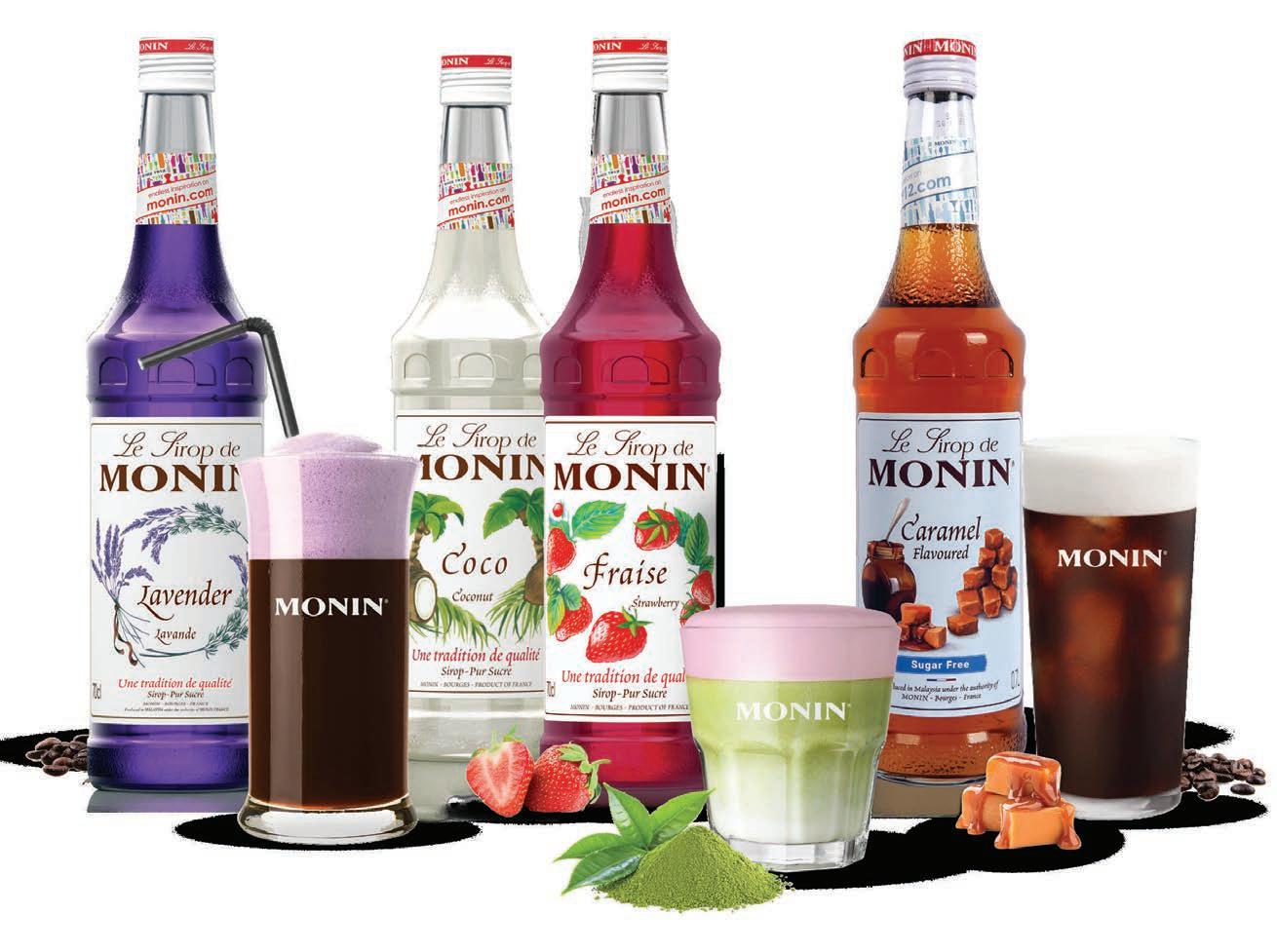



Merlo Co ee on how the industry can further tap into the potential of women and the innovation they contribute.
n challenging times, adversity o en sparks creativity and innovation.
While pressures such as that of soaring green co ee prices can be tough, they also present an opportunity for growth and reinvention.
Companies that thrive during such periods are the ones that embrace change, develop new revenue streams, and use creativity to problem solve. Nic Fry, Chief Marketing O cer at Merlo Co ee, says it’s through the lens of innovation and adaptability that the industry can navigate di cult circumstances and emerge stronger.
While much attention is given to the usual trends and demographics, there’s one group that’s o en overlooked yet holds untapped potential for innovation. Nic says this group is women. She believes building a community with inclusivity at the helm of leadership is crucial, as one of the most important elements of great innovation is diversity of thought.
“You can’t build great innovation without women in the room helping to shape it. Women are typically great innovators because of the so skills they bring, such as observation and listening skills. From a diversity perspective, having di erent people in the room leads to better innovation,” says Nic.
is philosophy has guided Merlo’s strategy for March, in celebration of International Women’s Day on 8 March. In a notable move, the roaster’s Bean of the Month came from Café Femenino – a cooperative of women-owned farms in Peru. e bag featured an image of Pachamama, the Incan goddess of fertility, holding the avour notes of the beans, to honour the 2000 women in the cooperative and those across the industry.
What’s more, on 14 and 15 March, Merlo donated 50 cents from every co ee sold to Women’s Legal Services Queensland, a not-for-pro t organisation that provides legal advice, support, and assistance in domestic and family violence, family law, child protection and sexual assault cases. e company plans to establish an ongoing partnership with the organisation.
e initiative tied in with Merlo’s industry event, Boardroom Brunch, held on 28 March to celebrate women in the industry, but more importantly, to open the conversation on how to collectively problem solve. e event focused on celebrating women in the industry, inspiring each other

by sharing solutions to challenges, and learning from one another’s impact.
“We invited women leaders from across the co ee ecosystem – café owners, our wholesale partners, women in our equipment partnership with San Remo, and representatives from Women’s Legal Services. e idea was to start building a community for women in the co ee industry so we can work together to nd solutions,” says Nic.
“We want to encourage live conversations within the co ee industry that focus on community and collaboration.”
In wholesale, conversations are o en centred on the basics such as the quality of beans, machines, and service availability. But Nic says there’s much more value that can be provided beyond this.
“ ere’s so much opportunity to exchange value in areas beyond the traditional aspects, especially as margins get tighter and running a business becomes more challenging. e goal is to support businesses in staying a oat and thriving, even in challenging times,” she says.
“At our Women’s Day brunch, many of the heads at Merlo are women, and they o ered insights into scaling a business, HR challenges, nance strategies, and more. ey also coached café owners on marketing their business, improving their social presence, and building a network.”
According to Nic, building community will be key, and involving everyone in the conversation – especially women –is essential.
“ e key is collective problem solving –agreeing on the most important issues and creating small workgroups or communities to address them for the bene t of the entire
industry. Right now, it feels very siloed,” she says.
One thing Nic’s noticed is that women leaders o en bring a unique level of passion, authenticity, and honesty to the table to create an environment in which people feel comfortable having open and honest conversations. She says this is where the power of women in the industry lies – in their ability to create spaces where tough, real discussions can happen.
“I believe women bring a unique perspective, and I’m aiming to approach marketing in a more human-centric way. In the co ee industry, especially in ads, there’s o en a focus on machines, brewing processes, and co ee bags, with little emphasis on human connection or storytelling. For me, it’s about celebrating the people in the industry and the partnerships we create,” says Nic.
As demonstrated by the Boardroom Brunch, Nic emphasises the importance of communicating human-to-human, rather than relying on impersonal emails or letters. She believes hosting conversations about what’s happening, explaining why these changes are necessary, and stressing the importance of working together to stay resilient during challenging times is key.
Nic says this approach goes beyond twodimensional communication to enable real and productive engagement.
“A lot is going to change, and it’s important that we keep the spirit of the co ee industry alive, especially for cafés,” says Nic. “We need to provide solutions to keep people coming into cafés while also adapting to new circumstances.”
For more information, visit merlo.com.au
How one co ee company is helping to stay ahead of the sustainability curve with new home-compostable takeaway co ee cups.
Many have experienced the frustration of paper straws: great in theory, but o en impractical when they dissolve in your mouth before you’ve nished your iced latte. is isn’t just a gripe with paper straws, but a common problem when trying to make something both environmentally friendly and practical. Sometimes the ideas just do not land.
Yet, Piazza D’Oro has sourced one solution with its latest eco initiative. e Sydney co ee roaster is set to introduce a new line of takeaway co ee cups, sourced from BioPak, which are not only home compostable but also functional, with the ability to hold hot liquids for a reasonable period of time.
Although this would be a relatively big transition for any company, JDE Australia and New Zealand Quality and Sustainability Manager Rick Davy says the roll-out is just one element in its broader sustainability program, Common Grounds.
Rick says responsible sourcing – one of parent company JDE Peet’s core sustainability pillars – is critical. e business is committed to moving to 100 per cent responsibly sourced co ee by 2025, with Piazza D’Oro already achieving this goal.
“Instead of just having some products or brands with third-party certi cation, we aimed for an impact-centric program that covers all our co ee. We’ve made great progress and are on track to be 100 per cent responsibly sourced globally,” says Rick.
“We’ve also started communicating this on our packaging. You’ll now see our Common Grounds and responsible sourcing messaging rolled out on our Piazza D’Oro bags.”
Recently there has been considerable movement in the sustainability space for Piazza D’Oro, with the company investing heavily in data collection.
e roaster’s progress is tracked against its sustainability targets in the JDE Peet’s annual report. Because of this transparency and accountability, Rick believes the company has become a global leader in the environmental, social, and governance space.
“Having a company like JDE Peet’s taking action on this really helps drive change within the co ee industry,” he says. “Recently, we’ve been more vocal about our e orts, and this shi has brought more data

and a stronger emphasis on tracking and reporting our progress.”
Now, Piazza D’Oro is set to roll out its home-compostable co ee cups by June 2025. According to Rick, this transition was a natural next step in the company’s sustainability journey.
Although some Australian states have made the shi to banning noncommercially compostable takeaway cups, Piazza D’Oro is taking this one step further by switching to home compostable.
“For us, sustainable packaging has always been a priority, and we weren’t waiting for regulations to make the change. e regulations don’t di erentiate between home and commercial compostability, but by moving to home compostability, we’re making the packaging even more accessible for consumers to compost,” says Rick.
However, there was quite a learning curve going from commercial to home compostability for the Piazza D’Oro team. e biggest trial, says Rick, was sourcing a home-compostable product that is functional, can preserve product quality, and hold a hot cup of co ee without failing in the consumer’s hand.
“ ere’s no point in having supersustainable packaging if it doesn’t work, for example if a takeaway cup leaks or a bag doesn’t preserve shelf life and causes the co ee to go stale,” he says.
“Food waste is a huge issue in Australia, with the average household throwing away about 300 kilograms of food per year. Packaging plays a key role in preventing that, so it’s essential it is t for purpose,
not just in terms of end-of-life but also functionality during use.”
Piazza D’Oro has found this balance, with the takeaway co ee cup made from a responsibly sourced paper breboard exterior and an aqueous lining to prevent leaks.
“ e challenge with hot beverage cups has always been that, while bre is a renewable resource, it needs to be lined with something that can hold the hot liquid. A lot of work has gone into developing the right lining and barrier properties. We use a bio-plastic that comes from renewable resources, not oil-based plastics, which can compost within the necessary time frame for certi cation,” says Rick.
Although this is a signi cant milestone in Piazza D’Oro’s sustainability goals, the company hopes the transition won’t impact consumers as there should not be a di erence in the cups’ performance. e so launch is also an opportunity to communicate the change, promote correct disposal – such as checking if your council already accepts compostable packaging, and for partners to integrate feedback into further development of cups.
“Various iterations have been made to improve our takeaway co ee cups over time. We’ve gone through several versions with BioPak to improve performance. For example, when compostable lids were rst introduced, there was feedback about a di erence in mouthfeel. However, this has improved signi cantly in the past couple of years, so we’re hitting the mark on both performance and compostability,” he says.
Rick assures the buck won’t stop at the launch of the cups, as the company is continuously working closely with its customers to improve the product.
“In retail environments, we can get direct feedback from consumers, o en through the contact details on our retail packaging. In the business-to-business sector, feedback generally comes from our customers, who gather insights from their consumers,” says Rick.
“ ey reach out to us, and we work together to address any issues. We also have regular meetings with our suppliers, including BioPak, where we discuss feedback and explore opportunities for improvement.”
For more information, visit piazzadoro.com.au
How IMF’s roasting machines are making the process cleaner and greener for Australia’s co ee roasters.
With the co ee market so closely linked with the e ects of climate change, creating a sustainable business is a priority for many of Australia’s specialty co ee roasters. Roastquip, the exclusive Australian distributor of IMF roasting machines, helps roasters realise this ambition with e cient, emissionsreducing equipment.
“When purchasing new equipment, running costs and the environmental impact are some of the most important factors for roasters,” says Will Notaras, Founder of Roastquip.
“ ey are looking for ways to reduce their emissions while also reducing their energy usage, which is becoming increasingly expensive. Generally, we now have a more environmentally aware customer base.”
IMF specialises in producing lowemissions roasting equipment that delivers energy savings for its users. Its RM range, which comes in sizes from six to 480 kilograms, features technology designed to make co ee roasting as environmentally conscious as possible.
Its headline feature is its recirculating heat technology, which saves more than 30 per cent in gas usage and produces fewer greenhouse gas emissions compared to conventional roasters tted with a separate a erburner.
“Conventional roasters have a burner heating the drum and another separate a erburner to incinerate the smoke, which will exit the ue as hot air. IMF roasters, on the other hand, have only a single burner that does the job of both by simultaneously heating the beans and incinerating the emissions using recirculating heat technology pioneered by IMF,” says Will.
“Once the emissions have been incinerated in the combustion chamber at high temperature, the machine uses its unique vortex and equalizer technology to automatically modulate the vortex valve at hundreds of calculations per second. It mixes ambient air into the hot air stream to ensure the clean recirculating heat is at the precise temperature inside the drum to one degree of accuracy. e equalizer also ensures heat is evenly spread across the entire bean mass inside the drum.”
is process means that the machine saves users a minimum of 30 per cent gas usage, but Will says the savings are much

higher because of its ability to roast four true batches per hour.
“With a lot of conventional roasters, you have to wait several minutes between batches to allow the temperature to get back to the desired level, resulting in only achieving approximately three batches per hour,” he says.
“ at’s not the case with an IMF roaster, which gets back up to temperature very quickly while controlling the heat very accurately. is reduced wait time decreases gas consumption and results in a true four –potentially ve for specialty co ees – batch per hour roasting rate, adding a further 25 per cent increase in productivity.”
Another bene t of the temperature accuracy of IMF machines, according to Will, is the consistent results they produce.
“Whether it’s the rst or last roast of the day, the IMF will produce the same co ee batch a er batch,” he says.
“ is is particularly useful when trialling a new pro le. Because you can control the temperate so accurately, most roasters only need to do one or two roasts on the IMF, make their modi cations, and then they’re much closer to where they want to be. Other roasting machines could take several attempts to get it to the desired pro le. is not only saves time and gas but also bean wastage.”
Will highlights that IMF roasters also
enable the user to make quick changes to the recipe in real-time using the manual override function.
“When developing new pro les for blends or single origins, this allows the user to customise roasting pro les very quickly while the operator is roasting the co ee, instead of having to wait for the batch to nish and making the changes on the next roast,” he says.
Its other time-saving features include an automatic preheating pro le, which sounds a reminder alarm when the roaster has been warmed up for the precise amount of time and is at the ideal temperature to begin roasting.
“It may seem like a small thing, but over a year that gas consumption adds up if the timing is not monitored,” says Will.
IMF also manufactures blenders and silos that automatically pre- or post-blend the co ee while the operator is roasting, eliminating manual handling and increasing productivity.
“IMF recirculating heat roasters have been widely praised for their fuel e ciency and ability to roast in fast times if required,” says Will, “while also producing exceptional quality and consistent co ee – batch a er batch.”
For more information, visit roastquip.com.au or imf-srl.com/en/


Emma McDougall is the Communications and Administration Coordinator of the NZSCA.
Emma McDougall reveals how the NZSCA ensured the 2024 Aotearoa Barista Championship was the organisation’s most sustainable event to date.
The Aotearoa Barista Championship is a joyous celebration of the artistry and dedication of baristas, bringing together more than 300 passionate individuals at Whirinaki Whare Toanga in Upper Hutt.
While the star of the show is the co ee on stage, there’s a small team of amazing volunteers working behind the scenes to make sure everything runs smoothly. In 2024, a shi in event hire policies presented us with an opportunity to fully embrace sustainability. We rose to the challenge, ensuring every aspect of the event contributed to a positive environmental impact. Some of it was messy, some of it was clean, but it was all in an e ort to move towards an event that we could be proud of.
Sustainability was at the heart of the 2024 Barista Championship, with all waste diligently collected and sorted into appropriate recycling processes. ink 12 crates of milk bottles washed and put into the correct recycling stream. Volunteers and judges were encouraged to bring their own reusable drink bottles, playing a key role in reducing single-use plastics and fostering a culture of environmental responsibility.
To further minimise waste, a dedicated kit lled with reusable crockery was provided for baristas, ensuring competition rounds le no unnecessary footprint. oughtfully curated sponsored goodie bags showcased sustainability, featuring reusable and limited plastic items. Event T-shirts, printed in Dunedin using sustainable ink, arrived without any unnecessary packaging. Traditional plastic event materials were replaced with sustainable tags and string, while volunteers and sta utilised reusable aprons, pencils, and clipboards. Even event sheets were responsibly shredded and

recycled post-event, ensuring a full-circle approach to sustainability.
No resource was wasted. Cardboard from the event was given new life as weed suppressant for local gardens or was saved for future reuse. Compost boxes were made readily available, ensuring organic waste was repurposed rather than discarded.
So packaging found a second home in the local council’s recycling collection, while limited land ll was removed by friends, a task made even greener thanks to the dedication of volunteer AP, who transported it using his electric car. Huge thanks to the Meadow Fresh team who took other parts of the polystyrene to the Mitre 10 recycling station.
e sustainability ethos extended into hospitality, ensuring kai (food) for sponsors and volunteers was provided with minimal packaging. Reusable cutlery and crockery were utilised to eliminate unnecessary waste. A reusable cup library was introduced by sponsor Acme Cups, revolutionising beverage service by allowing attendees to borrow and return cups throughout the event and reducing
the reliance on disposables. anks to our incredible volunteers who washed these.
Honouring the champions of the event was done in the most sustainable way possible. Trophies were cra ed from locally sourced wood and engraved by skilled local artisans, reducing transport emissions while supporting the local economy.
e Aotearoa Barista Championship proved that a large-scale event can be both exciting and environmentally responsible. Every initiative taken contributed to reducing waste, conserving resources, and setting a gold standard for sustainable event management. is event serves as a beacon for future championships, showcasing that sustainability and excellence go hand in hand. We o en talk about our waste at the café or roastery, and now events are in the spotlight. With continued dedication and innovation, we can brew a better, greener future for co ee events and beyond.

For more information on the New Zealand Specialty Co ee Association, or to join, visit nzsca.org


Following the release of two sell-out models, the launch of the F83 E Sense PRO in Australia this May marks the completion of Fiorenzato’s trilogy of Sense grinders.

When Co ee Machine
Technologies brought the AllGround Sense and F64 EVO Sense PRO to market in Australia, the team were unaware of just how successful the Fiorenzato grinders would be.
Naturally, they had faith in the Italian brand with which they had collaborated for many years, yet the Sense range still exceeded everyone’s expectations – including National Sales Manager Carmelo Corallo.
“In late 2023, we released the AllGround Sense commercial home grinder and the reaction since has been incredible. roughout 2024, we couldn’t keep up with the demand,” he says.
“As soon as we received the grinders, they would sell out immediately. I’ve never seen anything like it in all my time at Co ee Machine Technologies.”
Carmelo believes the high-performance grinder is so popular because it delivers professional-standard functionalities to the increasingly switched-on domestic market. He also highlights its pricepoint as being accessible to a wide range of audiences, enabling home brewers and o ce sta to produce consistent quality co ee without having to invest in expensive equipment.
“It’s sold as a home grinder, but really it’s capable of delivering professional quality. ere’s no other brand o ering a commercial grinder with a built-in scale for the domestic market at this price. It retails at $1650, so it’s very a ordable,” he says.
“It has shown users that making consistently good co ee can be simple. With its grind-by-weight technology, the user simply has to plug it in, push the button, and repeat.”
In January 2025, Co ee Machines Technologies launched the next grinder in the Sense series: the F64 EVO Sense PRO. An evolution of the XGi series, the professional grinder was designed to deliver value and consistency to small- to mediumsize hospitality venues.
“ ere are a lot of small- to mediumsize venues in Australia, therefore the F64 EVO Sense PRO has quickly become very popular,” says Carmelo.
“We’ve had a huge number of requests from roasters that want to trial it in some of their key accounts.”
While the Sense range has gone down a storm in Australia so far, it was missing something: a third product to complete the triad and cater to the medium to large hospitality market.
“ e F83 E Sense PRO is the missing link. e larger accounts doing 30 to 40 kilograms of co ee per week want this technology,” he says.
“However, Fiorenzato wanted to ensure the technology was right for the Australian
“IT HAS SHOWN USERS THAT MAKING CONSISTENTLY GOOD COFFEE CAN BE SIMPLE. WITH ITS GRIND BYWEIGHT TECHNOLOGY, THE USER SIMPLY HAS TO PLUG IT IN, PUSH THE BUTTON, AND REPEAT.”
market before introducing a grinder for these key clients. at’s why they rst tested the F64 EVO Sense PRO and AllGround Sense, and the market feedback has been fantastic.”
e rst F83 E Sense PRO model arrived at Co ee Machine Technologies’ headquarters in March and is due for national release in May. Carmelo is con dent the new addition will be just as popular as its sister products.
“We have high con dence in the F83 E Sense PRO as it has all the same tech as the F64 EVO Sense PRO model, just with larger Dark -T Burrs,” he says.
“It also has a new Master Mode feature, through which the group handles are weighed to ensure the grinder auto dispenses the preset weight, with no need to touch the screen. What’s more, the hoppers have been redesigned so roasters have space to advertise the co ee or brand, with a at face allowing for customised prints or logos.”
Dark-T burrs are said to deliver unrivalled durability because of their titanium, aluminium, carbon, and nitrogen coating. ey are designed to provide a lifespan ve times that of traditional burrs, as well as reducing maintenance and providing a larger grinding surface to avoid damaging the co ee beans to preserve optimum avour.
“A normal commercial co ee grinder might only get through 700 to 900 kilograms of co ee on one set of standard burrs, but the Dark-T burrs can process more than 4000 kilograms before they need to be replaced,” says Carmelo.
“ at’s a huge amount of value from a
service point of view, and users have peace of mind that it’s not going to break down a er a year and put them out of service for however long it takes to get xed.”
He also highlights that the size of the burrs (83 millimetres) and their at shape are becoming increasingly favoured by baristas and roasters.
“Ten years ago, everyone was using conical burrs and no one was talking about at burrs. But now attention has turned to particle distribution and size, and the impact that has on avour and consistency, therefore at burrs are becoming the preferred choice,” he says.
“ e F83 E Sense PRO has found the sweet spot. It o ers speed, consistency, and reliability without breaking the bank. A lot of roasters are changing their taste pro les, and I think these burrs are delivering the avour they want to achieve.”
With built-in grind-by-weight technology, the Sense range also seeks to make the job of the barista more straightforward. Carmelo says the technology removes the issue of over or under dosing – one of the most common errors with the greatest implications on avour.
“Variability is going to result in an inconsistent co ee quality. Because the Sense range of grinders controls the weight of the grind, that’s going to automatically help manage the extraction time. It removes one of the variables and helps venues and baristas increase the consistency and quality of their products,” he says.
Another bene t for F83 E Sense PRO users is how easy it is to clean. Many grinders require tools to disconnect the collar to gain access to clean the blades, but the Sense range features quick-release levers. Carmelo says this makes access seamless while not disturbing any of the mechanics of the grinder.
“It’s amazing because many grinders make a lot of mess, but Fiorenzato’s antistatic guard makes the machine very clean and very fast. e grinding chamber can also be removed easily so the grinder itself is simple to clean and maintain,” he says.
When it’s launched in May, the new F83 E Sense PRO will be targeted at large-scale cafés, o ces, hotels, and other hospitality venues. Carmelo believes it is fantastic value compared to its competitors, with a retail price of less than $5000 including a 24-month factory-backed warranty.
“ e F83 E Sense PRO completes the holy trinity of Fiorenzato Sense grinders. We have seen the success of the AllGround and F64, and this grinder has all the same mechanics,” he says.
“We expect the F83 E Sense PRO will be just as much of a hit.”
For more information, visit co eemachinetechnologies.com.au

Barista Equip reveals how its integrated milk and liquid dispensing solution can make the process of cra ing chilled drinks up to 500 per cent faster.
When there’s a growing queue of customers waiting for their takeaway iced lattes, chilled cold brews, and espresso tonics, every second of the barista’s time counts.
Each micro step in their work ow adds precious moments to the wait – the time spent having to dispose of an empty alterative milk carton, reaching for a new one from the fridge, unscrewing the lid, and putting it in the bin could be the straw that broke the camel’s back for time-poor customers, turning a happy regular into a rattled one.
e team at Barista Equip in Queensland are always looking for solutions to make cafés more e cient. Witnessing the rising popularity of chilled drinks and observing the sticking points in a barista’s work ow, Founder Brett Bolwell partnered with Australian brand FloSmart to bring a new dispensing solution to market.
“FloSmart is an integrated milk, cold brew, and liquid dispensing system that makes preparing chilled drinks much more e cient while also reducing waste,” says Brett.
“We can o cially now say we have the fastest cold co ee dispensing unit in the world, reducing the current average time of around 1 minute 10 seconds per serve to just under six seconds to prepare two. at’s more than 500 per cent quicker.”
is huge time saving is a result of the four-tap system, which can dispatch both milk (or milk alternative) and cold brew co ee into the same cup simultaneously. Cafés can choose to have cold brew alongside dairy milk and their customers’ two most popular alternatives.
What’s more, the FloSmart can recognise the jug or cup placed under the taps, automatically dispensing a preset, precise volume of liquid. is means the barista will only need to press a few buttons on the touch-screen interface when changing the drink to be dispensed.
“It’s been developed to reduce the time the barista spends opening bottles and disposing of old ones. It also removes the guesswork of free pouring milks and cold brew, which simultaneously reduces waste,” says Brett.
“ e machine will remember the last drink the user dispensed and do the same
automatically until it’s told to prepare something else through the interface. All the drinks are preprogrammed in, so the barista just has to place the jug in the correct position and press a button.”
It’s not just iced lattes the FloSmart can deliver, the machine can dispense almost any liquid – from syrups, sparkling water, and iced teas to wine and premixed cocktails. Each liquid is stored in a bladder in a refrigerated unit under the counter and fed to the nozzles in isolated, refrigerated tubes, minimising the risk of cross contamination and keeping the liquids at the desired temperature at all times.
“Having the milk, cold brew, and other liquids stored in bladders under the bench reduces clutter and creates a clear workspace for the barista. It also reduces the number of cartons and milk bottles that need to be disposed of, so it is a much more sustainable solution,” he says.
“In fact, the bladders are o en much cheaper than buying multiple bottles, especially when sourcing milk and milk alternatives.”
For an even more sustainable solution, milk can be stored in e Udder Way

reusable kegs, which have a capacity of up to 18 litres and are compatible with the FloSmart system. With a lifespan of eight to 10 years, the kegs can be used up to 800 times, equating to 302.4 kilograms of singleuse plastic waste reduction.
Brett says it’s extremely straightforward to change the bladder or keg and the drinks programmed into the system, therefore as the seasons change café owners and managers can easily shake up their menus. What’s more, FloSmart’s in-built telemetry system means managers with multiple venues can program in new drinks across a eet from one location.
“Users can change recipes remotely and across the eet, which is essential for consistency at co ee shop chains. Pouring by hand, there could be a huge di erence in the co ee to milk ratio of an iced latte, whereas with the FloSmart the owner can be con dent their product is going to be of the same proportions and quality across the board,” says Brett.
“ e telemetry systems also enables users to track a whole range of metrics, from how many drinks have been dispensed from each nozzle to monitor sales, to the venue’s waste reduction from switching to bladders.”
Keeping the machine clean is essential, yet the system’s in-built weekly reminders ensure it continues to work safely and e ciently.
“It has an in-built cleaning veri cation system that will deliver a reminder when a cleaning cycle is due. If that’s ignored, a er a short time it will prevent the system from working to ensure it is clean and safe to use,” says Brett.
“ e process of cleaning the machine is very simple. It’s also Hazard Analysis and Critical Control Point (HACCP) certi ed.”
In 2022, Brett and the Barista Equip team installed a FloSmart system into Pinnacle Brewing’s new café concept, Cubby House. General Manager Glen Carseldine says one of the biggest bene ts of the solution is its reduction in waste.
“We take our impact on the environment
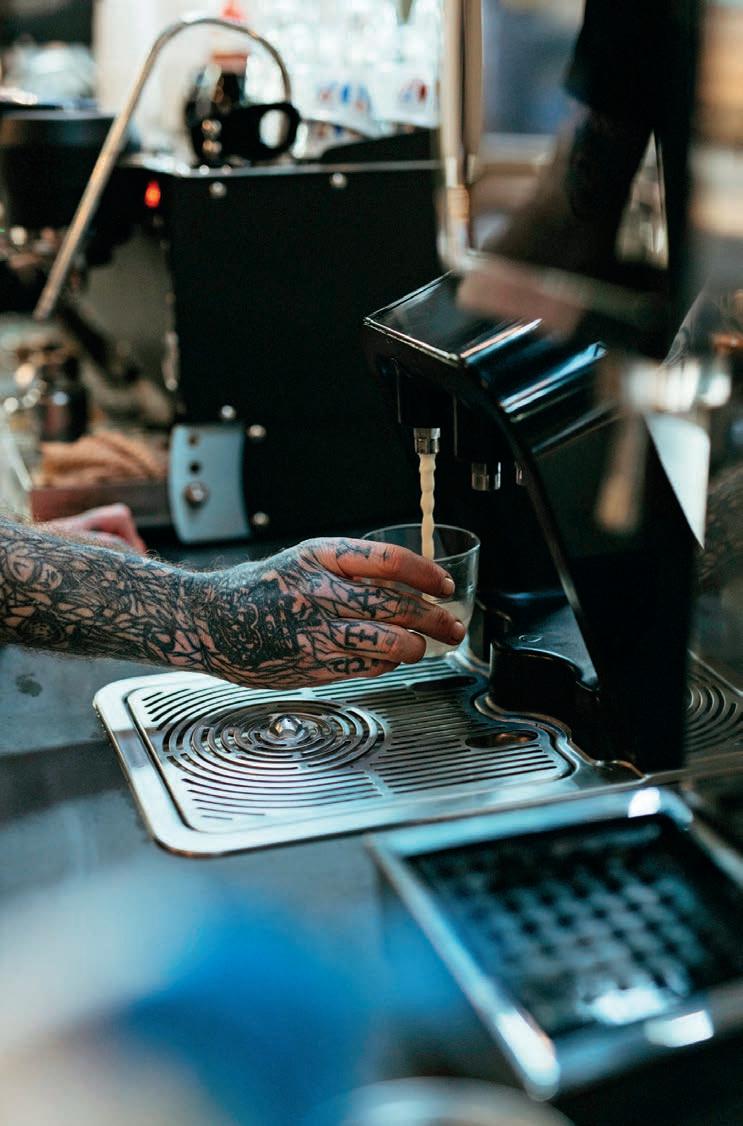
seriously and using 10-litre bladders instead of two-litre plastic milk bottles saves a huge amount of waste,” he says.
“ e fact that the system dispenses the exact amount of milk needed also means we’re saving a huge amount of milk waste, which in turn dramatically cuts our costs
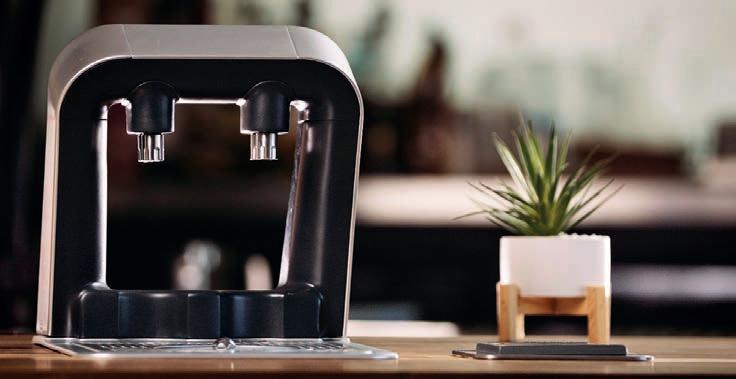
down. I would imagine we’re saving around four litres of milk a day that would have gone down the drain.”
At Cubby House, the team primarily use the FloSmart system to make chilled co ee drinks, pairing milk and alternatives with premium cold brew from sister company Pinnacle Brewing.
“As well as reducing waste, the system has also helped us to speed up service, as it automatically doses the exact amount of cold brew and milk directly into the cup,” says Glen.
“Cold brew has always been our specialty, but over the past few years we’ve seen a rising interest in chilled co ee drinks. e FloSmart makes our work ow more e cient and is very easy to use, there’s almost no training for new members of sta .”
For more information, visit baristaequip.com.au

A new era of on-the-go espresso is on the horizon with the launch of the new Pixapresso from Wacaco.
Wacaco changed the espresso game in 2014 with the release of the Minipresso, the rst handheld portable espresso machine to use a single-handed piston. And now the Hong Kong-based co ee innovation company is about to do it again with the launch of its rst electric portable espresso maker.
While previous Wacaco models required the user to heat the water using a kettle or a gas stove, the Pixapresso heats the water and pumps the espresso.
“We’re very excited to launch the Pixapresso in Australia,” says Curtis Arnold, Director of Co eeTools, Wacaco’s Australian distribution partner.
“ e key point of di erence with this model is that it’s electric and rechargeable. In perfect conditions, it can heat 120 millilitres of water to 96 degrees Celsius in as little as three minutes.”
e clever piece of equipment is compatible with both freshly ground co ee and Nespresso pods, giving users the option to tailor their co ee to their preference. An intuitive interface enables customisation of brew settings, while temperature control o ers three options depending on the co ee: 88, 92, or 96 degrees Celsius.

As with all the products Co eeTools stocks, the Pixapresso was tested by the team before it was launched at MICE2025 in March.
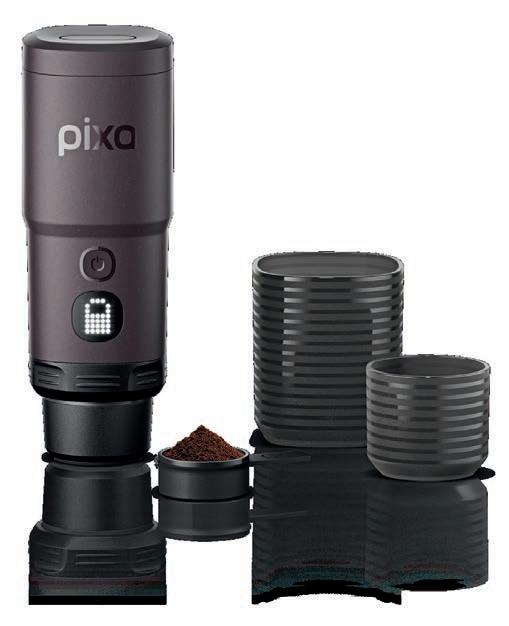
“We’ve worked with Wacaco since 2015 and have a very good relationship with the team. ey sent us prototypes of the almostnished product, which we put through our
“ is includes following step by step the instructions provided to see if we get the same result, trying all the di erent settings, imagining the worst-case scenarios and seeing what happens, and generally putting the equipment through its paces. We then provide feedback to Wacaco.”
Curtis and team were thoroughly impressed by the Pixapresso and say one of its best features is its ease of use.
“It’s a great product for the average Aussie who enjoys making good co ee,” he says.
“For people who don’t have enough space to install a domestic espresso machine in their kitchen, it’s a good option for making co ee at home. And, of course, it’s a gamechanger for those making co ee on the go when camping or hiking, as they will no longer require a second piece of equipment to heat the water. Now, the only limiting factor is having the co ee and water at the ready.”
Priced at less than $275, Curtis highlights the value of the versatile equipment.
“You won’t nd a plug-in espresso machine at this price. And what’s more, you can take it with you to the o ce or on your next trip,” he says.
“Wacaco products are also built to last –they are very high quality. Of all the brands we represent, we have sold the most Wacaco equipment and received very few issues from users.”
For more information, visit co eetools.au
In 2025, Co eeTools will once again partner with CafeSmart to help ght homelessness and support those at risk in Australia.
“Before we started sponsoring CafeSmart in 2022, we were a supporter for many years. It’s such a worthy cause, but this year it feels more important than ever before as the number of people facing housing challenges continues to rise,” says Curtis.
“ ere are a lot of stereotypes of those impacted by homelessness, but it can happen to anyone – your brother, your colleague, your neighbour. One of the best things about CafeSmart is the support is localised for each region, based on its unique needs. We are thrilled to be involved again in 2025.”
Last year, as well as promoting the campaign and encouraging its customers to get involved, Co eeTools provided an xBloom co ee brewer as the prize for the café that raised the most money. is year, the company will be delivering the same prize – with xBloom also throwing another second brewer into the prize haul.
“We’re honoured to have the continued support of Co eeTools for CafeSmart 2025. Curtis and the team have such a genuine passion for this campaign and truly believe in its impact on local communities. eir commitment helps power CafeSmart year a er year, making a real di erence where it’s needed most. I can’t wait to see what we can achieve together in 2025,” says Liz Bayrak, CafeSmart Community Campaign and Events Coordinator.
“CafeSmart wouldn’t be possible without the generosity of cafés who go above and beyond to support their local communities. eir fundraising e orts are the heart of the campaign and we’re so grateful to Co eeTools for helping us say thank you. By donating an xBloom pourover machine, they gave us the chance to reward our top fundraising café for their incredible e ort during CafeSmart 2024. It’s a great way to give back and celebrate the cafes that make a real impact.”
For more information, visit streetsmartaustralia.org/cafesmart
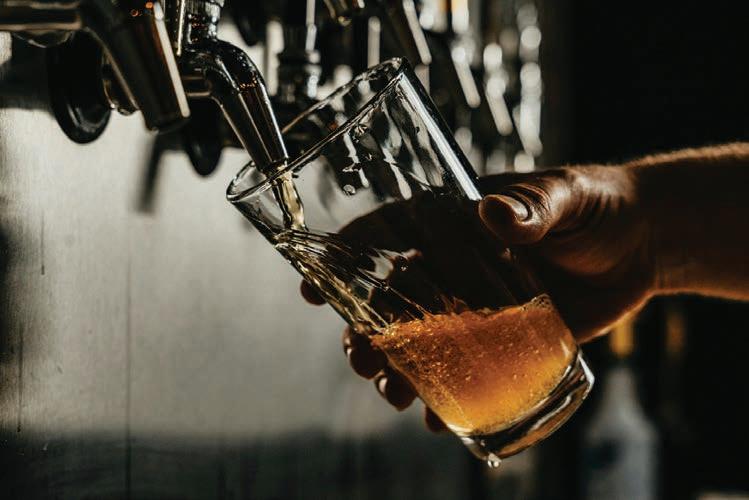

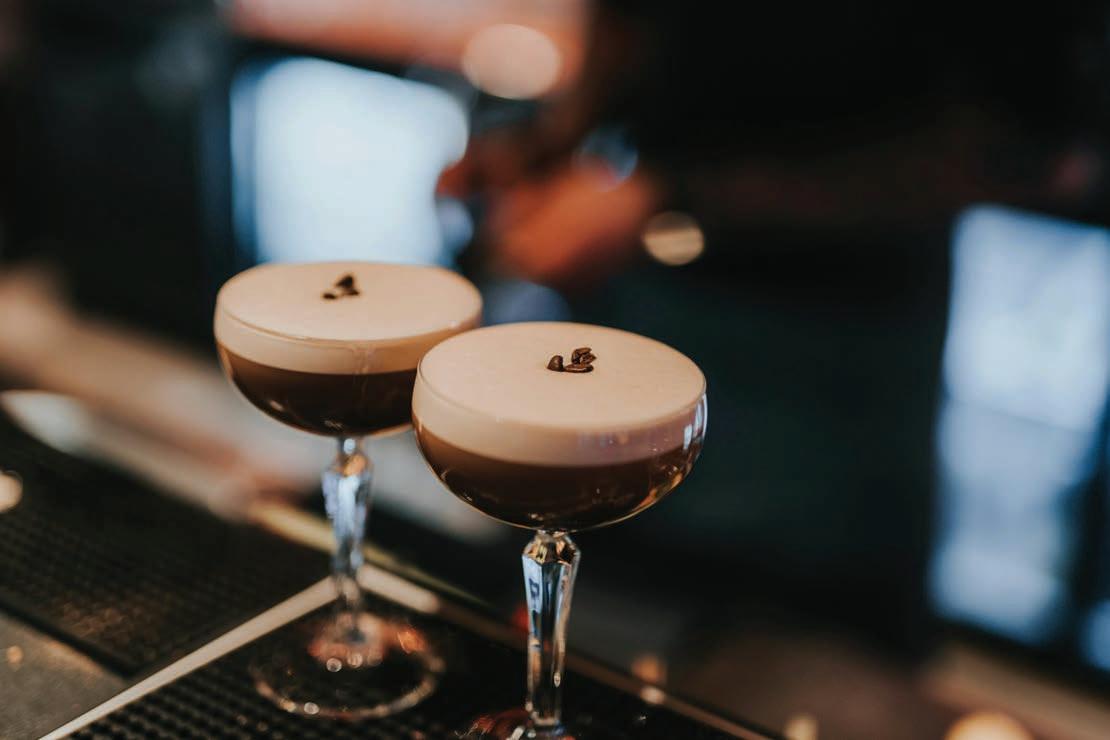

World Barista Champion runner-up Michalis Dimitrakopoulos shares his advice on selecting the best espresso machine for your setup – whether you are just starting out or a seasoned pro.
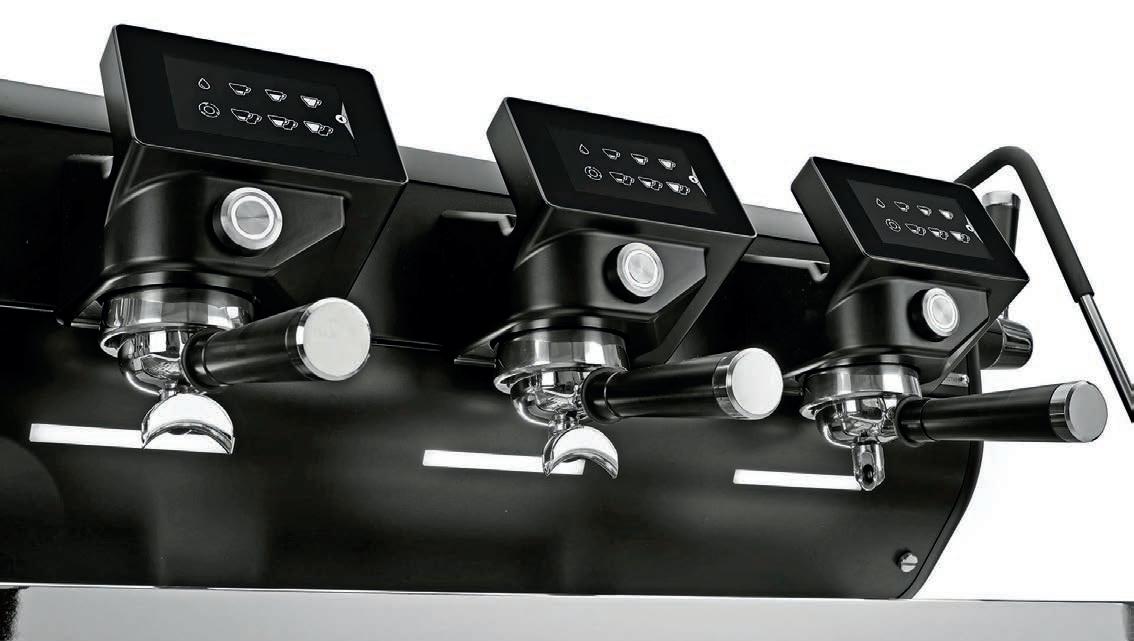
Selecting the right espresso machine for your café is a bit like buying your rst house: it’s o en one of the biggest nancial commitments you’ll make as part of your business, so choosing something that’s going to be dependable and stand the test of time is essential.
Michalis Dimitrakopoulos, 2016 World Co ee in Good Spirits Champion, 2019 World Barista Champion runner up, and Barista Attitude Brand Ambassador, knows the pressure of selecting the right machine rsthand. With so many brands on the market and new models released regularly, he admits the choice can be overwhelming.
For those looking for a new machine who don’t know where to start, he suggests focusing on a few critical functionalities.
“If you’re spending money on a new machine, you want something that’s ideally going to last up to 10 years and deliver quality products. For that reason, I think it’s worth spending a little more on additional functionalities so that in ve or six years you still have a machine that’s at the top of its game,” he says.
“ e rst thing I would look for is stability. If you don’t have a stable water temperature throughout the extraction, you’ll never be able to get consistency in the co ees you serve. As someone who likes to experiment with the pro les of co ees, I would also look for a machine that allows me to play with the pressure, temperature, and pre-infusion.”
But where to start? Michalis recommends speaking to other café owners and baristas in the industry to get honest feedback. He also suggests taking your search online where there’s a wealth of information.
“When I started out in the industry, information about equipment wasn’t readily available like it is now. You had to read books and seek out other people in the industry. Now, with things like YouTube, you have reviews and product showcases available within just a few clicks – even platforms like Instagram and LinkedIn are lled with educational content,” he says.
He says it’s essential to spend some
time with a machine before taking the plunge, trialling it to see if it suits your unique work ow and café needs.
“You wouldn’t buy a car without test driving it and espresso machines are exactly the same,” he says.
“Most distributors have showrooms around the world and they’ll be more than happy to welcome people in the industry to road test the machines. Tradeshows and events are a great way to discover a lot of machines in a short space of time, and usually they’ll let you have a go.”
As a World Barista Champion runner up, Michalis knows the feeling of completely trusting a machine to perform while under pressure. To create a level playing eld, each year the competition has an o cial espresso machine sponsor, meaning competitors must get to know a new machine before taking part in the world’s ercest barista battle.
“ e Specialty Co ee Association chapters in each country put the competitors in touch with the local distributors to ensure they have access to the
machines in their country in the run up to the competition,” he says.
“ ey have the opportunity to get to know the machine within the standards of the competition, so they can try their co ees and make sure everything is in line.”
From 2022 to 2025, the Barista Attitude Tempesta was chosen as the o cial espresso machine sponsor. As the brand ambassador, Michalis is now involved in highlighting its qualities – both to high-level competitors and everyday baristas looking to cra exceptional co ee.
“ e Tempesta’s most striking feature is its aesthetic. You look at it and think ‘wow’ –it’s very visually appealing,” he says.
“It’s a multi-boiler machine, so it’s perfect for cafés that serve multiple co ees as each group head can be set to its own temperature.”
e machine also features pre-infusion technology, which saturates the co ee puck before brewing. Michalis says this process helps to ensure the co ee grounds are evenly saturated, delivering a nal cup with better avour. e pre-infusion time can be adjusted to deliver the desired avour pro le.
“Another great feature of the Tempesta is its steam wand, which has been designed to create a drier steam that results in less water in the milk,” he says. “ e Super Dry technology prevents condensation and preserves milk quality, producing a much creamier avour and mouthfeel.”
Another functionality he highlights is the ow rate control, which can be adjusted via a lever.
“ is is a great feature as it means you can adjust the pressure of the extraction from the beginning to the end. You can experiment with this to produce a sweeter cup with more clarity,” he says.
Also in the Barista Attitude family of machines is the Pilot, a value-focused single-boiler model. It was designed to deliver the same stability and consistent quality as the Tempesta, but in a simpler format.
“ e Pilot has many of the Tempesta’s features, such as the pre-infusion control and dry steam dispensing system,” he says.
“With some single-boiler machines, you get a very high water temperature during extraction that results in a bitter tasting co ee. e pre-infusion control system of the Pilot means users can reduce the bitterness and produce more clarity, acidity, and complexity.”
Michalis says both the Pilot and Tempesta are suited to Australia’s highvolume, milk-focused co ee venues.
“Both machines will perform well in busy co ee shops. Specialty venues serving a range of di erent beans will bene t from the Tempesta’s multi-boiler system, which
better suits those looking for more highlevel experimentation,” he says.
No matter which machine is selected, he stresses both are very simple to use, with a touch-screen interface giving the user the ability to change metrics in just a few steps.
“ e screen enables the barista to change the temperature, pre-infusion, and the volume of extraction, quickly adjusting the parameters,” he says.
“For those new to Barista Attitude, the machines are very easy to work with and skill up junior members of sta on.”
With regular servicing and cleaning,
Michalis Dimitrakopoulos suggests focusing on a few critical functionalities when looking for a new espresso machine. Image: Michalis Dimitrakopoulos.
Michalis believes the Pilot and Tempesta will continue to deliver consistently good results for years – even decades.
“Using the car analogy once again, a car will last you 10, 20, even 30 years if you look a er it, and espresso machines are very similar,” he says.
“If the machine is cleaned properly every day and serviced annually, it will work at peak performance for years.”
For more information, visit barista-attitude.com and Australian distributor CWE cwe.com.au

How one piece of equipment can unlock new drink possibilities, drive innovation, and elevate the café experience.

It’s a well-worn statement that Australia is a global leader in the specialty co ee scene. e culture here was built on a European model, which has seen highquality co ee seamlessly incorporated into traditional café settings.
However, despite its leadership, it’s believed Australian cafés could learn a thing or two from their American and Asian counterparts. Many North American venues follow a model that bridges the gap between hot and cold drinks, creating the best of both worlds: the hot bar, cold bar cafés.
According to Tim Sweet of equipment supplier Barista Group, the cold bar addition to cafés represents enormous potential. He says this approach can not only enhance the overall café experience but also provide a nancially sustainable model, enabling venues to tap into an entirely new demographic.
“If you prefer specialty co ee, you’ll stick to specialty co ee cafés. And if you’re a er a vanilla caramel mocha, you’ll typically stick to mainstream commercial cafés, which is a massive market by comparison. But by breaking down the barriers between casual and specialty co ee drinkers, hot bar, cold bar cafés are transforming the co ee culture to make
it more inclusive and capture a broader audience,” says Tim.
Recently, the fusion of unexpected avours and the rise of unique, sometimes quirky drinks are de ning the evolving landscape of Australian co ee culture – and it’s not going to slow down any time soon.
In late 2024, Barista Group Founder Joe Chalhoub visited Berlin and discovered LAP Co ee, where he was captivated by its split menu featuring both classic and cold co ee options. A er enjoying a standout Iced Oat Caramel Matcha, he learned from the Co-Owner that traditional co ee menus are declining in popularity as younger drinkers drive the demand for creative, cold beverages similar to the Australian market.
e Strawberry Matcha and Mont Blanc have solidi ed their place as menu staples, while the rise of ube syrups adds an exotic twist to traditional co ee drinks. Along with growing experimentation with ingredients such as charcoal and matcha-infused beverages, both cafés and consumers are pushing the boundaries of traditional co ee drinks.
“O en there are two major drivers for large scale change. In the past, Australia was a country on the frontline of change because as an industry we wanted to lead the way. But now we nd our industry in a position of
change due to necessity,” says Tim.
He adds that another exciting shi is the emergence of house-made sodas. Rather than relying on pre-bought sodas, cafés are cra ing their own iced teas, lemonades, and sodas for a fresh and creative alternative to traditional zzy drinks.
“ ere’s a real buzz in the US around co ee innovation right now. New trends are popping up everywhere, and it’s exciting to see how creative and inclusive the scene has become. Co ee culture has always been there, but it’s really taking o now, with bold new avour combinations and drinks reaching a wider audience,” he says.
“A lot of Australians who’ve travelled to the US and Asia are seeing the potential in this co ee revolution and bringing these fresh ideas back home.”
With trends like matcha and ube, which have roots in Eastern cultures, co ee is increasingly blending Eastern and Western in uences to make café culture more global than ever. It looks like cold drinks are here to stay – and will continue growing – as social media fuels the trend, with their visual appeal, vibrant colours, and unique presentations gaining attention.
“It’s not just about the taste, it’s about the experience and the visual aspect that draws people in. When people see drinks like ube

or matcha lattes popping up in cafes, they’re not just attracted to the avour, they’re intrigued by how it looks, which adds to the overall experience,” says Tim.
To remain relevant in the market, it’s important for cafés to leverage this growing movement, hop on board, and make the most out of it. Tim believes a gateway to unlocking this potential is the Übermilk Plus liquid dispenser.
He says the machine is the ideal assistant to any café looking to innovate in the cold drinks space. But more importantly, it alleviates some of the pain points café owners may experience when trying to lean into the cold drinks trend.
Tim says a lack of skills is one common factor deterring café owners from switching up their menus. To address this, the Übermilk Plus can be con gured to deliver up to seven liquids. For example, it can deliver two types of warm or cold, perfectly textured milk simultaneously, as well as up to ve other liquids, including cold brew, chilled foam, syrups, and more.
“Labour, in particular, is a major expense, and many of these new drinks require learning new skills or adding preparation time,” says Tim.
For a complex beverage, Übermilk Plus can start with a prepared base, such as a concentrated matcha designed and prepared in-house or in bulk, to ensure a consistent, replicable result each time. Whether it’s a strawberry, mango, or another matcha
variation, they simply ll the cup with ice and add the pre-measured matcha concentrate and programmed ratios.
“ e machine is then prompted to create a consistent serve. From there, you can add foam or other ingredients to customise the drink based on the customer’s order, but the core base of the drink remains the same,” says Tim.
“Because the Übermilk system can prepare seven di erent ingredient options, this replaces the need for messy, inconsistent squeezy bottles and manual measurement of ingredients, , this can invite opportunities for human error, cross contamination and inconsistency.”
He says that during peak times, this can become a labour burden. erefore, the goal of the Übermilk is to combine the expertise of skilled baristas with cutting-edge technology, helping cafés meet the growing demands of the market while maintaining consistency and e ciency.
Tim encourages the industry to embrace change, let go of the fear of the unknown, and reap the rewards.
“Change can be a frightening word, especially in current times. But a lot of these changes don’t require us to abandon any of the specialty co ee traditions and menu items we currently hold dear,” he says.
“ e fear of the unknown comes from the fact that many in the co ee community have been doing things a certain way for a long time, and with the pressure of a busy
environment, they’re o en not inclined to learn new skills or expand their menus. It’s typically those new to the industry or those already established and open to change who embrace these innovations.”
However, the nancial return from these drinks o en justi es the extra e ort, o ering a substantial pro t that is much more sustainable than what’s typically seen in the co ee industry.
“ e price is more appropriate for the volume and total sale value that co ee typically represents. Right now, while the price of co ee per kilogram is increasing, it still pales in comparison to labour costs and the overall sale price. In Australia, co ee remains relatively cheap compared to the overheads and cost of goods,” says Tim.
Drinks with a higher sale price highlight just how much cheaper a standard at white or cappuccino is in comparison to cold drinks. Tim says this creates a comparison opportunity for consumers to re ect and appreciate how a ordable traditional café items are.
“By shi ing from the European-based model, we don’t need to lose what we love most,” says Tim. “Instead, we can enhance our o erings and adapt our operations to meet the demands of the current times and future expectations.”
For more information, visit baristagroup.com.au
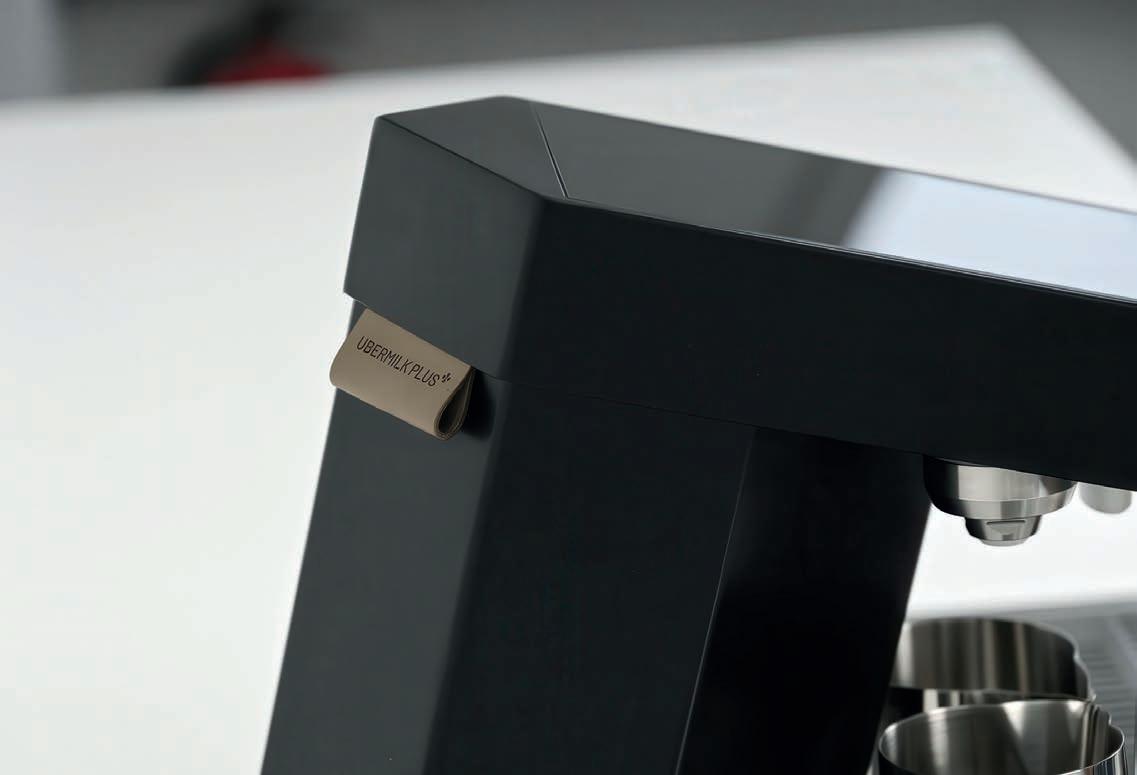




Proca é National Sales Manager Josh Gates explains how a fully automatic co ee setup can rede ne the workplace.
ranke Co ee Machines’ Mytico was developed to represent the dawn of a new era, where automation and the human touch work hand in hand to deliver the ideal cup. No longer just tools for brewing, machines like the Mytico are transforming workplace co ee culture.
Josh Gates, National Sales Manager at o ce co ee machine specialist Proca é, says the Mytico becomes the focal point of any space it occupies, sparking conversations and drawing attention back to the art and process of making co ee.
“I o en describe the Mytico as the new water cooler. It’s not just a machine you walk up to, press a button, and then go back to your desk. It’s a conversation starter,” he says.
Josh says the Mytico delivers exceptional quality and consistency without requiring extensive training, all while producing up to 300 cups of co ee per day.
He recalls one installation in a Sydneybased o ce where, at rst, most of the employees were intimidated by the machine. Although elegant and sleek, he says it looks quite imposing in an o ce environment.
“Once people understood the process, it became less intimidating. For example, with the Mytico Due, you just ll the jug to the line, choose your milk, decide if you want hot milk, latte art milk, or extra froth, and then press a button. e machine does the rest,” says Josh.
“It was great to see people go from not wanting to touch it at all to con dently steaming their own milk. ey wanted to learn because they had a reason to do so.”
Josh says Australians demand exibility and choice, and the Mytico gives them the con dence to deliver on these without any prior experience.
“In Australia, we have a very advanced co ee culture, and people want to feel like they’re getting something special. Being able to customise your co ee is key, which is something many automatic machines do not o er,” says Josh.
With the rise of plant-based milks, Josh says almost half of co ee drinkers now want an alternative milk option, which is made possible thanks to the machine’s S3 automatic milk frother.
“ e Mytico allows people to con dently use plant-based milks. A great example is an o ce in Sydney, where the director wanted a machine that would allow clients to make their own co ee,” he says.

Josh says that Proca é allows o ce workers to feel like baristas, o ering the quality and consistency of a seasoned pro.
“With the iQFlow and brewing system on the Franke machines, you avoid the issue of inconsistent co ee that’s common in workplaces with commercial equipment,” he says.
“If the person making the co ee isn’t focused, you’ll end up with varying shots, uneven tamping, and unpredictable results. at means some people get great co ee, and some don’t, which can make your co ee machine feel like an expensive piece of furniture.”
e Mytico solves this problem by o ering consistent espresso, so users know exactly how it’s going to pour.
“We can set metrics like 28-second extractions and speci c volumes so you know every cup will be the same,” says Josh.
“And when it comes to milk, the Mytico allows you to texture it to the perfect temperature, regardless of skill, which is critical.”
e machine features two touchscreen displays for easy navigation and customisation, and a direct water connection or external tank option. Moreover, it’s self-cleaning, with minimal manual interventions and automated maintenance cycles.
“To purge the steam wand or run a rinse cycle, it’s just a simple ick of the lever and the machine takes care of itself,” he says.
What truly sets the Mytico apart from its automatic counterparts, according to Josh, is its customisable features.
“You get two co ee modules, which
are essentially two fully automatic co ee machines in one, and they can be fully customised to do exactly what you want,” he says.
“You can use any type of milk or milk alternatives and steam it yourself or use the automatic steam wand to get that silky smooth milk texture.”
To make the transition to automation as simple as possible, Proca é ensures a smooth installation process and guides its customers on how to get the perfect texture and quality for their co ee.
What’s more, Franke Digital Services features back-to-base reporting so ware that allows Proca é to monitor various aspects of the machine, such as consumption, water lter usage, and cup counts.
It also sends error messages, enables remote troubleshooting, alerts for cleaning, and noti es Proca é when beans need to be re lled and grounds containers emptied.
“We believe it’s more than just a workplace solution, especially when we’re facing labour shortages and cost-of-living challenges. Investing in technology like this helps customers maintain both consistency and quality,” says Josh.
“As the demand for high-quality co ee grows across all sectors, automation is becoming an increasingly valuable tool. Ensuring consistency while addressing operational challenges makes solutions like Mytico a smart choice for the future.”
For more information, visit mytico.franke.co ee
Brambati’s CEO on 80 years of leadership in co ee processing, navigating the challenges of the 20th century, and how the company stays ahead of the curve.
Throughout modern history, roasting equipment specialist Brambati has played a signi cant role in many co ee beans’ journeys from plant to cup, ensuring precision at each stage of processing.
As the company celebrates its 80th anniversary in 2025, President Fabrizio Brambati re ects on how the company has helped shape the global industry while navigating the ebbs and ows of war, political tension, and economic downturn.
He says eight decades of agility, resilience, and a focus on technological advancement combined with strong family values have been the key to longevity, and have allowed the company to respond quickly to shi ing market trends. is agility can be found at every turn of the company’s history, but most notably at its origins.
Francesco Brambati founded the business in 1945, shortly a er World War II, initially focusing on wheat mills and manufacturing plants for the milling industry.
As the number of mills declined, Francesco identi ed new opportunities and pivoted towards handling raw materials, starting with our and semolina. Over time, the business expanded to include a range of products such as beans and sugar, before eventually entering the co ee industry.
Now in its third generation, Fabrizio and his cousin and Vice President Andrea are at the helm, still deeply involved in the broader food industry by providing systems for raw material handling, biscuit production, and snack foods. However, co ee processing remains a core element of the business.
Fabrizio notes that the company’s generational ties have been an asset in its overall success as well as creating strong relationships with both employees and customers.
“Being a family business, the biggest advantage we have is that decisions are made quickly: we’re all aligned with the same goals, which helps us move forward in a clear direction. e close relationships we have with our team and customers also creates a shared sense of purpose,” he says.
“It feels as though we’re all working together, and it creates a strong team spirit.”
e company’s international journey began with the second generation of Brambati, led by Fabrizio’s father and uncle.
“In the late 1960s and early 1970s, we
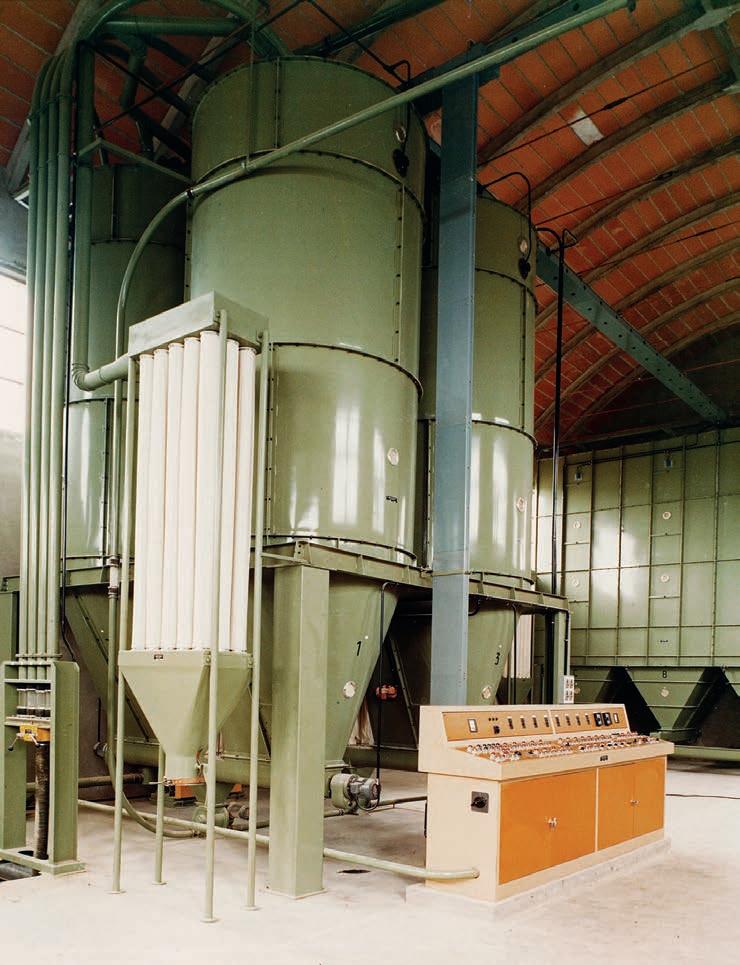
expanded beyond Italy, particularly into the Americas and into Central and South America,” says Fabrizio.
In the early 1990s, due to political instability and import taxes in several markets, the company shi ed its focus east, targeting regions such as the Middle East, Asia, and Russia. is strategic pivot has since proven invaluable, allowing Brambati to tap into these emerging markets today.
“Nowadays, these markets, especially Asia and the Middle East, are some of our most important, though Europe remains a signi cant part of our historical market,” he says.
Fabrizio says Australia was one of the key environments for the company’s expansion.
“Australia has been a target market for the company for several years now, not only because of its quality and focus on raw materials but also because it is at the forefront in worldwide trends and fashions,” he says.
“Currently about 80 per cent of our products are for export, and we have branches outside of Italy, including in Melbourne, Australia, and Chicago, United States. But the main production and manufacturing still happens in Italy.”
More recently, the company’s diversi cation in the broader food industry has allowed it to adapt to challenges such as the uctuations in the cost of green beans.
What’s more, Brambati’s commitment to research and development (R&D) keeps it
ahead of the curve as it constantly identi es opportunities to improve e ciency, reduce costs, enhance emission control systems, and tailor its solutions to meet the speci c needs of each client.
“Every year we invest heavily to ensure our technology stays ahead of the curve,” says Fabrizio. “We’ve managed to stay competitive by investing in R&D and maintaining exibility in our systems, with every plant and machine we design tailored to the needs of the customer.”
He explains that a machine sold in Canada might di er from one sold in North Africa or Australia, due to di erent market requirements and conditions.
“ is exibility has allowed us to work across the globe, regardless of local challenges,” he says.
Brambati’s longevity is driven by producing 100 per cent of its projects in-house, ensuring quality, innovation, and full control over every stage. is approach is designed to deliver seamless customisation, adaptation to market needs, and independence from external suppliers.
“Everything is developed in-house, from the mechanical parts to the control systems, including the so ware that manages the installations,” says Fabrizio.
As such, Brambati has helped drive the industry forward with its technological
advancements. is includes being among the rst to innovate with new drum shapes and the use of stainless steel for roasting systems as well as leveraging the company’s wheat milling origins to propel co ee grinding forward.
“We also made advancements in grinding technology, especially with microgrinding using roller grinders. is was a huge leap forward, particularly since we came from the wheat milling background,” he says.
anks to its commitment to R&D, he says Brambati’s control systems have become increasingly user-friendly over the years. Today, the company’s machines provide real-time data on performance, with preventative so ware to help avoid potential issues before they arise.
“ is ability to predict and prevent problems has been a signi cant advancement and helps our clients maintain smooth operations with minimal disruptions,” says Fabrizio.
As technological development accelerates and sustainability becomes a key focus, the company is committed to staying ahead with a focus on alternative energy sources for its systems to improve e ciency and sustainability.
“Sustainability is a big focus for us, and we’ve been integrating it into our processes
for the past few years. It’s not just about being more eco-friendly, but also improving the e ciency of our production,” he says.
“As we look to the future, we’ll continue to invest in technology, e ciency, and sustainability, and we hope to nd alternative energy sources for our systems. We want to stay ahead of industry trends and keep pushing the boundaries of innovation.”
For Fabrizio, his time at the company has been de ned not by a single achievement but by the company’s steady growth and evolution over the years.
“It’s been incredibly rewarding to see the company evolve over the years, and the satisfaction of seeing customers happy with our products is what drives us. I take pride in the long-standing relationships we’ve built with customers – some have been with us since my grandfather’s time,” he says.
“To see the company grow, expand into new markets, and increase its presence worldwide has been a huge accomplishment.”
In October 2025, Brambati will mark its 80th anniversary at HostMilano, celebrating with the global industry and showcasing eight decades of innovation and resilience.
For more information, visit brambati.it


Rancilio Group’s advanced brewing technology is designed to deliver consistent and high-quality co ee across its range of espresso machines.
Paul Baker, Product and Sales Manager for Australia and New Zealand at Mo at, Rancilio Group’s regional distributor, brings more than 21 years of expertise, primarily in co ee roasting, to the table – from boutique artisan roasting to quick service restaurants, and more.
But the buck doesn’t stop at Paul’s experience – Rancilio’s range of brewing technology is designed to meet the needs of a dynamic and ever evolving industry. From personnel to equipment, the company knows what the market wants when it comes to the ideal extraction.
“ e focus should be on delivering excellent co ee into the cup, and Rancilio has made signi cant strides in that area,” says Paul.
“ ey’re continuing to invest in technology, and this will only improve the quality and consistency of the brew. As a co ee roaster myself, having owned a co ee company, what truly matters to me is what’s in the cup. at’s the key.”
Rancilio’ Steady Brew (SB) unit is a game changer, according to Paul. Traditionally, single-boiler units with a heat exchanger
run quite hot – around 93 degrees Celsius. SB technology builds on the traditional thermosiphon system and introduces a set of innovative features designed to improve the performance of all single-boiler espresso machines.
By keeping the water temperature stable during extraction, SB is designed to ensure excellent thermal stability, reliability, and maximum repeatability, both during busy periods and in low-usage conditions. anks to the four position T-Switch functionality, a di erent extraction temperature can be set for each group, even for single-boiler co ee machines.
With the boiler adjusted to one bar, a temperature of approximately 90, 93, 96, or 99 degrees Celsius can be set on each group and the right extraction temperature for each type of co ee available.
“ e quality of the brew Rancilio machines produce is incredibly consistent,” says Paul.
He explains that while Australian roasters do not take the beans past the second crack – the sound the beans make as they roast, serving as an important indicator for roasters to time the roast and achieve
the desired avour pro le – European roasters o en use higher temperatures to take the beans to the third crack and beyond, resulting in a di erent moisture level and avour pro le. e SB unit ensures that, regardless of the approach, the co ee tastes great.
e SB technology is now standard across all single-boiler units in the Rancilio range, from the entry-level Classe 5 models all the way up to higher-end Classe 11 and Classe 20 units.
“ ese machines produce the kind of quality that cafés and customers expect.
e Steady Brew unit brings a level of consistency, and quality is maintained across the entire range, from entry-level to more premium models. You get consistency on par with a twin boiler machine,” says Paul.
And for those looking for a more specialised, artisan-focused machine, the multi-boiler units like those found in the Rancilio Specialty RS1– a Specialty Co ee Association-certi ed espresso machine –are more suitable as they can o er control over di erent co ee roast pro les.
In these systems, temperature pro ling
adjusts the temperature to achieve the desired co ee characteristics. For instance, if users are working with a lighter or medium roast, they’ll want to hit the co ee at a lower temperature, around 88 to 89 degrees Celsius, to bring out the right avours. is ensures the co ee is not scorched at the start of the extraction.
“ is kind of temperature control is a key feature in specialty machines, such as the RS1, which o ers more precise boiler management and temperature ow,” says Paul.
“ e system combines cold water with the existing brew temperature, adjusting it to achieve the ideal extraction pro le. is level of control is crucial for those looking to dial in speci c avour pro les while maintaining consistency and quality in every shot.”
Meanwhile, with Advanced Temperature Pro ling, which is available in the RS1, baristas can increase or decrease the temperature of the water dispensed during espresso extraction by up to 5 degrees Celsius.
By adjusting the temperature, variable results can be achieved in terms of sweetness, acidity, body, bitterness, and astringency.
“RS1 allows you to customise each espresso recipe by adjusting di erent temperature pro les, thanks to Advanced Temperature Pro ling technology, as well as regulating pre-infusion and post-infusion,” says Paul.
Pre-infusion and post-infusion are available with Rancilio Specialty RS1 and Rancilio Specialty Invicta. With these technologies, the barista can switch between mains or pump pressure during the initial stage or at the end of the extraction. is helps evenly dampen the co ee, reduce channelling, extract a full-bodied avour, and reduce bitterness and astringency.
Pre-infusion at low pressure helps to saturate the co ee puck before extraction. Paul says it facilitates the transfer of more positive aromas into the cup and gets more uniform extraction. Water carries soluble and insoluble compounds to the cup to create a taste with body, greater complexity, and intensity.
In the nal stage of extraction (postinfusion) most of the desirable compounds are already in the cup. Here, low water pressure reduces bitterness and astringency.
While many café owners are primarily focused on what’s in the cup, understanding techniques like pre-infusion can signi cantly improve the quality of the brew.
“A lot of café owners may not fully grasp how the co ee machine functions.

For those looking for a more specialised, artisan-focused machine, the multi-boiler units like those found in Rancilio Specialty RS1 can offer control over different roast profiles.
Pre-infusion, especially in the Australian market, has become a standard practice. It’s important for baristas to understand this process to ensure co ee is brewed correctly, avoiding uneven extraction or overly harsh avours,” says Paul.
For domestic co ee brewers, the Silvia Pro X is a professional dual-boiler co ee machine speci cally designed for preparing the best espresso at home. By activating the so infusion function, water at reduced pressure from the co ee boiler is gently distributed to the co ee panel. is function, with adjustable duration from 0 to 6 seconds, allows the co ee panel to be prepared in the best possible way and promotes a smooth and e cient extraction. is preserves and enhances the sensory characteristics of each type of blend or single-origin co ee.
“ e key to managing these elements e ectively is understanding that the co ee bean’s moisture levels are crucial. Proper control over the extraction process allows for a better overall result, giving the barista the exibility to produce a higher quality cup,” says Paul.
Paul says the Silvia Pro X delivers the consistency and quality comparable to a commercial machine with a dual boiler. It has electronic control over water and independent regulation of di erent temperatures for both co ee extraction and steam delivery, which are easily managed via the display buttons.
“ e Rancilio Silvia, for example, has
been around for about 30 years. Over time, the Pro X model was introduced, which features upgrades like two PID temperature controllers in the boiler. ese keep the heat consistent and stable, o ering extremely precise temperature stability, shot a er shot,” he says.
“ ey’ve essentially brought commercial-grade technology into the home and small o ce market, making these machines more accessible to a wider range of users.”
Technology-wise, Rancilio is leading the way with a research and development team focused on incorporating advanced technology into models for better brewing.
However, the company’s brewing technology is not the only innovation at the forefront.
Rancilio has recently introduced the iSteam Pro, an automatic steam wand available as an option for the Rancilio Classe 20 and Rancilio Specialty Invicta models.
“You want consistency, and for machinery, it’s all about low maintenance. ese machines can run for 10 to 12 years with minimal maintenance, provided you have a good preventative maintenance program in place,” says Paul.
“And that’s exactly what you get – a machine that is cost-e ective, easy to run, and requires very little upkeep, all while delivering exceptional co ee.”
For more information, visit ranciliogroup.com


David Harrison, Onboarding Specialist at Campos Co ee, reveals how to design a café for maximum ow and e ciency.
When putting the plans together for your rst café, it can be easy to get carried away with the look and feel of the place and let the logistics slip to the back of your mind. A streamlined work ow is essential for a successful café, but thinking about the dimensions of equipment and counter-space e ciencies aren’t as sexy as selecting colour palettes, comparing brand logos, or sampling brunch dishes.
What’s more, knowing what’s needed to maximise ow and e ciency requires experience. First-time café owners may have worked in hospitality, yet orchestrating the right equipment and workspace for the speci c venue, team, and clientele is a whole di erent ballgame. at’s why Campos Co ee in Sydney employs a full-time Onboarding Specialist whose sole focus is to help new cafés and expansions succeed.
Having worked as a barista for more than 20 years, Campos’ Onboarding Specialist David Harrison knows his way around a co ee bar.
“ e main part of my role is working with new accounts in the very early stages,
when they’re planning out their café. I’ll help them design their work ow, select the best equipment for their setup, and provide any training their team might need,” he says.
“Opening a café can be quite nervewracking, so I’m there to help the process go smoothly. We are very proud of our co ee, so we also want to provide the knowledge and equipment to ensure it is prepared as it should be experienced.”
When embarking on a new co ee shop project, David says one of the rst things to consider is the basics of the business: Who is the client base? Is it going to be high or low volume? Will it be mostly sit in or takeaway?
“Knowing the answers to these questions is essential as they will form the basis of the work ow of the café. Once you know this, it’s time to get your roaster involved to help design the work ow,” he says.
“One of the biggest problems we see is owners steaming ahead and only getting the roaster involved once the shop designs are nalised or even executed. is can cause problems to arise as there might not be
adequate plumbing or electricity to support the equipment, or enough space on the bar to facilitate an e cient work ow.”
David says he normally gets involved around the design stage and works alongside builders to ensure the space can support the desired co ee setup.
“Locking in your roaster early is very bene cial. O en, you will have signed a multi-year contract, so that roaster wants to support and invest in the business to help it succeed,” he says. “Start building the relationship early and lean on their experience when planning.”
ere are many elements to consider when planning a café, but once you’ve ironed out the basics of client base, location, and style of venue, David recommends using this information to map out the co ee bar work ow, identifying any bottlenecks, and resolving them before opening.
To do this, you’ll need to have your drinks menu con rmed before the design stage is complete, to allow space for all the necessary equipment.
“You need to work out how much


counter space you’ll need. For example, if you want to serve batch brew you’ll require space for a brewer, or if you’re going to have a number of co ees available, you’ll need multiple grinders,” he says.
“You’ll also need to consider the number and skill level of the baristas to make space for additional equipment such as automatic milk steamers and tampers.”
And it’s not just the work ow behind the bar you’ll need to consider. David says having a clear menu and area to order is also essential.
“Place the menu in a clear space so it’s easy for customers to see as soon as they enter the venue. It’s also important to have an obvious place where customers can order that won’t cause any congestion issues,” he says.
“You want to make it as easy as possible for customers to order, without causing any barriers that might result in them turning around and walking out.”
David says co ee machine placement is a crucial element in reducing the risk of bottlenecks.
“If you’re operating a mainly takeaway venue, you need to ensure the co ee machine placement, pick up location, and ordering point of sale area are sensibly located so you don’t have people waiting to pick up their orders in the way of customers wanting to place an order,” he says.
Once all these elements are in place and the equipment selected to suit the venue, David recommends road testing the work ow multiple times to highlight any of those pesky bottlenecks. He also suggests doing a so launch to test the system in a real-life café scenario, but with a little less pressure than the opening day.
Before the grand opening, the new team will need to be trained so they’re up to scratch. Knowing who your dream team are going to be before launching may even in uence some of the equipment and work ow decisions.
“I think having a great barista can be more important than having a great machine,” says David.
“It’s vital that your team have the right training and not only know what they’re doing but are also comfortable with the role they play at the venue and the equipment they are working on. ey need to be familiar with the co ee and food menus too, so they are able to answer any questions customers could ask.”
Dave recently worked with the team at Black Grain to launch the café group’s eleventh New South Wales venue. He says that even with customers who are seasoned pros at launching co ee shops, Campos
provides valuable insight and advice.
“I worked with Founder David Dib and the team during the installation phase to best utilise the space and design the work ow. Every café David opens gets better and better, and the new space in Greenacre is no exception,” says David.
“When you have a recipe for success that works at other venues, when a new venue is launching as part of that group it’s about replicating that and adapting it to the new location, considering the local demographic and venue type.”
David Dib, who has 25 years’ experience in the hospitality industry, says the support
David Harrison and Campos has provided has been invaluable.
“I launched my rst co ee shop eight years ago and have been working with Campos from the very beginning. David plays a huge role in ensuring all our installations go smoothly – he considers everything from the plumbing to the power supply to the sta protocols,” he says.
“As I’ve expanded, David and Campos have been there every step of the way. eir service is excellent – as is their co ee.”
For more information, visit camposco ee.com
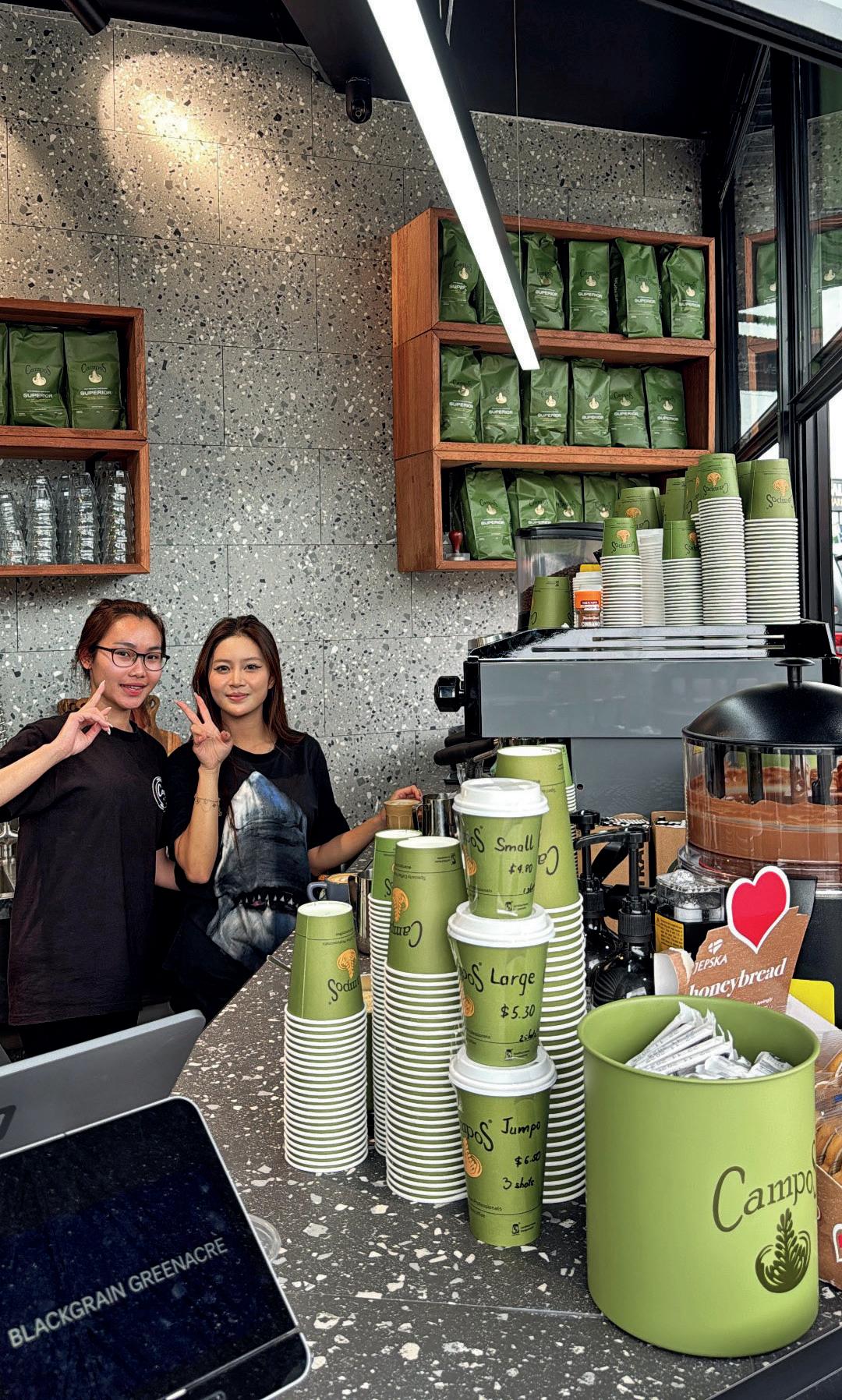
Milklab’s drinks programs combine innovative flavours, seasonal ingredients, and trending concepts to attract and engage customers.

How one barista plant-milk brand helps cafés to innovate their menus and remove the guesswork from identifying emerging trends.
Like all generations that came before it, Gen Z is breaking the mould. From eschewing alcohol to bringing back Noughties fashion, the under-28s are leading the charge when it comes to trends – including co ee.
Milklab has done its research and knows Gen Z loves to experiment with avours. From unique combinations to bold twists and innovative creations, drink variety and air are on the rise. To stay in tune with emerging fashions and capture the attention of this dynamic demographic, Milklab is working closely with cafés across Australia. e barista plant-milk brand’s strategic drinks programs, such as Summer Sensations, involve sharing curated beverage o erings that combine innovative avours, cost-e ective recipes, and trending concepts with cafés to attract and engage customers. ese programs unlock a plethora of possibilities to cater to Gen Z’s discerning palate while also boosting cafés’ bottom lines.
“We wanted to create a program that could be taken to cafés, especially those that may be resource poor and not able to spend time researching emerging trends. We wanted to give them everything they need to take advantage of this opportunity,” says Milklab Brand Manager Melanie Ung.
“When designing this program, we were intentional about enabling cafés to attract new customers, whether that’s the Gen Z audience or simply upselling existing customers with higher-margin cold drinks.” e programs are designed to give cafés a way to stay on top of trends without having to dive deep into data or constantly compare themselves to others. For its Summer Sensations program, Milklab identi ed a key insight in the café industry –the rise of iced drinks.
“While cafés could choose to simply promote their iced lattes more, this program equipped them to take it to the next level. For venues that may not be up to date with
drink trends, this was a way to attract a new generation of customers who may not have visited their café before,” says Melanie.
She adds that the programs are designed to take the research and development costs and trial-and-error process out of innovating menus, because not every café has a mixologist on sta , a team that are on top of the latest avour fashions, or the time to research and experiment with di erent recipes.
“ is program provides a simple way for them to adopt new trends without spending too much time or e ort on it,” says Melanie.
Not only does it expand menu possibilities, but it’s also cost-e ective. Milklab has carefully considered the costs involved in making standard drinks to ensure there is an adequate markup for cafés.
“We’re aware that every café has di erent costings, so we make sure to compare the drinks’ costs to a standard hot latte based on average RRPs. From a margin

perspective, we ensure cafés would make more money. ere’s no point in giving them a great drink idea if it costs $5 to make and only sells for $6. is is all part of the background work we do to ensure the drinks we suggest are both appealing and pro table,” says Melanie.
Although the avour combinations can be complex, Milklab creates the recipes with ingredients cafés would already likely have on hand.
“Another thing we are intentional about when creating the recipes is ensuring they are as operationally simple as possible for cafés. We aim to use ingredients that cafés are likely already carrying, like vanilla syrup,” she says.
If a new ingredient is needed, Milklab ensures it is easy to source and not rare or expensive. For example, the ingredients for the Summer Sensations matcha recipe included matcha and strawberry puree, and Oreo cookies for the cookies and cream creation.
“Our goal is to make the recipes accessible and not intimidating for cafés,” says Melanie.
What’s more, Milklab has made participation as simple as possible: once on board, cafés have access to recipe cards if they prefer written instructions, or video tutorials for visual learners.
“ e tutorials – made in collaboration
with Golden Brown Co ee – walk through the tips and tricks for making the drinks and how to make the process more operationally e cient in the café,” says Melanie.
Milklab also provides a comprehensive point-of-sale suite to help cafés promote their new drinks. is includes counter strut cards, window decals, and a digital toolkit with social media tiles to promote the new recipes to their online community.
According to Melanie, the Summer Sensations program was a success, with a great sign-up rate and interest from multisite operators looking to roll it out across multiple locations.
Overall, she says more than 600 cafés nationwide took part.
“ e biggest surprise and success came from the level of engagement we saw from the cafés themselves. We received a lot of user-generated content – cafés, sta , and baristas were posting everything from unboxing their kits and setting up the pointof-sale materials to making the drinks and creating creative posts on their own social media,” says Melanie.
When Milklab created the range, the team were eager to o er a mix of drinks that included some simple-but-e ective options and some that were more complex. As a result, participating cafés were keen to adopt the entire range of drinks.
“We included options made with co ee, matcha, and even non-ca einated options to cover a variety of café styles. We initially thought some venues might pick just one or two drinks to roll out, but we were pleasantly surprised that many chose to implement all four signature drinks,” says Melanie.
Building on the success of the Summer Sensations drinks program, Milklab is now preparing to launch a Winter Warmers program. Similar to the summer version, Milklab will focus on blending classic drinks with trending avours to create a selection of recipes that will appeal to a broad range of consumer preferences.
“We’ll be leaning on our Milklab signature drinks and including more of our plant-based range. ese are the main focuses as we plan the next set of drinks,” says Melanie.
“Cafés should stay tuned to our social media channels because that’s where we’ll launch the Winter Warmers program once it’s ready to go live. ey will just need to ll out a form with their details so we can send out their kits, and then we’ll take care of everything they need to create their winter drinks menu.”
For more information, visit milklabco.com
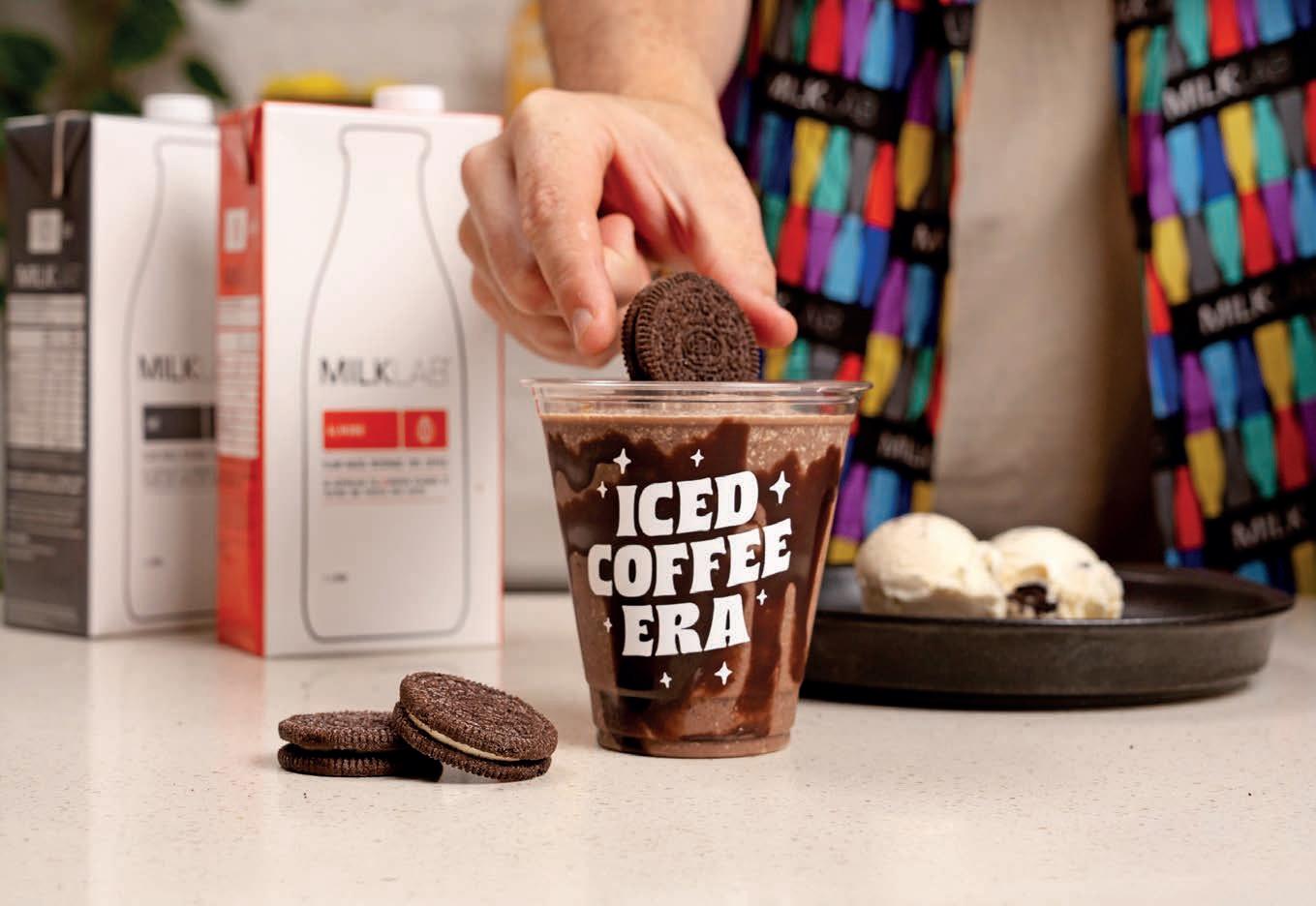

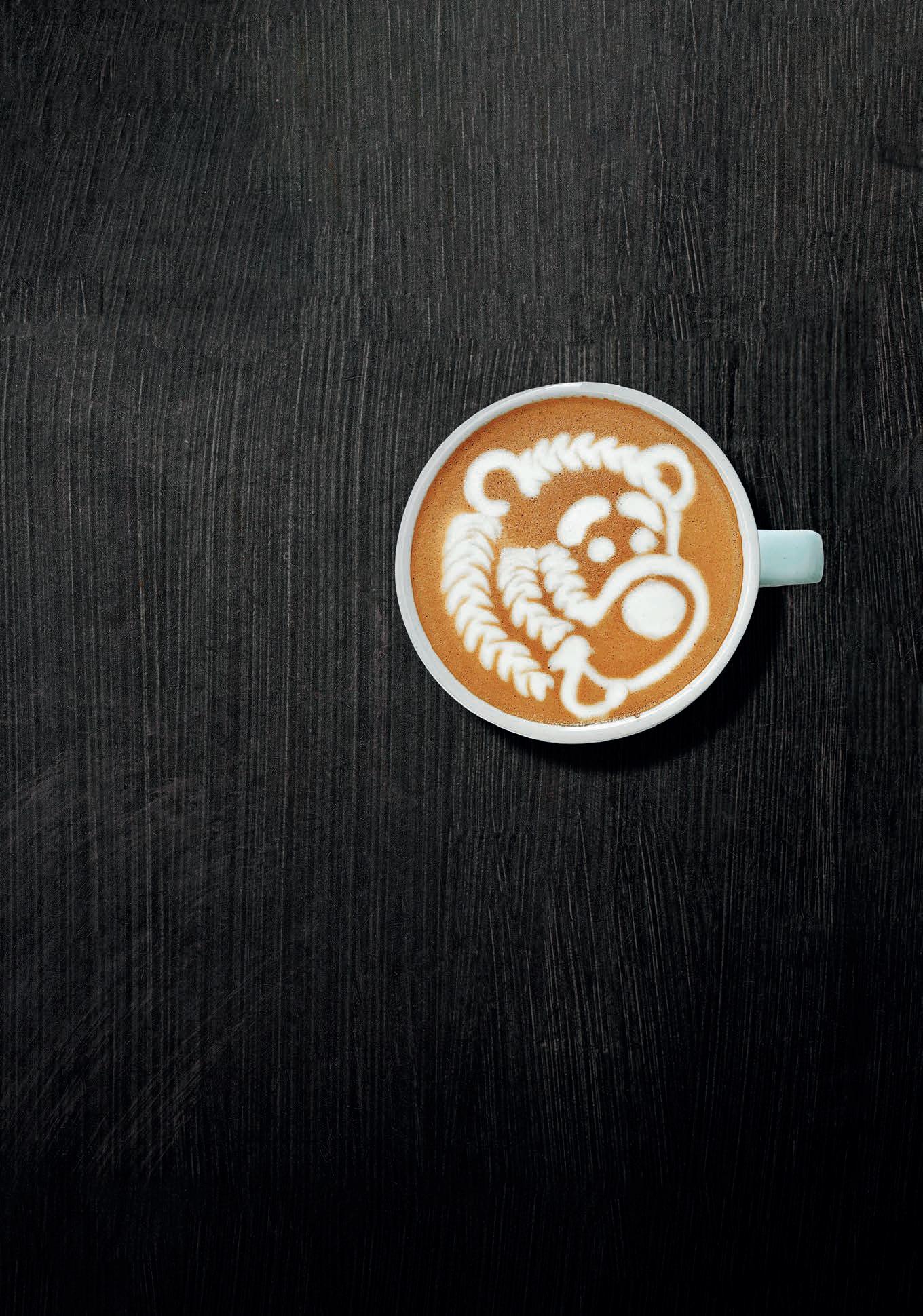

Australian Latte Art Champion Victor Vu shares his baby owl design, part of the family of jungle-inspired pours he presented at the World Latte Art Championship 2024.
Afew days before sharing this baby owl latte art design with BeanScene, reigning Australian Latte Art Champion Victor Vu retained his title in the 2025 competition, marking his third win in the ASCA Australian Coffee Championships.
Despite his experience in the competition, he says he was shocked and honoured to win for a second consecutive year.
“It was a privilege to be crowned as a champion for the third time. It’s actually like dreaming,” he says. “When I look back, it was a long journey and I really appreciate everyone
and every moment that made me become the one today – become a coffee ambassador. Thanks to all of you.”
Victor says he presented the designs he’d created for the World Latte Art Championships 2024 in Copenhagen.
“All the designs I used were from WLAC24, the set I created for last year and I was hoping it will still inspire the coffee community here in Australia,” he says.
“And I believe, this year I did become a better version of myself while presenting these designs.”




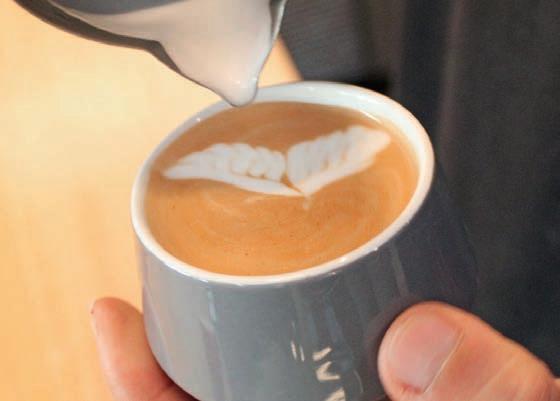
Turn the cup 180 degrees, then repeat on the other side to form a second eyebrow.
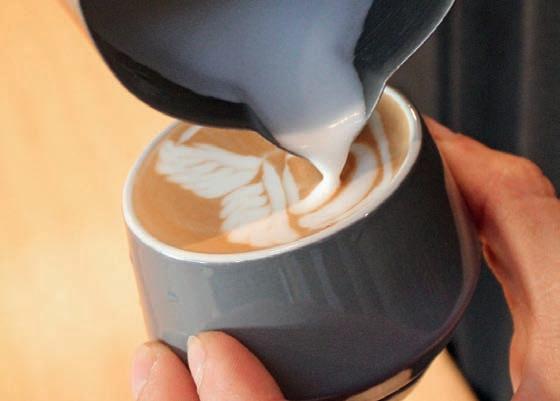
Starting with the left-hand side, from the top of the semi-circle, continuously drag a smaller semicircle to the centre and then drag a straight line under the eyebrow. Inside that semicircle, form another smaller semicircle and meet in the corner of the eye.

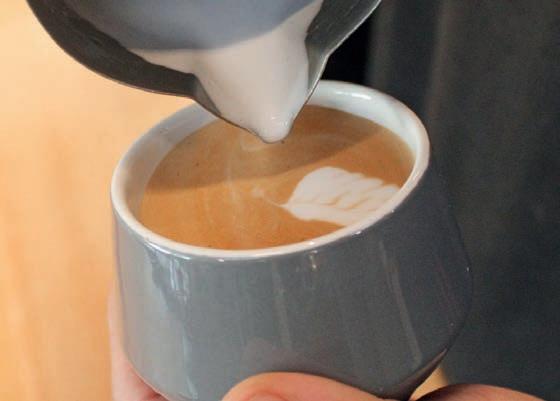
From the top centre of the cup, pour a small five-leaf rosetta towards the right-hand side of the cup, then drag a line underneath to form an eyebrow.
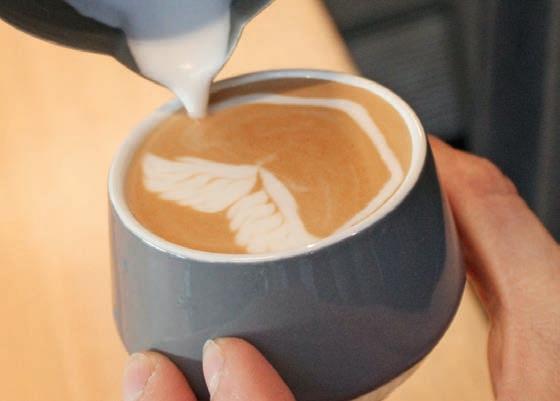
Turn the cup back to the starting position. From the top of the left eyebrow, drag a semi-circle along the bottom of the cup to connect the two eyebrows and form a face.

Repeat on the other side to form the second eye.




e Alternative Dairy Co. team pride themselves on delivering the creamiest pour for the perfect cup. ey never cut corners or compromise, o ering only high-quality, Aussie-made plant-based barista milk that meets café owners’ high standards. e company’s plant-based barista milks are exceptional for texturing and latte art, thanks to rigorous testing with its barista partners. is means cafés can rely on consistent performance. Whether it’s Oat, Almond, Soy, or Coconut, e Alternative Dairy Co. is committed to providing an unparalleled taste experience in every cup. In fact, research from Micromex* found its oat milk to be the number one choice for baristas in Australian cafés. at’s why it’s the go-to plant-based barista milk, cra ed for cafés since 2018.
*(Micromex Research, Australian Café Brand Tracking, July 2024.)
For more information, visit altdairyco.com






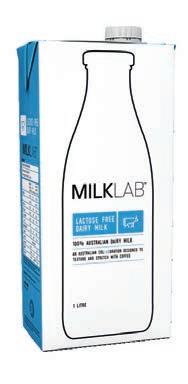

Milklab products are an Australian collaboration designed to texture, stretch and pour with high performance. Developed and validated by experienced baristas and co ee professionals, the brand’s milks complement the avour of espresso co ee and deliver a delicious, creamy taste to elevate the co ee experience.
e Milklab range includes Almond, Oat, Soy, Coconut, Macadamia, and Lactose-Free. e milks come in easily identi able colour-blocked packs with twist-top lids for improved speed of service.
Co ee lovers enjoy Milklab for its delicious taste and smooth mouthfeel that complements espresso co ee. e team carefully source the best quality ingredients from Australia and beyond — this is the key to Milklab’s signature creamy taste.
For more information, visit milklabco.com
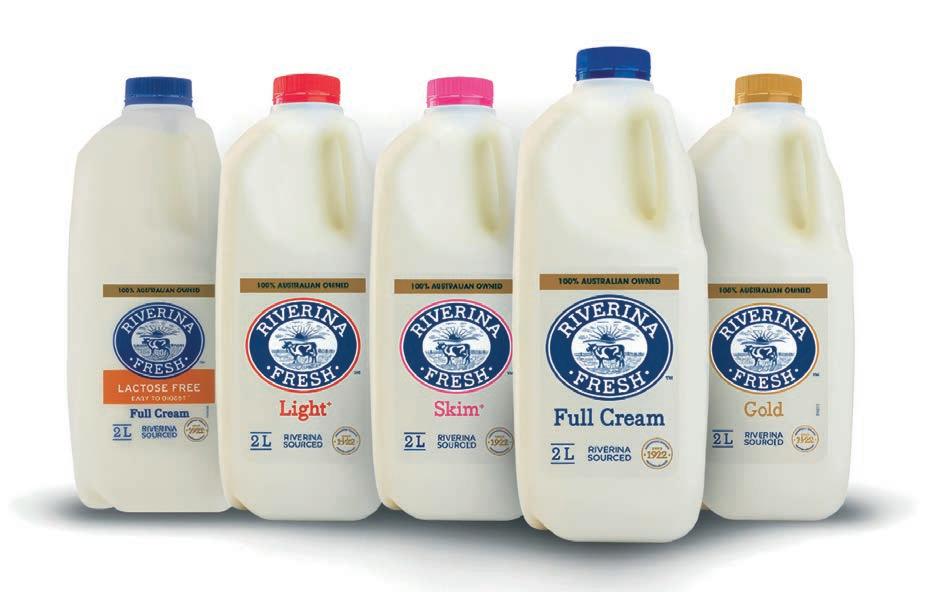

Riverina Fresh is an independent, 100 per cent Australian-owned dairy manufacturer and foodservice distribution business based in the Riverina Region of New South Wales. Operating from the same site in Wagga Wagga for more than a century, Riverina Fresh focuses on producing premium, innovative dairy products. Riverina Fresh milks are highly regarded by leading roasters and baristas for their taste, functional performance, and consistency.
Riverina Fresh has built a reputation as the milk of choice for specialty co ee by focusing on the science and art of delivering quality milk for co ee, understanding the key role of milk composition, the importance of on-farm practices, and the many other factors that in uence the functionality of fresh milk with co ee.
Riverina Fresh Full Cream has a smooth, full-bodied avour, delicious taste and mouthfeel, and is consistently used by Australia’s leading baristas at both National and World Barista Championships.
Riverina Fresh produces a range of milks and creams, and distributes a full range of leading dairy and non-dairy products throughout New South Wales, Victoria, and the Australian Capital Territory to meet cafés’ needs.
For more information, visit riverinafresh.com.au


1/58 Collingwood Street, Osborne Park, Western Australia, 6017
Open Monday to Friday 6am to 2pm, and Saturday 7am to 12.30pm
Like its namesake, Micrology Coffee Roasters in Perth concentrates on the finer details. Owner Daniel Ash says focusing on the minutia is what gives the venue life.
“We hone in on a slightly more scientifi c approach to specialty coffee,” he says.
The venue is a celebration of all things coffee, and Daniel has made this message clear with the setup: the café is at the forefront, with a big window showing off the roasting area, another window revealing the micro-brewery tanks for its cold brew production, and further views of the warehouse team packing and preparing wholesale orders.
“You can see all aspects of production, which is important to us. It tells people we’re really serious about coffee,” says Daniel. “But I think the main thing we wanted in this space was just a fun place for someone to have a cup of coffee. We love the industry and we wanted to share that passion with people in a really welcoming and inviting space.”
This dedication is evident in Micrology’s extensive coffee menu, which features blends, single origins, filter, espresso, pourover, and batch brew options.
“When we were choosing which blend

we were going to serve, we asked our Head Roaster, Mill, what she thought we should do. Through some development we came up with a medium-roast custom blend called Millhouse,” says Daniel. Micrology has a nine-metre coffee bar with a La Marzocco Strada pumping out the café’s takeaway orders. And as patrons move towards the end of

the bar, they will see two Modbar espresso systems as well as two Modbar pourover units.
“Having the Modbar equipment under the counter removes that barrier between barista and consumer. The customer comes up to the bar as you make the coffee, and you can connect with them that way,” he says.
According to Daniel, the pourover is the venue’s point of difference. As most cafés lean on batch brew as their filter offering, he says having the Modbar pourover units is unique and allows the team to make filter coffee by the cup.
Like its carefully curated coffee menu, Micrology offers an equally thought out food menu.
“We’re in a light industrial area, and when people are cruising around 11am for their second cup of coffee, we want to be able to offer them something simple yet high quality in terms of food,” says Daniel.
To complement its coffee offering, the café has a menu of sandwiches with ingredient pairings that are a little more off-beat than a classic sanga.
A popular menu item is the vegan tofu baguette with cherry tomato, roasted garlic, and house-made vegan pesto.
Daniel says coffee serves as cultural and social glue, and to take this concept a step further, he has introduced inbuilt turntables into the ends of the bar.
“We regularly have DJs play on Friday and Saturday mornings,” he says.
“It’s really nice to give people something different to do in the morning. Because, after all, we’re in the wakeup business.”
171 Darby Street, Cooks Hill, New South Wales, 2300
Open Wednesday to Saturday 7am to 10pm, and Sunday to Tuesday 7am to 3pm
Hospitality veteran Kat Honor launched Nourish Cafe and Grocer on Valla Beach on the mid-north coast, starting the venture while her two daughters were young. After 18 years, with her daughters now living in Newcastle, she sold up and is now running a new venue with them in the coastal city.
LOLAs can be found on trendy Darby Street in an historic building that dates back to 1854. The two-storey venue features an open-plan daytime café downstairs, with a cosy cocktail bar upstairs – capturing both the day and night markets. With a chef who’s passionate about native ingredients, LOLAs’ menu celebrates all things Australian, championing ingredients such as wattle seed and saltbush. For breakfast, one of the café’s most popular dishes is the duck egg scramble, topped with house-made chilli oil and served with a duck sausage.
“Another fan favourite is our version of prawn toast, which people are absolutely loving,” says Kat.
“We’re also proud to serve all Australian wines and local beers, focusing on what we can source close to home and showcasing

these incredible, local ingredients.”
Interestingly, Australian native ingredients also feature in the café’s cocktails, with one incorporating roasted kangaroo bone and fat.
“It’s an agave wash infused with the fat to bring out an earthy, authentic connection to the land. It’s one of those really distinctive flavours that showcases our commitment to using native Australian ingredients,” says Kat. Nestled in a vibrant coffee strip, LOLAs

27 Tedder Avenue, Main Beach, Queensland, 4217
Open Monday to Friday 7am to 3pm, and Saturday and Sunday 8am to 3pm
Michael Njam and his wife Evelyn decided to turn the baking hobby she explored during the COVID-19 lockdowns into a bold new venture: Dipcro Pastry.
“The idea for our own patisserie café started during the COVID lockdown when everything was closed. Evelyn has always
loved baking and during the lockdown she spent a lot of time baking at home. After some discussions, we decided to turn her passion into a business and started our own café together,” says Michael.
The café in Main Beach on the Gold Coast specialises exclusively in puff pastry.
“When we started the business, we wanted to be different – something unique that people could really identify with. That’s when we came up with the concept of Dipcro,” he says.
He explains that the name comes from
stands out from the crowd by serving Merlo Coffee’s organic blend. Featuring beans from Nicaragua, Guatemala, Colombia, Sumatra, Papua New Guinea, and Brazil, the coffee delivers fl avours of almond, milk chocolate, and brown sugar.
“We’ve had a long-standing relationship with Merlo since our time at Nourish, and they’ve always been great at looking after us,” says Kat. “They jumped on board with us here as well.”
the idea of ‘dipping into the croissants’, where the filling is inside the pastry, the top is caramelised, and the pastry is then dipped into the filling.
Dipcro began as a solo venue with a single location in Chevron Island, but after growing in popularity, Michael and Evelyn opened a second venue on the Gold Coast.
“We had a lot of people coming from Brisbane, and they wanted a place to sit and enjoy their pastries. They’d travelled all the way to visit us and didn’t want to just take away and head back to Brisbane. This motivated us to open another venue to accommodate all our customers,” he says.
Michael says many people from Melbourne and Sydney seek out Dipcro during their trips to the Gold Coast.
Alongside the house-made croissants, café goers can enjoy Campos’ Superior blend, as well as the Sydney roaster’s single origins for its filter coffee offering.
“Across from where we used to live in Sydney, there was a Campos café and we used to drink their coffee a lot. So, we decided to bring them up to the Gold Coast with us,” says Michael.
As for their plans for the future, Michael hopes to one day bring Dipcro’s croissants to Brisbane, with Sydney and Melbourne in the pipeline as well.
759 Gilbert Road, Reservoir, Victoria, 3073
Open Monday to Friday 6am to 3pm, Saturday and Sunday 7am to 3pm
To complement Melbourne’s vibrant food and coffee scene, Garry Rodakis has brought a slice of Los Angeles (LA) to a little nook in Reservoir.
Sycamore Meadows heroes Californian design with its terra-cotta tiling and countryclub feel. But the café’s muse isn’t Californian architecture but rather Garry’s musical idol: Butch Walker. The singer-songwriter has inspired Garry’s entire fleet of venues – from The Spade in Glenroy to aptly named Mr. Walker in Essendon.
“I wanted to go into hospitality and tie in things that I love. It gives something to draw inspiration from when I talk about the business. I think it’s important that your business represents something more than just a place to eat and catch up,” says Garry.
Café goers can find a menu tying into the LA subculture and leaning into unconventional vegan options, as well as the city’s breakfast burrito trend.
“I love the burritos in LA and I brought them into my breakfast culture at the café. I don’t think it’s really caught on here, but they are massive in California. We do four different flavours and they’ve been on the menu since we opened.”
Customers can choose from the golden tofu, pulled pork, spicy chorizo, or the recently added chicken burrito. Garry says he also likes to keep it simple, with basic toast options also available.
“We’ve introduced a toast plus menu that


has what we call, Simple Avo, which is basically just fresh avocado, tomatoes, and olive oil.
“There’s also a couple of innovative yet simple dishes, such as coconut yogurt on toast with strawberries and honey. This way, people can come in and out for a coffee and breakfast for 20 bucks – I’m pretty proud of that,” he says.
Garry recommends pairing the menu with Lavazza’s Mosaic Retreat blend, which he says has been well received by the locals.
“I’m happy people are enjoying it because I changed blends for quality – for more of a kick in my coffee, and for a little bit more consistency,” he says.
Garry adds that you can’t beat a burrito and latte pairing. Sycamore Meadows takes this to the next level with its innovative signature drinks and unorthodox beverages, such as the vanilla iced matcha latte and lavender latte designed to calm the mind –all inspired by drinks in LA.
“The iced matcha is our favourite and we have new additions coming soon with batch brew and chai getting their own signature drink,” says Garry.
134 Unley Road, Unley, South Australia, 5061
Open Monday to Saturday 6.30am to 3pm, and Sunday 8am to 2pm
True to its name, Pickle in the Middle is a celebration of all things pickled. Luke Halloran, who owns the café with his wife Carli, says it started out in the Central Markets in Adelaide, making toasties where people could choose the pickle they wanted.
He bought the café after it had just relocated to the trendy Adelaide suburb of Unley. Now, it has grown into a busy venue serving a wide range of pickled foods including beetroot-cured salmon, mustard zucchini pickles, pickled radish, pickled watermelon, and pickled carrots.
“We also experiment with different spices to enhance the fl avours,” says Luke.
To cut through some of the acidity, Pickle in the Middle serves the Crompton Road blend from Five Senses Coffee. The café also offers filter coffee with rotating single origins, which change each month, and can be served as cold brew or as a pourover made to order. The café also experiments with its cold coffee offerings, with a strawberry iced matcha as a recent addition, made with Milklab’s oat milk and

coconut milk to create a coconut whip.
“It’s a great option because it’s suitable for most people without needing to change the milk each time,” says Luke. “Since cafés are becoming more plant-based, we use a lot of alternative milks to cater to vegans and vegetarians. Right now, we’re using about 50 per cent alternative milk and
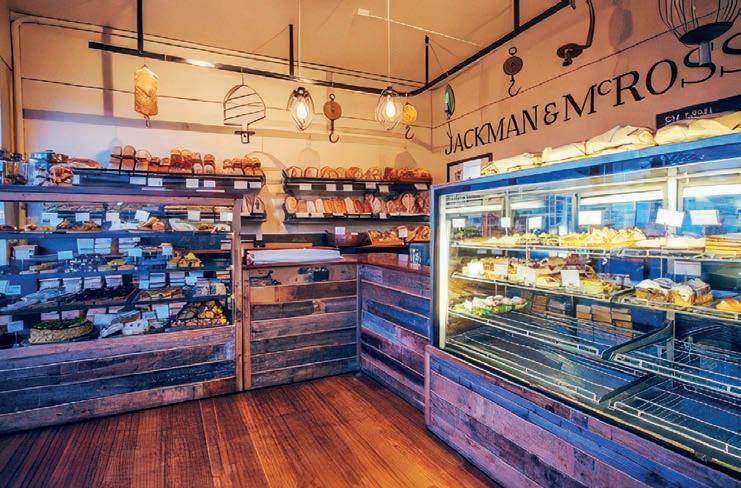
JACKMAN AND MCROSS
57 Hampden Road, Battery Point, Tasmania, 7004
Open Monday to Saturday 7am to 5pm, and Sunday 7am to 4pm
Over the course of its 26 years, Jackman and McRoss has become synonymous with high-quality handmade pies and pastries in Battery Point.
Co-Founders Nerida and Justin McRoss, along with Chris Jackman, entered the
business with innovation at the forefront of their minds. Today, the café and bakery continues to push boundaries, standing out with its quality and fl air.
“When you walk in, it’s a very visual experience. We have large cabinets full of cakes, and it’s very stimulating to the senses – both the smell and the sight. You really eat with your eyes, so it makes an immediate impact. It’s quite an enjoyable atmosphere,” says Nerida.
The bakery display offers visitors a variety
50 per cent dairy, for a total of roughly 500-litres a week.”
In addition to coffee, Pickle in the Middle serves juices, smoothies, homemade fruit sodas, and its own kombucha. And as of April 2025, Luke has welcomed a new addition to the pickle portfolio, with Pickle in the City in Festival Tower in the CBD.
of pies, all made from scratch and filled with locally sourced produce. A customer favourite includes the scallop and wakame pie, which Nerida says is also a big hit with tourists.
“People from interstate seek us out specifi cally for that pie. Another popular one is the rabbit, ham hock, and mushroom pie,” she says.
Alongside its wallaby and rabbit pies, the café also serves the Barista Blend from TasCaffe, allowing customers to enjoy a perfect pairing of local ingredients.
Much like the heritage regulations that protect the historic building housing Jackman and McRoss, the Co-Founders have worked hard to preserve the consistency and creativity that the venue was founded on.
“We’re still here, the two owners, right in the heart of it. In the beginning, it was about being innovative and new, but now it’s about sustaining that. People can still appreciate when you put effort into what you do. Both of us are here all the time, and there’s a lot of effort that goes into it,” she says.
“Back then, it was about pushing forward and achieving something new and different. Being new and different was a big part of our success. Today, it’s still about doing things right, maintaining our values, and continuing to evolve.”
e Co-Founder of Rocket Co ee in Hamilton re ects on 30 years in the industry and being named the best co ee shop in New Zealand.
Name: Glen Crompton
Venue: Rocket Coffee
Instagram: @rocketcoffee
In 1995, with my Co-Founder Glen Woodcock. At the time, there was only one café in Hamilton so Glen and I thought we’d give it a go. Glen had recently visited Queenstown and discovered a café with its own roastery, so we thought we’d do the something similar here.
It’s unrecognisable. In 1995, New Zealand didn’t have a café culture and we were the rst people in Hamilton to introduce a café-roastery. Since then, co ee consumption and the social culture around it have exploded. When we started out, no one knew about specialty co ee. We were just trying to roast the best co ee we could, and that’s been our driving force ever since. I’m really proud of how we’ve evolved and continued to better ourselves every year.
Being the only New Zealand venue to feature in the World’s 100 Best Co ee Shops list earlier this year is pretty hard to beat. A er putting a lifetime’s worth of work into Rocket Co ee, to be internationally recognised was very special.
We were contacted by the competition to let us know we had been shortlisted, but nding out we’d been included in the top 100 was a surprise. We have been so busy since the list was announced, we haven’t had the opportunity to celebrate as a team yet. Our online orders have gone wild and the co ee shop is busier than ever. We’re tucked away down a side street, so people who have lived here for years are only just discovering us.
In an industry dominated by big players, one of the largest issues we face is being able to compete as a small independent roaster. We can’t a ord to give equipment away for free and when trying to secure wholesale accounts that makes it very hard to compete. With COVID and the economic downturn, the past four years have been our most challenging to date.

e co ee industry is going through an interesting period – there’s a rebalancing occurring. e price of green co ee is rising and this will mean an increase in prices for consumers. I don’t necessarily think that’s a bad thing because the focus is being put back on the farmers and encouraging them to grow more co ee while being paid more fairly for it.
Even though it’s unsettling, I think this period of uncertainty isn’t the worse thing that could happen and that consumers will get used to paying a little more. at way, the whole industry becomes more sustainable.

